
Persian rugs, which are made in Iran by skilled artisans, are some of the most sought after rugs available. Persian rugs are highly respected for their quality, durability, and beautiful craftsmanship. A genuine Persian rug, depending on its age, size, and quality of craftsmanship, can fetch many thousands of dollars or even millions. Iran is the world’s largest producer and exporter of any handmade carpets. They supply three quarters of the world’s total hand-woven carpet output.
There are many different types of Persian rugs available on the market. Some are genuine and of good quality, some are machine made to resemble a traditional Persian rug, and some are collectible as antiques, worth exorbitant amounts of money. Buying a Persian rug can be difficult if a buyer does not know what to look for. Many people are concerned about buying a genuine Persian rug and that they are paying the right price for what they are getting.
This guide is designed to offer buyers an overview of the different types of Persian rugs available, including different materials they can be made from, as well as offering tips on how to identify a genuine Persian rug from the non-genuine article. This guide also helps buyers to know what to consider when buying a new Persian rug and gives some useful advice on the best places to buy a Persian rug, including buying on eBay.
OVERVIEW OF PERSIAN RUGS
A Persian rug is one that is made specifically in Iran by skilled artisans. Traditionally, Persian rugs differed from rugs from other countries, such as Turkey, by the style of knot that was used in the fabric weave. A Persian rug that is smaller than six by four feet is known as a Q?licheh, and a rug that is greater than six by four feet is known as a Q?li, or Farsh. Persian rugs offer an attractive floor covering for any type of room or hallway space. They are durable, comfortable, and feature many different attractive designs, patterns, motifs, and colors.
PERSIAN RUG MATERIALS
Persian rugs are most commonly made from wool, although cotton rugs are often seen. There are a variety of different wools that Persian rugs are commonly made from, including camel hair wool, Manchester wool, and Kork wool. Some older, antique rugs are made from silk, although these are very expensive and are less durable than wool rugs. Silk Persian rugs are quite rare and are often displayed as wall hangings instead of used as floor rugs due to their value.
Many new rugs are made from less traditional materials, such as silk blends, mercerized cotton, and synthetic fibers like olefin.
HOW TO IDENTIFY GENUINE PERSIAN RUGS
With the increasing prevalence of imitation Persian rugs on the market, it can be difficult for any buyer to identify a genuine Persian rug from a fake. When spending money on a Persian rug, buyers want to be sure that they are paying a fair price for their chosen rug. There are a few things that any buyer can do to help identify the validity of any Persian rug, including examining the labels, knots, and patterns.
PERSIAN RUG LABELS
Any genuine Persian rug will feature a label on the back. This identifies the country where the rug was made. A Persian rug is one that is made in Iran. A rug made in Turkey, Afghanistan, the Caucasus, Pakistan, India, or Nepal is not considered to be a Persian rug; instead, it is commonly referred to as an Oriental rug.
PERSIAN RUG KNOTS
Traditionally, a Persian rug was made using a single looping knot, while a Turkish carpet was made with a double looping knot. However, contemporary Persian rug makers are more commonly using either of these two types of knots. If buying a genuine Persian rug that the seller claims is old or antique, then it should be made using the traditional single looping knot method.
One way to identify a genuine handmade Persian rug from a machine-made rug is to look at the underside to see if the pattern is visible through the backing. If the pattern does show through, it is a good indication that it is handmade. A machine-made rug tends to have a thick backing, and the pattern will not show through. Also, when folding the rug back on itself and exposing the base of the pile, a handmade rug should show the rows of knots.
PERSIAN RUG PATTERNS AND DESIGNS
Persian rugs are made with particular layouts and designs, and these designs have changed very little throughout history. Many of the designs have been passed down through generations of family carpet weavers. Persian rugs generally feature one of four layout patterns: an all-over layout, a central medallion layout, a compartment layout, and a one-sided layout. Persian rugs also feature particular motifs that have different meanings, and these motifs can be used to identify the region where the rug was made.
PERSIAN RUG WEAVING TECHNIQUES
Traditionally, all Persian rugs were hand woven. A genuine hand - woven rug is far more expensive than a newer machine-made rug. A buyer should not be expected to pay the same amount of money for a machine-made rug compared to a handmade rug of the same size.
HAND-WOVEN PERSIAN RUGS
These types of rugs are considered to be of the highest quality. It takes many man hours to finish a genuine Persian rug. The quality of craftsmanship of a handmade Persian rug is evident in the shape of the patterns and designs on the rug. Persian rugs can behand knotted, hand tufted, or flat weave rugs. Hand knotted is the most expensive type of hand woven rug, and flat weave is the least expensive. Many Persian rugs are made using either horizontal or vertical looms.
MACHINE-WOVEN PERSIAN RUGS
A Persian rug that is machine made is not considered an authentic Persian rug. There are many imitation Persian rugs that can look very similar to a genuine rug, although these should always be much less expensive than a hand-woven rug. If a buyer likes the look of a Persian rug but does not want to spend a great deal of money, a machine-made rug with Persian designs is a great way to have the look that a Persian rug offers without the high price tag.
WHAT TO CONSIDER WHEN BUYING A PERSIAN RUG
When it comes to buying a Persian rug, there are so many options that it can seem a bit overwhelming. Determining a budget is the first step. Then, a buyer should decide where the Persian rug will be placed for sizing purposes. In order to get the best quality rug for any particular budget, it is best to consider the size, quality, and age of the rug.
PERSIAN RUG SIZE
Not surprisingly, the larger the rug, generally, the more expensive the price will be. When looking to purchase a Persian rug, it is important to have exact measurements of what size rug is needed. Persian rugs are available in all different sizes and shapes. Being aware of the size helps to narrow down the search, and being flexible on the size (considering a smaller rug, for example) can reduce the overall price.
PERSIAN RUG QUALITY
The quality of any Persian rug can vary dramatically. Quality affects the value of the rug significantly. There are a few points to consider when looking at the quality of Persian rug, such as knot density and the type of wool and dye used.
PERSIAN RUG KNOT DENSITY
The knot density, how many knots per square inch are present in the rug, is a major contributing factor to the quality of the rug. On average, Persian rugs range from 30 to 300 knots per square inch. Rugs with 30 knots per square inch are very coarse and of lower quality. Rugs with 300 knots per square inch are very thick, of high quality, and generally very expensive.
HAND-SPUN OR MACHINE-SPUN WOOL
Hand - spun wool rugs use wool fibers that are spun by hand. These are considered more valuable as the handmade method gives uniqueness to every different rug. Machine-spun wool rugs give a more even and uniform look to the rug.
SYNTHETIC OR NATURAL DYES
A natural dye Persian rug is generally up to 30 percent more expensive than a synthetic dye rug. Natural dye rugs are more limited in the variety of colors available, and they do not tend to hold their vibrancy and intensity as synthetic dye rugs do. Natural dye Persian rugs are considered more authentic, and therefore, more sought-after and pricier.
PERSIAN RUG AGE
A Persian rug that is 100 years old or more is considered to be an antique. A rug that is between 50 and 99 years old is referred to as a semi - antique rug. Antique Persian rugs are considered to be a very collectible item. And a well-kept, genuine handmade Persian rug will increase in value over time.
CONCLUSION
A Persian rug is one that is made in Iran by experienced and skilled artisans. Buying a Persian rug does not have to be a daunting task. With a little knowledge about what to look for in a Persian rug, any buyer can identify a genuine Persian rug from an imitation. There are a number of factors that affect a rug’s value and price. Its age, size, the materials it is made from, its knot density, whether it is made from natural or synthetic dyes, and whether it is made from hand-spun or machine-spun fibers all affect the price of any particular Persian rug. Many genuine hand-woven Persian rugs are considered to be collectible, and an antique rug is one that is at least 100 years of age. Buying a Persian rug from a reputable dealer will offer buyers peace of mind that they are paying a worthy price for the chosen rug.
Buy Persian Persian Handicrafts at: www.persianhandicrafts.com
Facebook: https://www.facebook.com/persispersianhandicrafts
Google+:https://plus.google.com/+Persiscraftspersianhandicrafts
Twitter: https://twitter.com/persiscrafts
Article Source: Click Here
Please Join Our Social Networks to Support us:
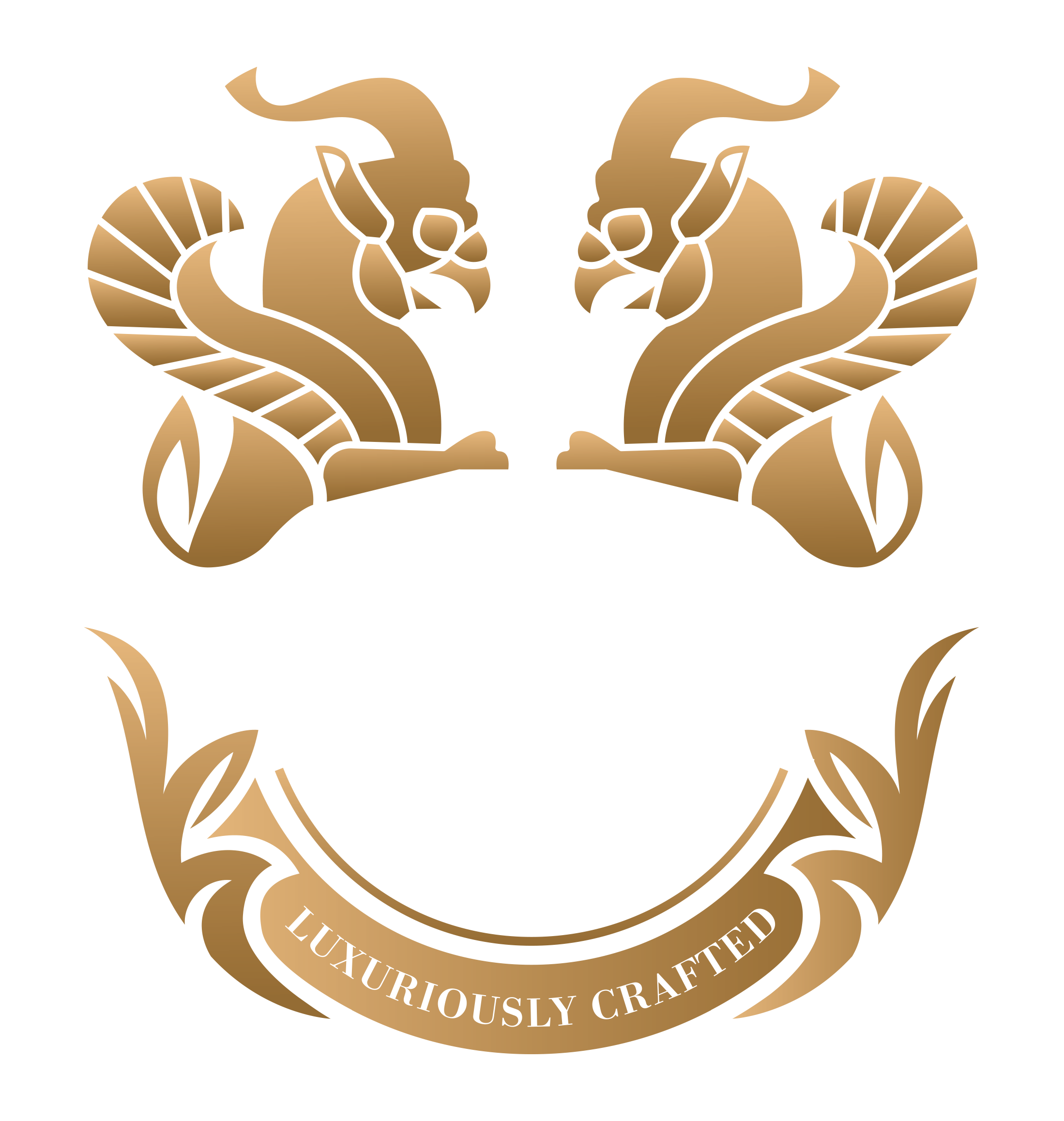
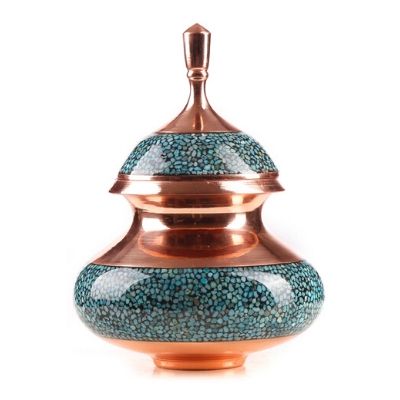
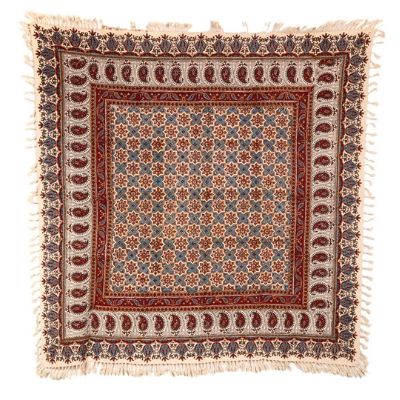
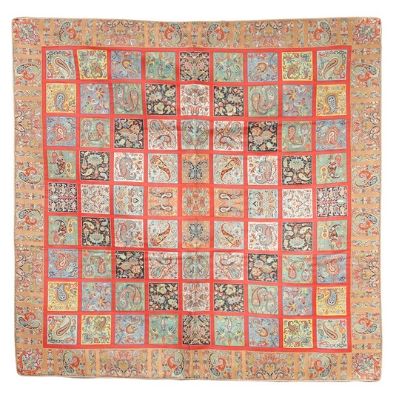
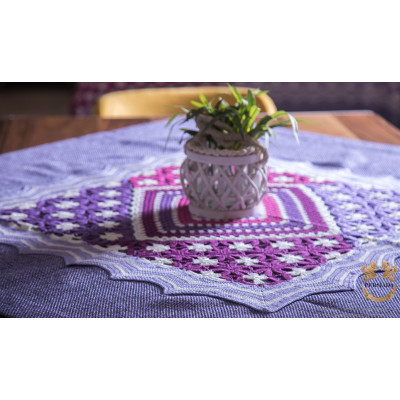
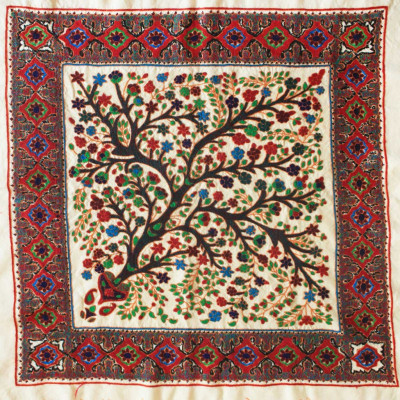
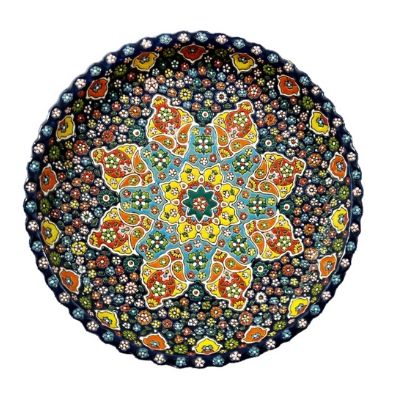
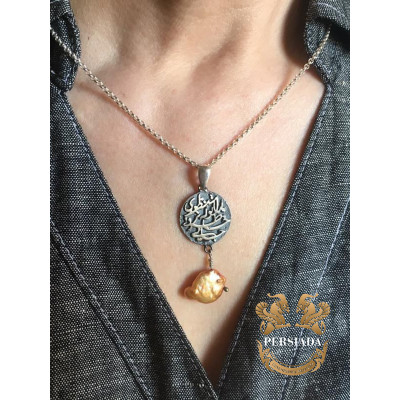
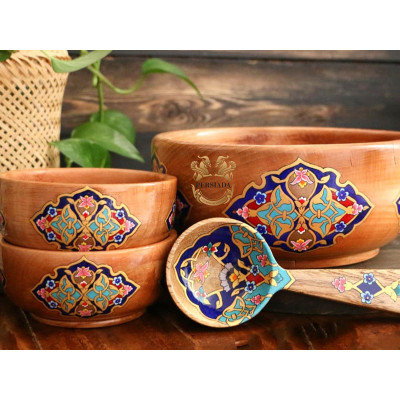
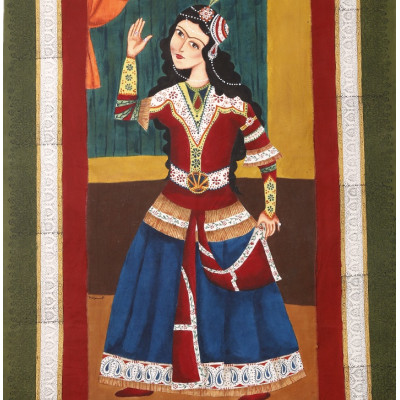
-400x400.png)
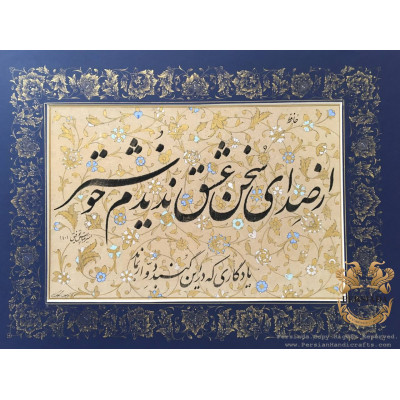
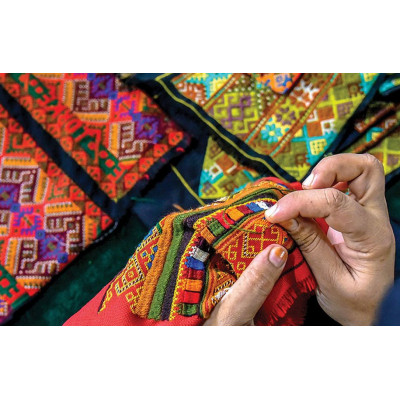
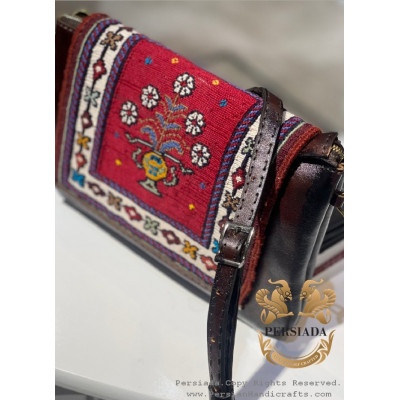
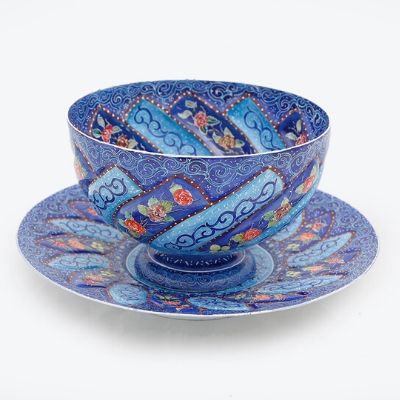
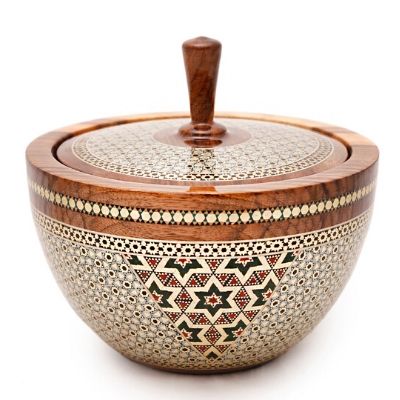
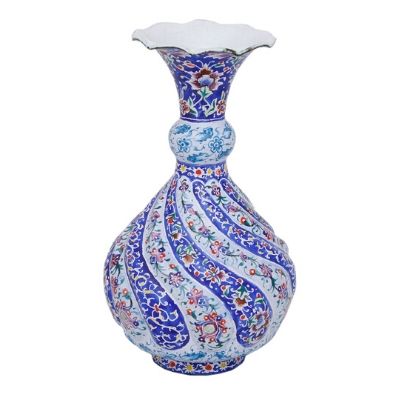
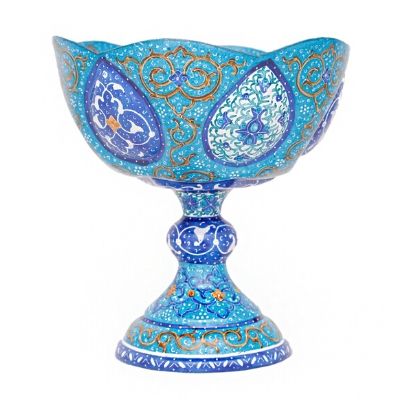
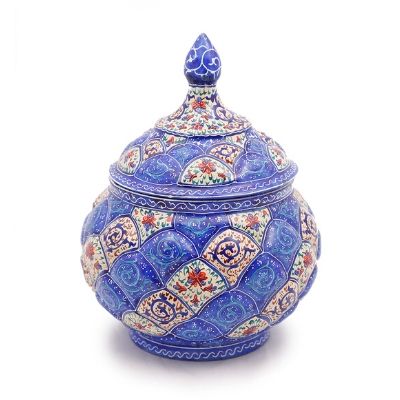
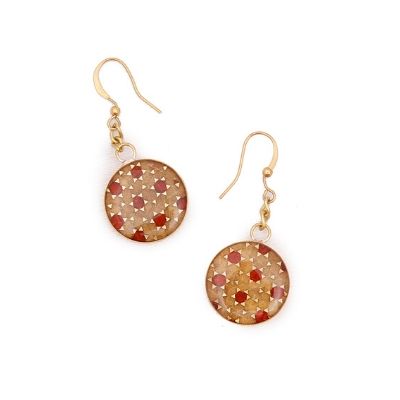
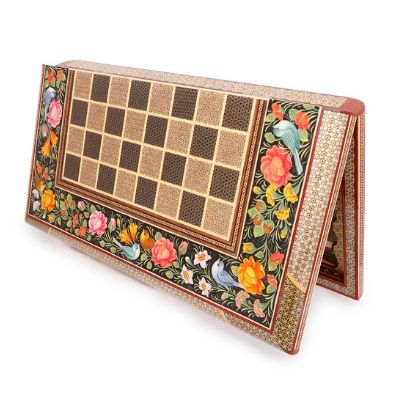
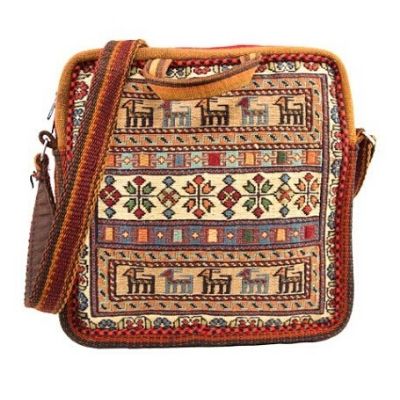
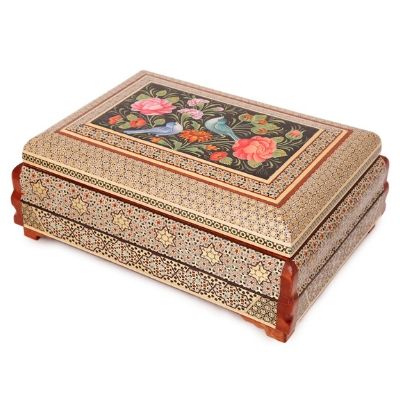
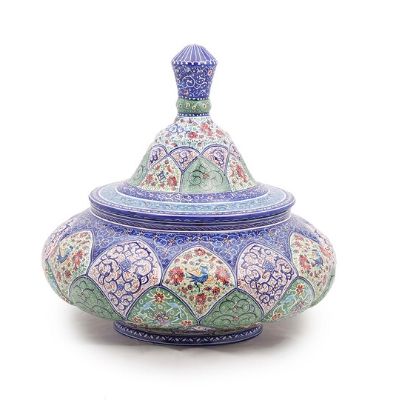
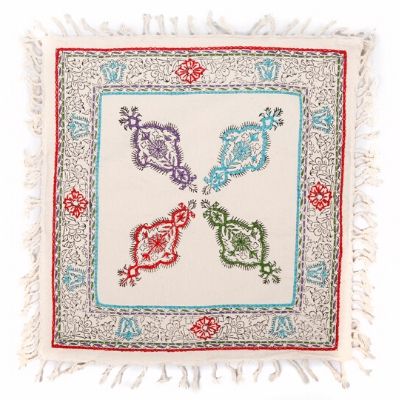
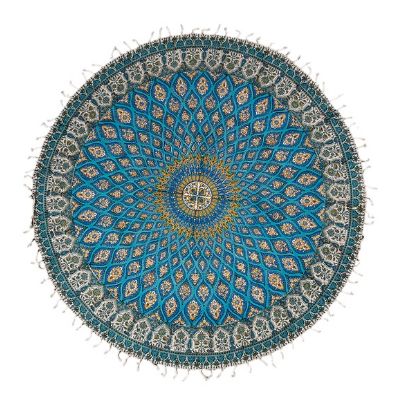
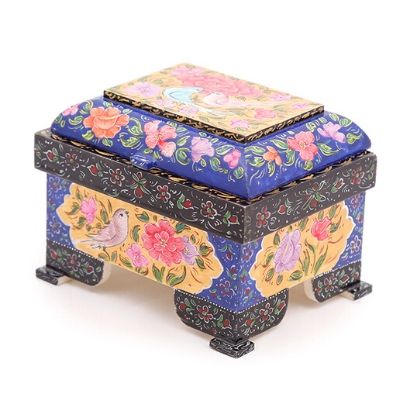
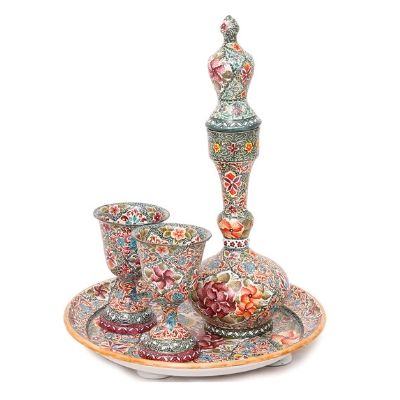
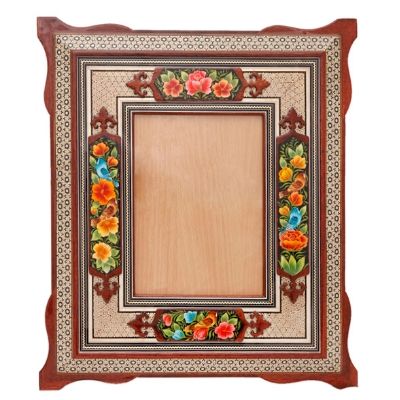
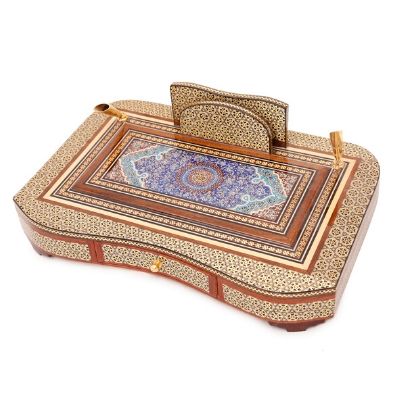
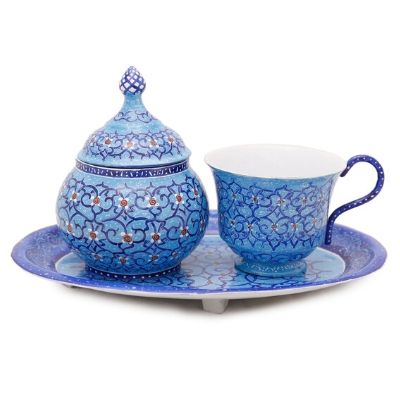
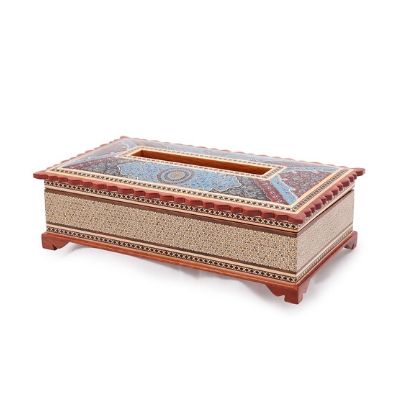
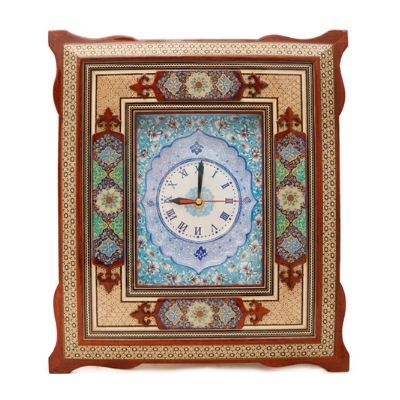
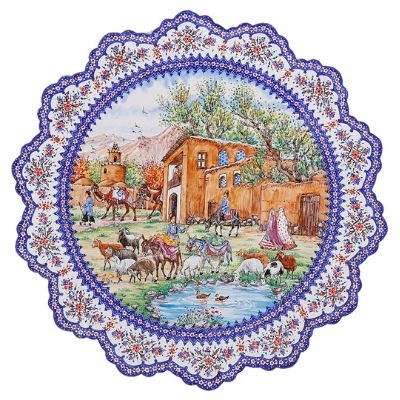
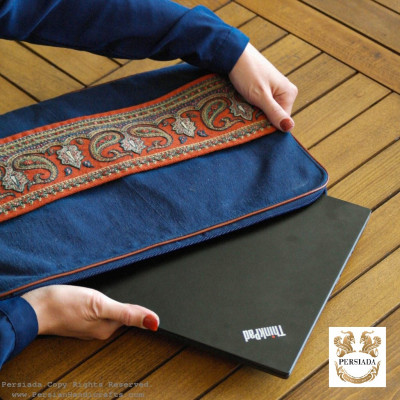

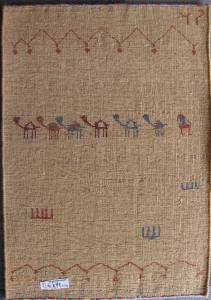
212 Comment(s)
对英文论文代写服务的需求增加反映了现代教育的不断变化。虽然这些服务提供了有价值的学术帮助,但也引发了有关学术诚信的担忧。为了在当今全球化的世界中妥善解决这些问题,教育者、学术机构和学生应该共同努力,推广学术诚信,提升语言技能,培养独立学习能力。只有这样,学生才能成功应对学业挑战,既符合道德又高效地在全球化时代取得优异学业。
With 꽁머니, you can't go wrong.
If you're into fantasy webtoons, 툰코 has some of the best options.
If you haven’t tried 웹툰 무료보기 yet, you’re missing out on so many amazing free webtoons!
I’m implementing these 인스타최적화 strategies ASAP.
My debt has decreased thanks to 개인회생상담.
What documents are needed during a 명도소송?
If you're facing harassment, hiring a 스토킹고소대리 attorney ensures your case is handled with care.
Consult an expert lawyer for 음주운전구제 if you're dealing with a DUI charge.
Immigration… [...]the time to read or visit the content or sites we have linked to below the[...]…
Don’t miss a moment with 무료 스포츠중계’s real-time broadcasts.
If you’re tired of chaos in your bookmarks, 여기여 주소 is the solution.
A 주소모음 that groups everything I need is just perfect.
밤알바 offers flexible hours, which is a major benefit for me.
호치민 ktv is my go-to spot for fun nights out.
Singing solos at 호치민 ktv is so much fun!
Spontaneous nights at 호치민 ktv are the best!
호치민 ktv is amazing!
The 툰코 community is so engaging. It’s fun discussing webtoons with others.
The webtoons on 뉴토끼 are fantastic! The art is beautiful, and the stories are captivating from start to finish.
Make a strong first impression with a professional 강남사무실.
I'm obsessed with using 무료실시간스포츠중계 for all my sports needs.
The character development in 툰코's webtoons is fantastic.
I'm constantly blown away by the art on 블랙툰!
darkgg showcases diverse voices in gaming.
I appreciate the community interactions on 다크걸.
The art styles on 뉴토끼 주소 are truly breathtaking!
Whether it's a studio or a guesthouse, there’s a 홍대 룸 that fits your needs perfectly.
Uncover Vietnam's imperial legacy on the 다낭 황제 투어.
Her persistence and willingness to learn from mistakes made me realize that embracing failure can foster creativity and courage.
<ahref="https://disposablecartsuk.com/product/acapulco-gold-strain/" rel="dofollow">Acapulco Gold Strain</a>
<ahref="https://disposablecartsuk.com/product/afghani-strain/" rel="dofollow">Afghani strain</a>
<ahref="https://disposablecartsuk.com/product/ak-47-strain/" rel="dofollow">AK 47 Strain</a>
<ahref="https://disposablecartsuk.com/product/amnesia-haze-strain/" rel="dofollow">Amnesia Haze Strain</a>
<ahref="https://disposablecartsuk.com/product/blue-gelato-strain/" rel="dofollow">Blue Gelato Strain</a>
<ahref="https://disposablecartsuk.com/product/blueberry-muffin-strain/" rel="dofollow">Blueberry Muffin Strain</a>
<ahref="https://disposablecartsuk.com/product/bubblegum-popperz-strain/" rel="dofollow">Bubblegum Popperz Strain</a>
<ahref="https://disposablecartsuk.com/product/chemdawg-strain/" rel="dofollow">Chemdawg Strain</a>
<ahref="https://disposablecartsuk.com/product/diamond-dust-strain/" rel="dofollow">Diamond Dust Strain</a>
<ahref="https://disposablecartsuk.com/product/gary-payton-strain/" rel="dofollow">Gary Payton Strain</a>
<ahref="https://disposablecartsuk.com/product/miracle-alien-cookies-strain/" rel="dofollow">Miracle Alien Cookies Strain</a>
<ahref="https://disposablecartsuk.com/product/og-kush/" rel="dofollow">OG Kush</a>
<ahref="https://disposablecartsuk.com/product/permanent-marker-strain/" rel="dofollow">Permanent Marker Strain</a>
<ahref="https://disposablecartsuk.com/product/zoapscotti-strain/" rel="dofollow">Zoapscotti Strain</a>
<ahref="https://disposablecartsuk.com/product/blueberry-oil/" rel="dofollow">Blueberry Oil</a>
<ahref="https://disposablecartsuk.com/product/co%e2%82%82-extract-oil/" rel="dofollow">CO₂ Extract Oil</a>
<ahref="https://disposablecartsuk.com/product/delta-8-distillate/" rel="dofollow">Delta 8 Distillate</a>
<ahref="https://disposablecartsuk.com/product/d9-distillate/" rel="dofollow">Delta 9 Distillate</a>
<ahref="https://disposablecartsuk.com/product/delta-10-distillate/" rel="dofollow">DELTA-10 Distillate</a>
<ahref="https://disposablecartsuk.com/product/hhc-distillate/" rel="dofollow">HHC Distillate</a>
<ahref="https://disposablecartsuk.com/product/live-resin-oil/" rel="dofollow">Live Resin Oil</a>
<ahref="https://disposablecartsuk.com/product/purple-punch-oil/" rel="dofollow">Purple Punch oil</a>
<ahref="https://disposablecartsuk.com/product/raw-pure-thc-oil/" rel="dofollow">Raw (Pure) THC Oil</a>
<ahref="https://disposablecartsuk.com/product/rick-simpson-oil/" rel="dofollow">Rick Simpson Oil</a>
<ahref="https://disposablecartsuk.com/product/thc-clear-distillate/" rel="dofollow">THC Clear Distillate</a>
<ahref="https://disposablecartsuk.com/product/thc-d9-syrup/" rel="dofollow">THC Delta 9 Syrup</a>
<ahref="https://disposablecartsuk.com/product/star-killer-oil/" rel="dofollow">THC Star Killer Oil</a>
<ahref="https://disposablecartsuk.com/product/thca-distillate/" rel="dofollow">THCA Distillate</a>
<ahref="https://disposablecartsuk.com/product/thcp-distillate-oil/" rel="dofollow">THCP Distillate Oil</a>
<ahref="https://disposablecartsuk.com/product/whole-melt-extracts-2g-disposable/" rel="dofollow">Whole Melt Extracts 2g Disposable</a>
<ahref="https://disposablecartsuk.com/product/tre-house-hhc-live-resin-disposable-vape-pens-2grams/" rel="dofollow">Tre House HHC Live Resin Disposable Vape Pens (2grams)</a>
<ahref="https://disposablecartsuk.com/product/the-wizard-of-terps-1ml-syringe/" rel="dofollow">The Wizard Of Terps 1ml Syringe</a>
<ahref="https://disposablecartsuk.com/product/ruby-carts-disposable-vape-pen/" rel="dofollow">Ruby Carts Disposable Vape Pen</a>
<ahref="https://disposablecartsuk.com/product/potent-disposable/" rel="dofollow">Potent disposable</a>
<ahref="https://disposablecartsuk.com/product/packwoods-x-runtz/" rel="dofollow">Packwoods x Runtz</a>
<ahref="https://disposablecartsuk.com/product/ace-ultra-premium-disposable/" rel="dofollow">Ace Ultra Premium Disposable</a>
<ahref="https://disposablecartsuk.com/product/backpackboyz-carts/" rel="dofollow">Backpackboyz Carts</a>
<ahref="https://disposablecartsuk.com/product/baked-bar-2g-disposable/" rel="dofollow">Baked Bar 2g Disposable</a>
<ahref="https://disposablecartsuk.com/product/burst-2g-disposable-vape/" rel="dofollow">Burst 2g Disposable Vape</a>
<ahref="https://disposablecartsuk.com/product/cali-company-disposable-vape/" rel="dofollow">Cali Company Disposable Vape</a>
<ahref="https://disposablecartsuk.com/product/choice-lab-2g-disposable/" rel="dofollow">Choice Lab 2g Disposable</a>
<ahref="https://disposablecartsuk.com/product/clean-carts-2g-disposable/" rel="dofollow">Clean Carts 2G Disposable</a>
<ahref="https://disposablecartsuk.com/product/cookies-1g-disposable/" rel="dofollow">Cookies 1g Disposable</a>
<ahref="https://disposablecartsuk.com/product/family-high-range/" rel="dofollow">Family High Range</a>
<ahref="https://disposablecartsuk.com/product/favorites-2g-disposable/" rel="dofollow">Favorites 2G Disposable</a>
<ahref="https://disposablecartsuk.com/product/gassed-up-2g-disposable/" rel="dofollow">Gassed Up 2g Disposable</a>
<ahref="https://disposablecartsuk.com/product/jeeter-juice-carts/" rel="dofollow">Jeeter Juice Carts</a>
<ahref="https://disposablecartsuk.com/product/jungle-boys-vape/" rel="dofollow">Jungle Boys Vape</a>
<ahref="https://disposablecartsuk.com/product/seedless-disposable/" rel="dofollow">Seedless Disposable</a>
<ahref="https://englandtrap.com/product/apple-fritter-strain/" rel="dofollow">Apple Fritter Strain</a>
<ahref="https://englandtrap.com/product/biscotti-strain/" rel="dofollow">Biscotti Strain</a>
<ahref="https://englandtrap.com/product/blueberry-zkittlez-strain/" rel="dofollow">Blueberry Strain</a>
<ahref="https://englandtrap.com/product/cheese-kush/" rel="dofollow">Cheese strain</a>
<ahref="https://englandtrap.com/product/gelato-strain/" rel="dofollow">Gelato Strain</a>
<ahref="https://englandtrap.com/product/gg4-strain/" rel="dofollow">GG4 Strain</a>
<ahref="https://englandtrap.com/product/godfather-og-strain/" rel="dofollow">Godfather OG Strain</a>
<ahref="https://englandtrap.com/product/stardawg-strain/" rel="dofollow">Stardawg Strain</a>
<ahref="https://englandtrap.com/product/super-lemon-cherry-strain/" rel="dofollow">Super Lemon Cherry Strain</a>
<ahref="https://englandtrap.com/product/wedding-cake-strain-2/" rel="dofollow">Wedding Cake Strain</a>
<ahref="https://englandtrap.com/product/white-widow-strain/" rel="dofollow">White Widow Strain</a>
<ahref="https://englandtrap.com/product/girl-scout-cookies/" rel="dofollow">Girl Scout Cookies</a>
<ahref="https://englandtrap.com/product/granddaddy-purple-gdp-strain/" rel="dofollow">Granddaddy Purple Strain</a>
<ahref="https://englandtrap.com/product/ice-cream-cake-strain/" rel="dofollow">Ice Cream Cake Strain</a>
<ahref="https://englandtrap.com/product/master-kush/" rel="dofollow">Master Kush</a>
<ahref="https://englandtrap.com/product/northern-lights/" rel="dofollow">Northern Lights strain</a>
<ahref="https://englandtrap.com/product/skywalker-kush/" rel="dofollow">Skywalker Kush</a>
<ahref="https://englandtrap.com/product/watermelon-gelato-strain/" rel="dofollow">Watermelon Gelato Strain</a>
<ahref="https://englandtrap.com/product/zeus-og-strain/" rel="dofollow">Zeus OG Strain</a>
<ahref="https://englandtrap.com/product/amnesia-haze/" rel="dofollow">Amnesia Haze</a>
<ahref="https://englandtrap.com/product/bruce-banner-strain/" rel="dofollow">Bruce Banner Strain</a>
<ahref="https://englandtrap.com/product/durban-poison/" rel="dofollow">Durban Poison</a>
<ahref="https://englandtrap.com/product/guava-weed-strain/" rel="dofollow">Guava Weed Strain</a>
<ahref="https://englandtrap.com/product/maui-wowie-strain/" rel="dofollow">Maui Wowie Strain</a>
<ahref="https://englandtrap.com/product/mimosa-strain/" rel="dofollow">Mimosa Strain</a>
<ahref="https://englandtrap.com/product/sour-diesel-strain/" rel="dofollow">Sour Diesel Strain</a>
<ahref="https://englandtrap.com/product/super-silver-haze/" rel="dofollow">Super Silver Haze</a>
<ahref="https://englandtrap.com/product/big-chief-carts/" rel="dofollow">Big Chief Carts</a>
<ahref="https://englandtrap.com/product/cake-vape-pen/" rel="dofollow">CAKE VAPE PEN</a>
<ahref="https://englandtrap.com/product/cali-company-1g-vapes/" rel="dofollow">Cali Company 1g Vapes</a>
<ahref="https://englandtrap.com/product/dope-disposable-vape-pens/" rel="dofollow">Dope Disposable Vape Pens</a>
<ahref="https://englandtrap.com/product/england-trap-1g-vape/" rel="dofollow">England Trap 1g Vape</a>
<ahref="https://englandtrap.com/product/expensive-sht-vapes/" rel="dofollow">Expensive Sh*t Vapes</a>
<ahref="https://englandtrap.com/product/fryd-vape/" rel="dofollow">FRYD VAPE</a>
<ahref="https://englandtrap.com/product/muha-meds-vape/" rel="dofollow">Muha Meds Vape</a>
<ahref="https://englandtrap.com/product/packman-vape/" rel="dofollow">PACKMAN VAPE</a>
<ahref="https://englandtrap.com/product/packwoods-vape/" rel="dofollow">PACKWOODS VAPE</a>
<ahref="https://englandtrap.com/product/cali-plates-hash/" rel="dofollow">Cali Plates Hash</a>
<ahref="https://englandtrap.com/product/fly-farm-hash/" rel="dofollow">FLY FARM HASH</a>
<ahref="https://englandtrap.com/product/16147/" rel="dofollow">Kilogrammes Farm Hash</a>
<ahref="https://englandtrap.com/product/la-mousse-hash-review/" rel="dofollow">La Mousse Hash</a>
<ahref="https://englandtrap.com/product/lemon-haze-hash/" rel="dofollow">LEMON HAZE HASH</a>
<ahref="https://englandtrap.com/product/static-room-hash/" rel="dofollow">Static Room Hash</a>
<ahref="https://englandtrap.com/product/super-pollen-hash/" rel="dofollow">Super Pollen Hash</a>
<ahref="https://englandtrap.com/product/tangie-hash/" rel="dofollow">TANGIE HASH</a>
<ahref="https://englandtrap.com/product/wazabi-hash/" rel="dofollow">WAZABI HASH</a>
<ahref="https://hashclinicc.com/product/alien-og-hash/" rel="dofollow">Alien OG hash</a>
<ahref="https://hashclinicc.com/product/cali-plates-hash/" rel="dofollow">Cali Plates Hash</a>
<ahref="https://hashclinicc.com/product/fly-farm-hash/" rel="dofollow">FLY FARM HASH</a>
<ahref="https://hashclinicc.com/product/kilogrammes-farm-hash/" rel="dofollow">Kilogrammes Farm Hash</a>
<ahref="https://hashclinicc.com/product/la-mousse-hash/" rel="dofollow">La Mousse Hash</a>
<ahref="https://hashclinicc.com/product/lemon-haze-hash/" rel="dofollow">LEMON HAZE HASH</a>
<ahref="https://hashclinicc.com/product/pollen-hash/" rel="dofollow">POLLEN HASH</a>
<ahref="https://hashclinicc.com/product/static-room-hash/" rel="dofollow">Static Room Hash</a>
<ahref="https://hashclinicc.com/product/tangie-hash/" rel="dofollow">TANGIE HASH</a>
<ahref="https://hashclinicc.com/product/wazabi-hash/" rel="dofollow">WAZABI HASH</a>
<ahref="https://hashclinicc.com/product/41-unicornz-strain/" rel="dofollow">41 Unicornz Strain</a>
<ahref="https://hashclinicc.com/product/apple-fritter-strain/" rel="dofollow">Apple Fritter Strain</a>
<ahref="https://hashclinicc.com/product/biscotti-strain/" rel="dofollow">Biscotti Strain</a>
<ahref="https://hashclinicc.com/product/blue-gelato-strain/" rel="dofollow">Blue Gelato Strain</a>
<ahref="https://hashclinicc.com/product/blueberry-muffin-strain/" rel="dofollow">Blueberry Muffin Strain</a>
<ahref="https://hashclinicc.com/product/bubblegum-popperz-strain/" rel="dofollow">Bubblegum Popperz Strain</a>
<ahref="https://hashclinicc.com/product/gary-payton-strain/" rel="dofollow">Gary Payton Strain</a>
<ahref="https://hashclinicc.com/product/hella-jelly-strain/" rel="dofollow">Hella Jelly Strain</a>
<ahref="https://hashclinicc.com/product/kosher-kush-strain/" rel="dofollow">Kosher Kush Strain</a>
<ahref="https://hashclinicc.com/product/lava-cake-strain/" rel="dofollow">Lava Cake Strain</a>
<ahref="https://hashclinicc.com/product/miracle-alien-cookies-strain/" rel="dofollow">Miracle Alien Cookies Strain</a>
<ahref="https://hashclinicc.com/product/moonrock-pre-roll/" rel="dofollow">Moonrock Pre Roll</a>
<ahref="https://hashclinicc.com/product/og-kush/" rel="dofollow">OG Kush</a>
<ahref="https://hashclinicc.com/product/tropical-runtz-strain/" rel="dofollow">Tropical runtz strain</a>
<ahref="https://hashclinicc.com/product/watermelon-runtz-strain/" rel="dofollow">Watermelon Runtz Strain</a>
<ahref="https://hashclinicc.com/product/backpackboyz-cart/" rel="dofollow">Backpackboyz Cart</a>
<ahref="https://hashclinicc.com/product/baked-bar-disposable/" rel="dofollow">Baked Bar Disposable</a>
<ahref="https://hashclinicc.com/product/cali-plug-disposable-vape/" rel="dofollow">Cali Plug Disposable Vape</a>
<ahref="https://hashclinicc.com/product/clean-carts-2g-disposable/" rel="dofollow">Clean Carts 2G Disposable</a>
<ahref="https://hashclinicc.com/product/d9-distillate/" rel="dofollow">D9 Distillate</a>
<ahref="https://hashclinicc.com/product/elites-switch-1g-disposable/" rel="dofollow">Elites Switch 1g Disposable</a>
<ahref="https://hashclinicc.com/product/expensive-shit-1g-vape/" rel="dofollow">Expensive Shit 1g Vape</a>
<ahref="https://hashclinicc.com/product/fryd-donuts-disposable-2g/" rel="dofollow">Fryd Donuts Disposable (2g)</a>
<ahref="https://hashclinicc.com/product/gassed-up-2g-disposable/" rel="dofollow">Gassed Up 2g Disposable</a>
<ahref="https://hashclinicc.com/product/jungle-boys-vape/" rel="dofollow">Jungle Boys Vape</a>
<ahref="https://hashclinicc.com/product/kushy-punch-disposable/" rel="dofollow">Kushy Punch Disposable</a>
<ahref="https://hashclinicc.com/product/melt-x-packwoods/" rel="dofollow">Melt X Packwoods</a>
<ahref="https://hashclinicc.com/product/packspod-vape/" rel="dofollow">Packspod Vape</a>
<ahref="https://hashclinicc.com/product/the-cali-company-disposable-vape/" rel="dofollow">The Cali company disposable vape</a>
<ahref="https://hashclinicc.com/product/tyson-pod-1000mg/" rel="dofollow">Tyson Pod 1000mg</a>
<ahref="https://vapestorecart.com/product/buy-the-10-10-boys-2g-disposable-online/" rel "dofollow">Buy THE 10/10 BOYS 2G DISPOSABLE online</a>
<ahref="https://vapestorecart.com/product/buy-co2-extract-oil-online/" rel "dofollow">Buy CO2 Extract Oil Online</a>
<ahref="https://vapestorecart.com/product/buy-deep-sleep-thc-tincture-online/" rel "dofollow">Buy Deep Sleep THC Tincture Online</a>
<ahref="https://vapestorecart.com/product/buy-thc-mood-magic-tincture-online/" rel "dofollow">Buy THC Mood Magic Tincture online</a>
<ahref="https://vapestorecart.com/product/buy-atlrx-delta-8-thc-online/" rel "dofollow">Buy ATLRx Delta 8 THC Online</a>
<ahref="https://vapestorecart.com/product/buy-revival-watermelon-thc-tincture-online/" rel "dofollow">Buy Revival Watermelon THC Tincture online</a>
<ahref="https://vapestorecart.com/product/buy-diamond-extracts-thc-tinctures-online/" rel "dofollow">Buy Diamond Extracts THC Tinctures Online</a>
<ahref="https://vapestorecart.com/product/thc-p-vape-cartridge/" rel "dofollow">THC-P Vape Cartridge</a>
<ahref="https://vapestorecart.com/product/thca-disposable-2-gram-gourmet-desserts/" rel "dofollow">THCA Disposable 2 Gram – Gourmet Desserts</a>
<ahref="https://vapestorecart.com/product/blazed-7-gram-thca-delta-9b-disposable-vape/" rel "dofollow">Blazed 7 Gram THCA + Delta 9B Disposable Vape</a>
<ahref="https://vapestorecart.com/product/7-gram-thca-high-thc-p-disposable-vape-limited-series/" rel "dofollow">7 Gram THCA + High THC-P Disposable Vape – Limited Series</a>
<ahref="https://vapestorecart.com/product/knockout-blend-live-resin-disposable-2-gram/" rel "dofollow">Knockout Blend Live Resin Disposable – 2 Gram</a>
<ahref="https://vapestorecart.com/product/phc-disposable-vape-2-gram/" rel "dofollow">PHC Disposable Vape – 2 Gram</a>
<ahref="https://vapestorecart.com/product/hhc-disposable-vape-2-gram-tre-house/" rel "dofollow">HHC Disposable Vape 2 Gram – TRE House</a>
<ahref="https://vapestorecart.com/product/live-resin-hhc-p-disposable-vape-delta-extrax/" rel "dofollow">Live Resin HHC-P Disposable Vape – Delta Extrax</a>
<ahref="https://vapestorecart.com/product/thc-jd-3-gram-disposable-thins-delta-extrax/" rel "dofollow">THC-JD 3 Gram Disposable Thins – Delta Extrax</a>
<ahref="https://vapestorecart.com/product/thca-delta-9p-3-gram-disposable-blazed/" rel "dofollow">THCA + Delta 9P 3 Gram Disposable – Blazed</a>
<ahref="https://vapestorecart.com/product/5-gram-thca-thcm-disposable-vape-exclusive-series/" rel "dofollow">5 Gram THCA + THCM Disposable Vape – Exclusive Series</a>
<ahref="https://vapestorecart.com/?post_type=product&p=519&preview=true" rel "dofollow">2 Gram THCA Disposable Vapes – Live Rosin</a>
<ahref="https://vapestorecart.com/product/thca-vape-cartridge-exotic-kush-live-rosin/" rel "dofollow">THCA Vape Cartridge Exotic Kush – Live Rosin</a>
<ahref="https://vapestorecart.com/product/1-gram-thca-disposable-vapes-live-rosin/" rel "dofollow">1 Gram THCA Disposable Vapes – Live Rosin</a>
<ahref="https://vapestorecart.com/product/2g-thca-disposable-vapes-minnesota-fire/" rel "dofollow">2G THCA Disposable Vapes – Minnesota Fire</a>
<ahref="https://vapestorecart.com/product/thc-vape-juice-wedding-cake/" rel "dofollow">THC Vape Juice Wedding Cake</a>
<ahref="https://vapestorecart.com/product/buy-urb-disposable-vape/" rel "dofollow">Buy URB Disposable vape</a>
<ahref="https://vapestorecart.com/product/buy-xtra-disposables-vape-online/" rel "dofollow">Buy Xtra Disposables vape online</a>
<ahref="https://vapestorecart.com/product/buy-runtz-disposable-vape-pen/" rel "dofollow">Buy RUNTZ DISPOSABLE VAPE PEN</a>
<ahref="https://vapestorecart.com/product/buy-dmt-vape-pens/" rel "dofollow">buy Dmt Vape Pens</a>
<ahref="https://vapestorecart.com/product/rainbows-and-cherries-live-budder/" rel "dofollow">Rainbows and Cherries Live Budder</a>
<ahref="https://vapestorecart.com/product/2-5g-citrus-mac-live-budder/" rel "dofollow">2.5g Citrus MAC Live Budder</a>
<ahref="https://vapestorecart.com/product/1g-peking-duck-live-sugar/" rel "dofollow">1g Peking Duck Live Sugar</a>
<ahref="https://vapestorecart.com/product/30ml-rest-15-tincture/" rel "dofollow">30ml Rest 1:5 Tincture</a>
<ahref="https://vapestorecart.com/product/1g-face-mints-liquid-live-resin-cartridge/" rel "dofollow">1g Face Mints Liquid Live Resin Cartridge</a>
<ahref="https://vapestorecart.com/product/acitivated-thc-distillate-strike-gold/" rel="dofollow">Activated THC distillate Strike gold</a>
<ahref="https://psychedelictripgateway.com/product/good-trip-mushroom-chocolate-bars/" rel="dofollow">Good Trip Chocolate Bars</a>
<ahref="https://psychedelictripgateway.com/product/fusion-mushroom-chocolate-bars/" rel="dofollow">Fusion Mushroom Chocolate Bars</a>
<ahref="https://psychedelictripgateway.com/product/lsd-acid/" rel="dofollow">Lsd (acid)</a>
<ahref="https://psychedelictripgateway.com/product/lsd-gel/" rel="dofollow">Lsd Gel Tabs</a>
<ahref="https://psychedelictripgateway.com/product/lsd-sheets/" rel="dofollow">LSD SHEETS</a>
<ahref="https://psychedelictripgateway.com/product/lsd/" rel="dofollow">Lsd</a>
<ahref="https://psychedelictripgateway.com/product/green-hulk-250mg-mdma/" rel="dofollow">Green Hulk (MDMA)</a>
<ahref="https://psychedelictripgateway.com/product/white-yellow-technogym/" rel="dofollow">White & Yellow Technogym</a>
<ahref="https://psychedelictripgateway.com/product/orange-sprite-mdma/" rel="dofollow">Orange Sprite MDMA Pills</a>
<ahref="https://psychedelictripgateway.com/product/red-bull-258mg-mdma/" rel="dofollow">Red Bull Pills (MDMA)</a>
<ahref="https://psychedelictripgateway.com/product/orange-trump-260mg-mdma/" rel="dofollow">Orange Trump 260mg MDMA</a>
<ahref="https://psychedelictripgateway.com/product/one-up-mushroom-chocolate-bars/" rel="dofollow">One Up Mushroom Chocolate Bars</a>
<ahref="https://psychedelictripgateway.com/product/one-up-raspberry-dark-chocolate-shroom-bars/" rel="dofollow">One Up Raspberry Dark Shroom Chocolate Bars</a>
<ahref="https://psychedelictripgateway.com/product/one-up-tagalongs-mushroom-bars/" rel="dofollow">One Up Tagalongs Mushroom Bars</a>
<ahref="https://psychedelictripgateway.com/product/one-up-multiverse-vanilla-biscuit/" rel="dofollow"></a>
<ahref="https://psychedelictripgateway.com/product/one-up-multiverse-vanilla-biscuit/" rel="dofollow">One up Multiverse Vanilla Biscuit</a>
<ahref="https://psychedelictripgateway.com/product/one-up-mushroom-bars-cookies-and-cream/" rel="dofollow">One Up Psilocybin Mushroom Cookies and Cream</a>
<ahref="https://psychedelictripgateway.com/product/one-up-mushroom-bars-do-si-dos/" rel="dofollow">One Up Do-Si-Dos Mushroom Bars</a>
<ahref="https://psychedelictripgateway.com/product/one-up-samoas-mushroom-bar/" rel="dofollow">One Up Samoas Mushroom Bar</a>
<ahref="https://psychedelictripgateway.com/product/one-up-strawberries-and-cream-mushroom-bars/" rel="dofollow">One Up Strawberries and Cream Mushroom Bars</a>
<ahref="https://psychedelictripgateway.com/product/one-up-thin-mints-mushroom-bars/" rel="dofollow">One Up Thin Mints Mushroom Bars</a>
<ahref="https://psychedelictripgateway.com/product/one-up-multiverse-almond-crush-chocolate-bar/" rel="dofollow">One Up Multiverse Almond Crush Chocolate Bar</a>
<ahref="https://psychedelictripgateway.com/product/one-up-multiverse-blueberry-yogurt/" rel="dofollow">One Up Multiverse Blueberry Yogurt</a>
<ahref="https://psychedelictripgateway.com/product/one-up-multiverse-oreo-milkshake/" rel="dofollow">One up Multiverse Oreo Milkshake</a>
<ahref="https://psychedelictripgateway.com/product/one-up-multiverse-matcha-milk-tea/" rel="dofollow">One up Multiverse Matcha Milk Tea</a>
<ahref="https://psychedelictripgateway.com/product/one-up-multiverse-strawberry-shortcake/" rel="dofollow">One up Multiverse Strawberry Shortcake</a>
<ahref="https://psychedelictripgateway.com/product/one-up-psychedelic-chocolate-bar/" rel="dofollow">One Up Psilocybin Chocolate Bar</a>
<ahref="https://psychedelictripgateway.com/product/one-up-trefoils-mushroom-bars/" rel="dofollow">One Up Trefoils Mushroom Bars</a>
<ahref="https://psychedelictripgateway.com/product/filthy-laboratory/" rel="dofollow">FILTHY LABORATORY</a>
<ahref="https://psychedelictripgateway.com/product/flavrx-cartridge/" rel="dofollow">FlavRX Cartridge</a>
<ahref="https://psychedelictripgateway.com/product/chronopoly-carts/" rel="dofollow">Chronopoly Carts</a>
<ahref="https://psychedelictripgateway.com/product/big-chief-extracts/" rel="dofollow">Big chief extracts</a>
<ahref="https://psychedelictripgateway.com/product/exxus-snap/" rel="dofollow">Exxus Snap</a>
<ahref="https://psychedelictripgateway.com/product/stiiizys-starter-kit/" rel="dofollow">Stiiizy Disposable</a>
<ahref="https://psychedelictripgateway.com/product/exotic-carts/" rel="dofollow">EXOTIC CARTS</a>
<ahref="https://psychedelictripgateway.com/product/brass-knuckles-cartridges/" rel="dofollow">Brass Knuckles Cartridges</a>
<ahref="https://psychedelictripgateway.com/product/5-me0-dmt/" rel="dofollow">5-Me0-DMT</a>
<ahref="https://psychedelictripgateway.com/product/albino-penis-envy-grow-kits/" rel="dofollow">albino penis envy grow kits</a>
<ahref="https://psychedelictripgateway.com/product/blue-oyster-mushrooms/" rel="dofollow">blue Oyster Mushroom</a>
<ahref="https://psychedelictripgateway.com/product/lions-mane/" rel="dofollow">Lion’s Mane</a>
<ahref="https://psychedelictripgateway.com/product/dmt/" rel="dofollow">DMT</a>
<ahref="https://psychedelictripgateway.com/product/ecstasy-molly/" rel="dofollow">Ecstasy Pills</a>
<ahref="https://psychedelictripgateway.com/product/dmt-vape-pen-and-cartridges/" rel="dofollow">DMT VAPE PEN</a>
<ahref="https://psychedelictripgateway.com/product/5-meo-dmt/" rel="dofollow">5-MeO DMT</a>
<ahref="https://psychedelictripgateway.com/product/lsd-liquid/" rel="dofollow">Liquid LSD</a>
<ahref="https://psychedelictripgateway.com/product/gel-tabs-lsd-300ug/" rel="dofollow">Gel tabs lsd</a>
<ahref="https://psychedelictripgateway.com/product/lsd-tabs-250ug/" rel="dofollow">LSD Tabs</a>
<ahref="https://psychedelictripgateway.com/product/mdma-crystal/" rel="dofollow">MDMA Crystal</a>
<ahref="https://psychedelictripgateway.com/product/psilocybe-azurescens-dried-shrooms/" rel="dofollow">Psilocybe Azurescens mushrooms</a>
<ahref="https://psychedelictripgateway.com/product/golden-teacher-mushrooms/" rel="dofollow">Golden Teacher Mushrooms</a>
<ahref="https://psychedelictripgateway.com/product/true-albino-teacher-mushroom/" rel="dofollow">True Albino Teacher</a>
<ahref="https://psychedelictripgateway.com/product/psilocybe-cyanescens-dried-shrooms/" rel="dofollow">Psilocybe Cyanescens</a>
<ahref="https://psychedelictripgateway.com/product/penis-envy/" rel="dofollow">Penis Envy</a>
<ahref="https://psychedelictripgateway.com/product/great-white-monster-psilocybe-cubensis/" rel="dofollow">Great White Monster-Psilocybe Cubensis</a>
<ahref="https://psychedelictripgateway.com/product/big-daddy-psilocybe-cubensis/" rel="dofollow">Big Daddy Psilocybe Cubensis</a>
<ahref="https://psychedelictripgateway.com/product/avery-albino-magic-mushroom/" rel="dofollow">Avery Albino Magic Mushroom</a>
<ahref="https://psychedelictripgateway.com/product/albino-cambodians-psilocybe-cubensis/" rel="dofollow">Albino Cambodians Psilocybe Cubensis</a>
<ahref="https://psychedelictripgateway.com/product/albino-a-magic-mushroom-dried-shrooms/" rel="dofollow">Albino A+ Magic Mushroom</a>
Blog Comment:
This guide to buying Persian rugs is incredibly informative! The detailed breakdown of how to identify genuine Persian rugs—checking labels, knot density, and traditional patterns—makes it so much easier for buyers to avoid imitations. The insights on materials, like the durability of wool versus the rarity of silk, and the impact of age and craftsmanship on value are super helpful for anyone looking to invest in these beautiful pieces. For students studying consumer behavior or cultural heritage, analyzing the decision-making process behind purchasing such artisanal items could be a fascinating project, and psychology assignment help online services might assist in exploring the psychological factors influencing buyer preferences. Thanks for sharing such a comprehensive and engaging guide!
오피가이드 is a lifesaver for anyone looking for detailed guidance.
Thanks to 주소타운, I can keep my favorite links just a click away.
누누티비 helps me find new favorites every week.
주소모음 is such a handy tool for managing links.
The comprehensive reviews on 오피가이드 help me choose the best massage experiences.
I felt so pampered at the 오피.
The enthusiasm on 오피스타 is truly infectious.
I love the convenience and flexibility that opga offers.
The twins nailed it!
The suspense was unreal!
The ultimate school contraband ????
https://fullservicelavoro.jimdosite.com/
http://treeads.nation2.com/
https://jumperads.yolasite.com/
http://jumperads.nation2.com/
http://transferefurniture.hatenablog.com
https://atar-almadinah.weebly.com/
https://allmoversinriyadh.wordpress.com/
https://allmoversinriyadh.wordpress.com/2022/04/09/%d8%b4%d8%b1%d9%83%d8%a9-%d8%aa%d9%86%d8%b8%d9%8a%d9%81-%d8%a8%d8%a7%d9%84%d8%b1%d9%8a%d8%a7%d8%b6-%d9%85%d8%ac%d8%b1%d8%a8%d8%a9/
https://allmoversinriyadh.wordpress.com/2022/04/07/%d8%a7%d9%81%d8%b6%d9%84-%d8%b4%d8%b1%d9%83%d8%a9-%d8%aa%d9%86%d8%b8%d9%8a%d9%81-%d8%a8%d8%a7%d9%84%d8%b1%d9%8a%d8%a7%d8%b6/
https://allmoversinriyadh.wordpress.com/2022/05/13/%d8%b4%d8%b1%d9%83%d8%a9-%d9%86%d9%82%d9%84-%d8%b9%d9%81%d8%b4-%d9%88%d8%ba%d8%b1%d9%81-%d8%a7%d9%84%d9%86%d9%88%d9%85-%d8%a8%d8%a7%d9%84%d8%b1%d9%8a%d8%a7%d8%b6/
https://companymoversinjeddah.wordpress.com/
https://moversfurniture2018.wordpress.com/2018/12/30/%D8%A7%D9%87%D9%85-%D9%85%D9%83%D8%A7%D8%AA%D8%A8-%D9%88%D9%85%D8%A4%D8%B3%D8%B3%D8%A7%D8%AA-%D8%B4%D8%B1%D9%83%D8%A7%D8%AA-%D9%86%D9%82%D9%84-%D8%B9%D9%81%D8%B4-%D8%A8%D8%AC%D8%A7%D8%B2%D8%A7%D9%86/
https://moversriyadhcom.wordpress.com/
https://moversmedina.wordpress.com/
https://moversfurniture2018.wordpress.com/
https://moversmecca.wordpress.com/
https://khairyayman74.wordpress.com/
https://companymoversmecca.home.blog/
https://companymoverstaif.home.blog/
https://companymoverskhamismushit.home.blog/
https://whitear.home.blog/
https://companyhouseservice.wordpress.com/
http://bestmoversfurniture.wordpress.com/
https://companymoversjeddah.wordpress.com/
https://companycleaning307819260.wordpress.com/
https://companymoversriydah.wordpress.com/
https://ataralmadinah662300791.wordpress.com/
https://ataralmadinah662300791.wordpress.com/2022/02/05/%d8%b4%d8%b1%d9%83%d8%a9-%d9%86%d9%82%d9%84-%d8%b9%d9%81%d8%b4-%d8%a8%d8%a7%d9%84%d8%b1%d9%8a%d8%a7%d8%b6/
https://ataralmadinah662300791.wordpress.com/2022/04/12/%D8%B4%D8%B1%D9%83%D8%A9-%D9%86%D9%82%D9%84-%D8%B9%D9%81%D8%B4-%D9%85%D9%86-%D8%A7%D9%84%D8%B1%D9%8A%D8%A7%D8%B6-%D8%A7%D9%84%D9%89-%D8%A7%D9%84%D8%AF%D9%85%D8%A7%D9%85/
https://groups.google.com/g/moversfurniture/c/wwQFSNvgyAI
https://groups.google.com/g/moversfurniture/c/4L1oHETS4mQ
https://nowewyrazy.uw.edu.pl/profil/khairyayman
https://companyhouseservice.wordpress.com/2022/08/06/%d8%a7%d9%81%d8%b6%d9%84-%d8%b4%d8%b1%d9%83%d8%a9-%d8%aa%d9%86%d8%b8%d9%8a%d9%81-%d8%a8%d8%a7%d9%84%d8%b1%d9%8a%d8%a7%d8%b6/
https://ataralmadinah662300791.wordpress.com/ شركة الصقر الدولي لنقل العفش والاثاث وخدمات التنظيف المنزلية
شركة مكافحة حشرات بنجران وكذلك شركة كشف تسربات المياه بنجران وتنظيف خزانات وتنظيف الموكيت والسجاد والكنب والشقق والمنازل بنجران وتنظيف الخزانات بنجران وتنظيف المساجد بنجران شركة تنظيف بنجران تنظيف المسابح بنجران
https://jumperads.com/najran/anti-insects-company-najran.html شركة مكافحة حشرات بنجران
https://jumperads.com/najran/water-leaks-detection-company-najran.html شركة كشف تسربات بنجران
https://jumperads.com/najran/najran-company-surfaces.html شركة عزل اسطح بنجران
https://jumperads.com/najran/najran-company-sewage.html شركة تسليك مجاري بنجران
https://jumperads.com/najran/najran-cleaning-company-sofa.html شركة تنظيف كنب بنجران
https://jumperads.com/najran/najran-cleaning-company-mosques.html شركة تنظيف مساجد بنجران
https://jumperads.com/najran/najran-cleaning-company-Carpet.html شركة تنظيف سجاد بنجران
https://jumperads.com/najran/najran-cleaning-company-tanks.html شركة تنظيف خزانات بنجران
https://jumperads.com/najran/najran-cleaning-company-swimming-bath.html شركة تنظيف وصيانة مسابح بنجران
https://jumperads.com/najran/najran-cleaning-company-Furniture.html شركة تنظيف الاثاث بنجران
https://jumperads.com/najran/najran-cleaning-company-home.html شركة تنظيف شقق بنجران
https://jumperads.com/najran/najran-cleaning-company-Carpets.html شركة تنظيف موكيت بنجران
https://jumperads.com/najran/najran-cleaning-company.html شركة تنظيف مجالس بنجران
https://jumperads.com/najran/najran-cleaning-company-house.html شركة تنظيف منازل بنجران
https://jumperads.com/najran/najran-cleaning-company-curtains.html شركة تنظيف ستائر بنجران
https://jumperads.com/najran/najran-cleaning-company-Villas.html شركة تنظيف فلل بنجران
https://jumperads.com/najran/najran-company-tile.html شركة جلي بلاط بنجران
شركة مكافحة حشرات بابها وكذلك شركة كشف تسربات المياه بابها وتنظيف خزانات وتنظيف الموكيت والسجاد والكنب والشقق والمنازل بابها وتنظيف الخزانات بابها وتنظيف المساجد بابها شركة تنظيف بابها تنظيف المسابح بابها
https://jumperads.com/abha/anti-insects-company-abha.html شركة مكافحة حشرات بابها
https://jumperads.com/abha/water-leaks-detection-company-abha.html شركة كشف تسربات بابها
https://jumperads.com/abha/abha-company-surfaces.html شركة عزل اسطح بابها
https://jumperads.com/abha/abha-company-sewage.html شركة تسليك مجاري بابها
https://jumperads.com/abha/abha-cleaning-company-sofa.html شركة تنظيف كنب بابها
https://jumperads.com/abha/abha-cleaning-company-mosques.html شركة تنظيف مساجد بابها
https://jumperads.com/abha/abha-cleaning-company-Carpet.html شركة تنظيف سجاد بابها
https://jumperads.com/abha/abha-cleaning-company-tanks.html شركة تنظيف خزانات بابها
https://jumperads.com/abha/abha-cleaning-company-swimming-bath.html شركة تنظيف وصيانة مسابح بابها
https://jumperads.com/abha/abha-cleaning-company-Furniture.html شركة تنظيف الاثاث بابها
https://jumperads.com/abha/abha-cleaning-company-home.html شركة تنظيف شقق بابها
https://jumperads.com/abha/abha-cleaning-company-Carpets.html شركة تنظيف موكيت بابها
https://jumperads.com/abha/abha-cleaning-company.html شركة تنظيف مجالس بابها
https://jumperads.com/abha/abha-cleaning-company-house.html شركة تنظيف منازل بابها
https://jumperads.com/abha/abha-cleaning-company-curtains.html شركة تنظيف ستائر بابها
https://jumperads.com/abha/abha-cleaning-company-Villas.html شركة تنظيف فلل بابها
https://jumperads.com/abha/abha-company-tile.html شركة جلي بلاط بابها
https://emc-mee.com/blog.html شركات نقل العفش
اهم شركات كشف تسربات المياه بالدمام كذلك معرض اهم شركة مكافحة حشرات بالدمام والخبر والجبيل والخبر والاحساء والقطيف كذكل شركة تنظيف خزانات بجدة وتنظيف بجدة ومكافحة الحشرات بالخبر وكشف تسربات المياه بالجبيل والقطيف والخبر والدمام
https://emc-mee.com/cleaning-company-yanbu.html شركة تنظيف بينبع
https://emc-mee.com/blog.html شركة نقل عفش
اهم شركات مكافحة حشرات بالخبر كذلك معرض اهم شركة مكافحة حشرات بالدمام والخبر والجبيل والخبر والاحساء والقطيف كذلك شركة رش حشرات بالدمام ومكافحة الحشرات بالخبر
https://emc-mee.com/anti-insects-company-dammam.html شركة مكافحة حشرات بالدمام
شركة تنظيف خزانات بجدة الجوهرة من افضل شركات تنظيف الخزانات بجدة حيث ان تنظيف خزانات بجدة يحتاج الى مهارة فى كيفية غسيل وتنظيف الخزانات الكبيرة والصغيرة بجدة على ايدى متخصصين فى تنظيف الخزانات بجدة
https://emc-mee.com/tanks-cleaning-company-jeddah.html شركة تنظيف خزانات بجدة
https://emc-mee.com/water-leaks-detection-isolate-company-dammam.html شركة كشف تسربات المياه بالدمام
https://emc-mee.com/ شركة الفا لنقل عفش واثاث
https://emc-mee.com/transfer-furniture-jeddah.html شركة نقل عفش بجدة
https://emc-mee.com/transfer-furniture-almadina-almonawara.html شركة نقل عفش بالمدينة المنورة
https://emc-mee.com/movers-in-riyadh-company.html شركة نقل اثاث بالرياض
https://emc-mee.com/transfer-furniture-dammam.html شركة نقل عفش بالدمام
https://emc-mee.com/transfer-furniture-taif.html شركة نقل عفش بالطائف
https://emc-mee.com/transfer-furniture-mecca.html شركة نقل عفش بمكة
https://emc-mee.com/transfer-furniture-yanbu.html شركة نقل عفش بينبع
https://emc-mee.com/transfer-furniture-alkharj.html شركة نقل عفش بالخرج
https://emc-mee.com/transfer-furniture-buraydah.html شركة نقل عفش ببريدة
https://emc-mee.com/transfer-furniture-khamis-mushait.html شركة نقل عفش بخميس مشيط
https://emc-mee.com/transfer-furniture-qassim.html شركة نقل عفش بالقصيم
https://emc-mee.com/transfer-furniture-tabuk.html شركة نقل عفش بتبوك
https://emc-mee.com/transfer-furniture-abha.html شركة نقل عفش بابها
https://emc-mee.com/transfer-furniture-najran.html شركة نقل عفش بنجران
https://emc-mee.com/transfer-furniture-hail.html شركة نقل عفش بحائل
https://emc-mee.com/transfer-furniture-dhahran.html شركة نقل عفش بالظهران
https://emc-mee.com/transfer-furniture-kuwait.html شركة نقل عفش بالكويت
https://emc-mee.com/price-transfer-furniture-in-khamis-mushit.html اسعار شركات نقل عفش بخميس مشيط
https://emc-mee.com/numbers-company-transfer-furniture-in-khamis-mushit.html ارقام شركات نقل عفش بخميس مشيط
https://emc-mee.com/new-company-transfer-furniture-in-khamis-mushit.html شركة نقل عفش بخميس مشيط جديدة
https://emc-mee.com/transfer-furniture-from-khamis-to-riyadh.html شركة نقل عفش من خميس مشيط الي الرياض
https://emc-mee.com/transfer-furniture-from-khamis-mushait-to-mecca.html شركة نقل عفش من خميس مشيط الي مكة
https://emc-mee.com/transfer-furniture-from-khamis-mushait-to-jeddah.html شركة نقل عفش من خميس مشيط الي جدة
https://emc-mee.com/transfer-furniture-from-khamis-mushait-to-medina.html شركة نقل عفش من خميس مشيط الي المدينة المنورة
https://emc-mee.com/best-10-company-transfer-furniture-khamis-mushait.html افضل 10 شركات نقل عفش بخميس مشيط
https://emc-mee.com/%D8%B4%D8%B1%D9%83%D9%87-%D9%86%D9%82%D9%84-%D8%B9%D9%81%D8%B4-%D8%A8%D8%AC%D8%AF%D9%87.html
https://emc-mee.com/%D8%B4%D8%B1%D9%83%D8%A9-%D9%86%D9%82%D9%84-%D8%A7%D8%AB%D8%A7%D8%AB-%D8%A8%D8%AC%D8%AF%D9%87.html
https://saudi-germany.com/ شركة السعودي الالماني للخدمات المنزلية
https://saudi-germany.com/%d8%b4%d8%b1%d9%83%d8%a7%d8%aa-%d8%aa%d9%86%d8%b8%d9%8a%d9%81-%d8%ae%d8%b2%d8%a7%d9%86%d8%a7%d8%aa-%d8%a8%d8%ac%d8%af%d8%a9/ شركات تنظيف خزانات بجدة
https://saudi-germany.com/%d8%aa%d9%86%d8%b8%d9%8a%d9%81-%d8%ae%d8%b2%d8%a7%d9%86%d8%a7%d8%aa-%d8%a8%d8%ac%d8%af%d8%a9/ تنظيف خزانات بجدة
https://saudi-germany.com/%d8%a7%d9%81%d8%b6%d9%84-%d8%b4%d8%b1%d9%83%d8%a9-%d8%aa%d9%86%d8%b8%d9%8a%d9%81-%d8%ae%d8%b2%d8%a7%d9%86%d8%a7%d8%aa-%d8%a8%d8%ac%d8%af%d8%a9/ افضل شركة تنظيف خزانات بجدة
https://saudi-germany.com/%d8%a7%d8%b1%d8%ae%d8%b5-%d8%b4%d8%b1%d9%83%d8%a9-%d8%aa%d9%86%d8%b8%d9%8a%d9%81-%d8%ae%d8%b2%d8%a7%d9%86%d8%a7%d8%aa-%d8%a8%d8%ac%d8%af%d8%a9/ ارخص شركة تنظيف خزانات بجدة
https://saudi-germany.com/%d8%ba%d8%b3%d9%8a%d9%84-%d8%ae%d8%b2%d8%a7%d9%86%d8%a7%d8%aa-%d8%a8%d8%ac%d8%af%d8%a9/ غسيل خزانات بجدة
https://saudi-germany.com/%d8%b4%d8%b1%d9%83%d8%a9-%d8%aa%d9%86%d8%b8%d9%8a%d9%81-%d8%ae%d8%b2%d8%a7%d9%86%d8%a7%d8%aa-%d8%a8%d8%ac%d8%af%d8%a9/ شركة تنظيف خزانات بجدة
https://saudi-germany.com/cleaning-tanks-company-taif/
https://saudi-germany.com/cleaning-tanks-company-mecca/
https://saudi-germany.com/jumperads-transfer-furniture/
https://saudi-germany.com/%d8%a7%d9%81%d8%b6%d9%84-20-%d8%b4%d8%b1%d9%83%d8%a9-%d9%86%d9%82%d9%84-%d8%b9%d9%81%d8%b4-%d8%a8%d9%8a%d9%86%d8%a8%d8%b9-%d8%ae%d8%b5%d9%85-50-%d9%85%d8%b9-%d8%a7%d9%84%d9%81%d9%83-%d9%88%d8%a7/
https://saudi-germany.com/%d8%a7%d8%b1%d8%ae%d8%b5-%d8%b4%d8%b1%d9%83%d8%a9-%d9%86%d9%82%d9%84-%d8%b9%d9%81%d8%b4-%d8%ac%d8%af%d8%a9-%d8%ad%d9%8a-%d8%a7%d9%84%d8%b5%d9%81%d8%a7/
https://saudi-germany.com/%d8%a7%d8%b1%d8%ae%d8%b5-%d8%b4%d8%b1%d9%83%d8%a9-%d9%86%d9%82%d9%84-%d8%b9%d9%81%d8%b4-%d8%ac%d8%af%d8%a9-%d8%a7%d8%a8%d8%ad%d8%b1-%d8%a7%d9%84%d8%b4%d9%85%d8%a7%d9%84%d9%8a%d8%a9/
https://saudi-germany.com/%d8%a7%d8%b1%d9%82%d8%a7%d9%85-%d8%b4%d8%b1%d9%83%d8%a7%d8%aa-%d9%86%d9%82%d9%84-%d8%b9%d9%81%d8%b4-%d8%a8%d8%ac%d8%af%d8%a9-%d9%85%d8%b9-%d8%a7%d9%84%d8%aa%d8%ba%d9%84%d9%8a%d9%81/
https://saudi-germany.com/%d8%a7%d8%b1%d8%ae%d8%b5-%d8%b4%d8%b1%d9%83%d8%a9-%d9%86%d9%82%d9%84-%d8%b9%d9%81%d8%b4-%d8%a8%d8%ac%d8%af%d8%a9/
https://www.crtmovers.com/
https://www.crtmovers.com/2020/10/transfer-furniture-taif.html شركة نقل اثاث بالطائف
https://www.crtmovers.com/2020/10/transfer-furniture-madina.html
https://www.crtmovers.com/2020/10/movers-madina.html
https://www.crtmovers.com/2020/10/transfer-furniture-riyadh.html
https://www.crtmovers.com/2020/07/transfer-furniture-riyadh.html
https://www.crtmovers.com/2020/05/mecca-transfer-furniture-company-2020.html
https://www.crtmovers.com/2020/05/riyadh-transfer-furniture-company.html
https://www.crtmovers.com/2019/12/jeddah-transfer-furniture.html
https://www.crtmovers.com/2019/12/transfer-furniture-company-jeddah.html
https://www.crtmovers.com/2019/12/transfer-furniture-jeddah-1.html
https://www.crtmovers.com/2019/12/transfer-furniture-taif-1.html
https://www.crtmovers.com/2019/12/transfer-furniture-taif.html
https://www.crtmovers.com/2019/12/price-company-cleaning-tanks-jeddah.html
https://www.crtmovers.com/2019/12/blog-post.html
https://www.crtmovers.com/2019/12/cleaning-tanks-jeddah.html
https://www.crtmovers.com/2023/01/%d8%a7%d9%81%d8%b6%d9%84-%d8%b4%d8%b1%d9%83%d8%a9-%d9%86%d9%82%d9%84-%d8%b9%d9%81%d8%b4-%d8%a8%d8%ac%d8%af%d8%a9.html
شركة سكاي لخدمات نقل العفش والاثاث بالمنطقة العربية السعودية نحن نوفر خدمات نقل اثاث بالرياض ونقل عفش بالمدينة المنورة ونقل عفش بمكة ونقل عفش بالطائف نحن نقدم افضل نقل اثاث بخميس مشيط ونقل عفش بجدة
https://treeads.net/ شركة سكاي نقل العفش
https://treeads.net/blog.html مدونة لنقل العفش
https://treeads.net/movers-mecca.html شركة نقل عفش بمكة
https://treeads.net/movers-riyadh-company.html شركة نقل عفش بالرياض
https://treeads.net/all-movers-madina.html شركة نقل عفش بالمدينة المنورة
https://treeads.net/movers-jeddah-company.html شركة نقل عفش بجدة
https://treeads.net/movers-taif.html شركة نقل عفش بالطائف
https://treeads.net/movers-dammam-company.html شركة نقل عفش بالدمام
https://treeads.net/movers-qatif.html شركة نقل عفش بالقطيف
https://treeads.net/movers-jubail.html شركة نقل عفش بالجبيل
https://treeads.net/movers-khobar.html شركة نقل عفش بالخبر
https://treeads.net/movers-ahsa.html شركة نقل عفش بالاحساء
https://treeads.net/movers-kharj.html شركة نقل عفش بالخرج
https://treeads.net/movers-khamis-mushait.html شركة نقل عفش بخميس مشيط
https://treeads.net/movers-abha.html شركة نقل عفش بابها
https://treeads.net/movers-qassim.html شركة نقل عفش بالقصيم
https://treeads.net/movers-yanbu.html شركة نقل عفش بينبع
https://treeads.net/movers-najran.html شركة نقل عفش بنجران
https://treeads.net/movers-hail.html شركة نقل عفش بحائل
https://treeads.net/movers-buraydah.html شركة نقل عفش ببريدة
https://treeads.net/movers-tabuk.html شركة نقل عفش بتبوك
https://treeads.net/movers-dhahran.html شركة نقل عفش بالظهران
https://treeads.net/movers-rabigh.html شركة نقل عفش برابغ
https://treeads.net/movers-baaha.html شركة نقل عفش بالباحه
https://treeads.net/movers-asseer.html شركة نقل عفش بعسير
https://treeads.net/movers-mgmaa.html شركة نقل عفش بالمجمعة
https://treeads.net/movers-sharora.html شركة نقل عفش بشرورة
https://treeads.net/how-movers-furniture-yanbu.html كيفية نقل العفش بينبع
https://treeads.net/price-movers-furniture-yanbu.html اسعار نقل عفش بينبع
https://treeads.net/find-company-transfer-furniture-yanbu.html البحث عن شركات نقل العفش بينبع
https://treeads.net/transfer-furniture-khamis-mushit.html شركات نقل العفش بخميس مشيط
https://treeads.net/how-transfer-furniture-khamis-mushit.html كيفية نقل العفش بخميس مشيط
https://treeads.net/price-transfer-furniture-khamis-mushit.html اسعار نقل عفش بخميس مشيط
https://treeads.net/%D8%B4%D8%B1%D9%83%D8%A9-%D8%AC%D9%84%D9%8A-%D8%A8%D9%84%D8%A7%D8%B7-%D8%A8%D8%AC%D8%AF%D8%A9.html شركة جلي بلاط بجدة
https://treeads.net/%D8%B4%D8%B1%D9%83%D8%A9-%D8%AA%D9%86%D8%B8%D9%8A%D9%81-%D9%81%D9%84%D9%84-%D8%A8%D8%AC%D8%AF%D8%A9.html تنظيف فلل بجدة
https://treeads.net/company-transfer-furniture-jazan.html شركة نقل عفش بجازان
https://treeads.net/best-company-cleaning-jeddah-2020.html افضل شركة تنظيف بجدة
https://myspace.com/saqrcompany
https://disqus.com/by/saqrcompany/about/
https://www.instructables.com/member/saqrcompany/
https://talk.plesk.com/members/saqrcompany.416107/#about
https://www.indiegogo.com/individuals/38554392
https://pastebin.com/u/saqrcompany
https://giphy.com/channel/saqrcompany
https://www.longisland.com/profile/saqrcompany
https://lichess.org/@/saqrcompany
https://www.gta5-mods.com/users/saqrcompany
https://www.divephotoguide.com/user/saqrcompany
https://hub.docker.com/u/atarcompany
https://www.intensedebate.com/people/saqrcompany
https://myanimelist.net/profile/saqrcompany
https://www.ted.com/profiles/49348122
https://www.warriorforum.com/member.php?u=2390180&tab=aboutme&simple=1
https://www.ulule.com/users/6403769/settings/
https://www.scca.com/users/8690221
https://www.warriorforum.com/members/saqr-company.html
https://creator.wonderhowto.com/saqrcompany/
https://www.producthunt.com/@saqr_company
https://pbase.com/saqrcompany/profile
https://audiomack.com/saqrcompany390
https://www.mobafire.com/profile/saqrcompany-1193347?profilepage
https://forums.giantitp.com/member.php?346294-saqrcompany
https://sketchfab.com/saqrcompany
https://letterboxd.com/saqrcompany/
https://speakerdeck.com/saqrcompany
https://www.creativelive.com/student/saqr-company?via=accounts-freeform_2
https://mastodon.social/@saqrcompany
https://talkmarkets.com/member/saqrcompany/
https://heylink.me/seg7544/
https://www.thewatchsite.com/members/ataralmadinah.175278/
https://vocal.media/authors/sakr-eg
https://scioly.org/forums/memberlist.php?mode=viewprofile&u=157627
https://triberr.com/saqrcompany
https://www.hackerearth.com/@saqrcompany390/
https://www.thelaw.com/members/saqrcompany.140594/#about
https://www.affilorama.com/member/saqrcompany
https://hashnode.com/@saqrcompany
https://spinninrecords.com/profile/saqrcompany
https://www.noteflight.com/profile/78535e372bbb323fe5a1adc6e9e6bd5c863708e0
https://www.diggerslist.com/saqrcompany/about
https://www.metal-archives.com/users/saqrcompany
https://www.viki.com/users/saqrcompany
https://www.ezistreet.com/profile/saqrcompany/
https://www.giveffect.com/users/1606972-saqrcompany/
https://www.mapleprimes.com/users/saqrcompany
https://youmagine.com/saqrcompany
https://qiita.com/saqrcompany
https://app.zintro.com/profile/saqrcompany?ref=saqrcompany
https://www.custommagnums.com/members/saqrcompany.172174/
https://www.openstreetmap.org/user/saqrcompany
https://www.magcloud.com/user/saqrcompany
https://www.mightycause.com/profile/saqrcompany
https://www.f6s.com/atar-almadinah
https://www.behance.net/saqrcompany1
http://profiles.delphiforums.com/n/pfx/profile.aspx?webtag=dfpprofile000&userId=1891258808
https://www.codechef.com/users/saqrcompany
http://www.domyate.com/2019/08/27/transfer-furniture-north-riyadh/ نقل عفش شمال الرياض
http://www.domyate.com/2019/09/05/movers-company-khamis-mushait/ شركات نقل عفش بخميس مشيط
http://www.domyate.com/2019/09/05/10-company-transfer-furniture-khamis-mushait/ شركة نقل العفش بخميس مشيط
http://www.domyate.com/2019/09/05/all-transfer-furniture-khamis-mushait/ شركات نقل اثاث بخميس مشيط
http://www.domyate.com/2019/09/05/best-company-transfer-furniture-khamis-mushit/ افضل شركات نقل اثاث بخميس مشيط
http://www.domyate.com/2019/09/05/company-transfer-furniture-khamis-mushit/ شركات نقل اثاث بخميس مشيط
http://www.domyate.com/category/%D9%86%D9%82%D9%84-%D8%B9%D9%81%D8%B4-%D8%AC%D8%AF%D8%A9/ نقل عفش جدة
http://www.domyate.com/2019/09/25/movers-furniture-from-jeddah-to-jordan/ نقل عفش من جدة الي الاردن
http://www.domyate.com/2019/10/03/price-cleaning-tanks-in-jeddah/ اسعار شركات تنظيف خزانات بجدة
http://www.domyate.com/2019/09/25/movers-furniture-from-jeddah-to-egypt/ نقل عفش من جدة الي مصر
http://www.domyate.com/2019/09/24/movers-furniture-from-jeddah-to-lebanon/ نقل عفش من جدة الي لبنان
http://www.domyate.com/2019/09/22/%d8%a3%d9%86%d8%ac%d8%ad-%d8%b4%d8%b1%d9%83%d8%a7%d8%aa-%d9%86%d9%82%d9%84-%d8%a7%d8%ab%d8%a7%d8%ab-%d8%a8%d8%ac%d8%af%d8%a9/ شركات نقل اثاث بجدة
http://www.domyate.com/2019/09/22/best-company-movers-jeddah/ افضل شركات نقل اثاث جدة
http://www.domyate.com/2019/09/22/company-transfer-furniture-yanbu/ شركات نقل العفش بينبع
http://www.domyate.com/2019/09/21/taif-transfer-furniture-company/ شركة نقل عفش في الطائف
http://www.domyate.com/2019/09/21/%d8%b4%d8%b1%d9%83%d8%a7%d8%aa-%d9%86%d9%82%d9%84-%d8%a7%d9%84%d8%b9%d9%81%d8%b4/ شركات نقل العفش
http://www.domyate.com/2019/09/21/%d8%b7%d8%b1%d9%82-%d9%86%d9%82%d9%84-%d8%a7%d9%84%d8%b9%d9%81%d8%b4/ طرق نقل العفش
http://www.domyate.com/2019/09/20/%d8%ae%d8%b7%d9%88%d8%a7%d8%aa-%d9%86%d9%82%d9%84-%d8%a7%d9%84%d8%b9%d9%81%d8%b4-%d9%88%d8%a7%d9%84%d8%a7%d8%ab%d8%a7%d8%ab/ خطوات نقل العفش والاثاث
http://www.domyate.com/2019/09/20/best-10-company-transfer-furniture/ افضل 10 شركات نقل عفش
http://www.domyate.com/2019/09/20/%d9%83%d9%8a%d9%81-%d9%8a%d8%aa%d9%85-%d8%a7%d8%ae%d8%aa%d9%8a%d8%a7%d8%b1-%d8%b4%d8%b1%d9%83%d8%a7%d8%aa-%d9%86%d9%82%d9%84-%d8%a7%d9%84%d8%b9%d9%81%d8%b4-%d9%88%d8%a7%d9%84%d8%a7%d8%ab%d8%a7%d8%ab/ اختيار شركات نقل العفش والاثاث
http://www.domyate.com/2019/09/20/cleaning-company-house-taif/ شركة تنظيف منازل بالطائف
http://www.domyate.com/2019/09/20/company-cleaning-home-in-taif/ شركة تنظيف شقق بالطائف
http://www.domyate.com/2019/09/20/taif-cleaning-company-villas/ شركة تنظيف فلل بالطائف
http://www.domyate.com/ شركة نقل عفش
http://www.domyate.com/2017/09/21/%D9%86%D9%82%D9%84-%D8%A7%D9%84%D8%B9%D9%81%D8%B4-%D9%88%D8%A7%D9%84%D8%AA%D8%AE%D8%B2%D9%8A%D9%86/ نقل العفش والتخزين
http://www.domyate.com/2016/07/02/transfer-furniture-dammam شركة نقل عفش بالدمام
http://www.domyate.com/2015/11/12/%D8%B4%D8%B1%D9%83%D8%A9-%D9%86%D9%82%D9%84-%D8%B9%D9%81%D8%B4-%D8%A8%D8%A7%D9%84%D9%85%D8%AF%D9%8A%D9%86%D8%A9-%D8%A7%D9%84%D9%85%D9%86%D9%88%D8%B1%D8%A9/ شركة نقل عفش بالمدينة المنورة
http://www.domyate.com/2016/06/05/transfer-furniture-jeddah/ شركة نقل عفش بجدة
http://www.domyate.com/2017/08/10/movers-company-mecca-naql/ شركات نقل العفش بمكة
http://www.domyate.com/2016/06/05/transfer-furniture-mecca/ شركة نقل عفش بمكة
http://www.domyate.com/2016/06/05/transfer-furniture-taif/ شركة نقل عفش بالطائف
http://www.domyate.com/2016/06/05/transfer-furniture-riyadh/ شركة نقل عفش بالرياض
http://www.domyate.com/2016/06/05/transfer-furniture-yanbu/ شركة نقل عفش بينبع
http://www.domyate.com/category/%D8%AE%D8%AF%D9%85%D8%A7%D8%AA-%D9%86%D9%82%D9%84-%D8%A7%D9%84%D8%B9%D9%81%D8%B4-%D9%88%D8%A7%D9%84%D8%AA%D8%AE%D8%B2%D9%8A%D9%86/ نقل العفش والتخزين
http://www.domyate.com/2015/08/30/furniture-transport-company-in-almadinah/ شركة نقل عفش بالمدينة المنورة
http://www.domyate.com/2016/06/05/transfer-furniture-medina-almonawara/ شركة نقل عفش بالمدينة المنورة
http://www.domyate.com/2018/10/13/%D9%86%D9%82%D9%84-%D8%B9%D9%81%D8%B4-%D8%AC%D8%AF%D8%A9-%D8%B4%D8%B1%D9%83%D8%A7%D8%AA-%D9%86%D9%82%D9%84-%D9%85%D9%85%D9%8A%D8%B2%D8%A9/ نقل عفش بجدة
http://www.domyate.com/2016/07/22/%d8%a7%d8%b1%d8%ae%d8%b5-%d8%b4%d8%b1%d9%83%d8%a9-%d9%86%d9%82%d9%84-%d8%b9%d9%81%d8%b4-%d8%a8%d8%a7%d9%84%d9%85%d8%af%d9%8a%d9%86%d8%a9-%d8%a7%d9%84%d9%85%d9%86%d9%88%d8%b1%d8%a9/ ارخص شركة نقل عفش بالمدينة المنورة
http://www.domyate.com/2016/07/25/%D8%B4%D8%B1%D9%83%D8%A9-%D9%86%D9%82%D9%84-%D8%B9%D9%81%D8%B4-%D8%A8%D8%A7%D9%84%D9%82%D8%B5%D9%8A%D9%85/ شركة نقل عفش بالقصيم
http://www.domyate.com/2016/07/25/%D8%B4%D8%B1%D9%83%D8%A9-%D9%86%D9%82%D9%84-%D8%B9%D9%81%D8%B4-%D8%A8%D8%AE%D9%85%D9%8A%D8%B3-%D9%85%D8%B4%D9%8A%D8%B7/ شركة نقل عفش بخميس مشيط
http://www.domyate.com/2016/07/25/%D8%B4%D8%B1%D9%83%D8%A9-%D9%86%D9%82%D9%84-%D8%B9%D9%81%D8%B4-%D8%A8%D8%A7%D8%A8%D9%87%D8%A7/ شركة نقل عفش بابها
http://www.domyate.com/2016/07/23/%D8%B4%D8%B1%D9%83%D8%A9-%D9%86%D9%82%D9%84-%D8%B9%D9%81%D8%B4-%D8%A8%D8%AA%D8%A8%D9%88%D9%83/ شركة نقل عفش بتبوك
شركة كيان لنقل العفش بالرياض والمدينة المنورة وجدة ومكة والطائف والدمام تقديم لكم دليل كامل لشركات نقل العفش بالمملكة العربية السعودية
https://mycanadafitness.com/ شركة كيان لنقل العفش
https://mycanadafitness.com/forum.html منتدي نقل العفش
https://mycanadafitness.com/movingfurnitureriyadh.html شركة نقل اثاث بالرياض
https://mycanadafitness.com/movingfurniturejaddah.html شركة نقل اثاث بجدة
https://mycanadafitness.com/movingfurnituremecca.html شركة نقل اثاث بمكة
https://mycanadafitness.com/movingfurnituretaif.html شركة نقل اثاث بالطائف
https://mycanadafitness.com/movingfurnituremadina.html شركة نقل اثاث بالمدينة المنورة
https://mycanadafitness.com/movingfurnituredammam.html شركة نقل اثاث بالدمام
https://mycanadafitness.com/movingfurniturekhobar.html شركة نقل اثاث بالخبر
https://mycanadafitness.com/movingfurnituredhahran.html شركة نقل اثاث بالظهران
https://mycanadafitness.com/movingfurniturejubail.html شركة نقل اثاث بالجبيل
https://mycanadafitness.com/movingfurnitureqatif.html شركة نقل اثاث بالقطيف
https://mycanadafitness.com/movingfurnitureahsa.html شركة نقل اثاث بالاحساء
https://mycanadafitness.com/movingfurniturekharj.html شركة نقل اثاث بالخرج
https://mycanadafitness.com/movingfurniturekhamismushit.html شركة نقل اثاث بخميس مشيط
https://mycanadafitness.com/movingfurnitureabha.html شركة نقل اثاث بابها
https://mycanadafitness.com/movingfurniturenajran.html شركة نقل اثاث بنجران
https://mycanadafitness.com/movingfurniturejazan.html شركة نقل اثاث بجازان
https://mycanadafitness.com/movingfurnitureasir.html شركة نقل اثاث بعسير
https://mycanadafitness.com/movingfurniturehail.html شركة نقل اثاث بحائل
https://mycanadafitness.com/movingfurnitureqassim.html شركة نقل عفش بالقصيم
https://mycanadafitness.com/movingfurnitureyanbu.html شركة نقل اثاث بينبع
https://mycanadafitness.com/movingfurnitureburaidah.html شركة نقل عفش ببريدة
https://mycanadafitness.com/movingfurniturehafralbatin.html شركة نقل عفش بحفر الباطن
https://mycanadafitness.com/movingfurniturerabigh.html شركة نقل عفش برابغ
https://mycanadafitness.com/movingfurnituretabuk.html شركة نقل عفش بتبوك
https://mycanadafitness.com/movingfurnitureasfan.html شركة نقل عفش بعسفان
https://mycanadafitness.com/movingfurnituresharora.html شركة نقل عفش بشرورة
https://mycanadafitness.com/companis-moving-riyadh.html شركات نقل العفش بالرياض
https://mycanadafitness.com/cars-moving-riyadh.html سيارات نقل العفش بالرياض
https://mycanadafitness.com/company-number-moving-riyadh.html ارقام شركات نقل العفش بالرياض
https://mycanadafitness.com/company-moving-jeddah.html شركات نقل العفش بجدة
https://mycanadafitness.com/price-moving-jeddah.html اسعار نقل العفش بجدة
https://mycanadafitness.com/company-moving-mecca.html شركات نقل العفش بمكة
http://fullservicelavoro.com/ شركة ريلاكس لنقل العفش والاثاث
http://fullservicelavoro.com/2019/01/07/transfer-movers-taif-furniture/ شركة نقل عفش بالطائف
http://fullservicelavoro.com/2019/01/08/transfer-movers-riyadh-furniture/ شركة نقل عفش بالرياض
http://fullservicelavoro.com/2019/01/08/transfer-movers-jeddah-furniture/ شركة نقل عفش بجدة
http://fullservicelavoro.com/2019/01/01/transfer-and-movers-furniture-mecca/ شركة نقل عفش بمكة
http://fullservicelavoro.com/2019/01/07/transfer-movers-madina-furniture/ شركة نقل عفش بالمدينة المنورة
http://fullservicelavoro.com/2019/01/07/transfer-movers-khamis-mushait-furniture/ شركة نقل عفش بخميس مشيط
http://fullservicelavoro.com/2019/01/09/transfer-movers-abha-furniture/ شركة نقل اثاث بابها
http://fullservicelavoro.com/2019/01/07/transfer-movers-najran-furniture/ شركة نقل عفش بنجران
http://fullservicelavoro.com/2019/01/16/transfer-movers-hail-furniture/ ِشركة نقل عفش بحائل
http://fullservicelavoro.com/2019/01/16/transfer-movers-qassim-furniture/ شركة نقل عفش بالقصيم
http://fullservicelavoro.com/2019/02/02/transfer-movers-furniture-in-bahaa/ شركة نقل عفش بالباحة
http://fullservicelavoro.com/2019/01/13/transfer-movers-yanbu-furniture/ شركة نقل عفش بينبع
http://fullservicelavoro.com/2019/01/18/%d8%af%d9%8a%d9%86%d8%a7-%d9%86%d9%82%d9%84-%d8%b9%d9%81%d8%b4-%d8%a8%d8%a7%d8%a8%d9%87%d8%a7/ دينا نقل عفش بابها
http://fullservicelavoro.com/2019/01/13/%D9%86%D9%82%D9%84-%D8%A7%D9%84%D8%A7%D8%AB%D8%A7%D8%AB-%D8%A8%D8%A7%D9%84%D9%85%D8%AF%D9%8A%D9%86%D8%A9-%D8%A7%D9%84%D9%85%D9%86%D9%88%D8%B1%D8%A9-%D8%A7%D9%87%D9%85-%D8%B4%D8%B1%D9%83%D8%A7%D8%AA/ نقل الاثاث بالمدينة المنورة
http://fullservicelavoro.com/2019/01/12/%D8%A7%D8%B1%D8%AE%D8%B5-%D8%B4%D8%B1%D9%83%D8%A9-%D9%86%D9%82%D9%84-%D8%B9%D9%81%D8%B4-%D8%A8%D9%85%D9%83%D8%A9/ ارخص شركة نقل عفش بمكة
http://fullservicelavoro.com/2019/01/07/transfer-movers-elkharj-furniture/ شركة نقل عفش بالخرج
http://fullservicelavoro.com/2019/01/07/transfer-movers-baqaa-furniture/ شركة نقل عفش بالبقعاء
http://fullservicelavoro.com/2019/02/05/transfer-furniture-in-jazan/ شركة نقل عفش بجازان
https://sites.google.com/view/movers-riyadh/
https://sites.google.com/view/movers-riyadh/movers-mecca
https://sites.google.com/view/movers-riyadh/home
https://sites.google.com/view/movers-riyadh/movers-jedaah-elhamdniah
https://sites.google.com/view/movers-riyadh/movers-yanbu
https://sites.google.com/view/movers-riyadh/movers-najran
https://sites.google.com/view/movers-riyadh/movers-Jizan
https://sites.google.com/view/movers-riyadh/jazan
https://sites.google.com/view/movers-riyadh/taif
https://sites.google.com/view/movers-riyadh/moversjeddah
https://sites.google.com/view/movers-riyadh/movers-abha
https://sites.google.com/view/movers-riyadh/movers-elahsa
https://sites.google.com/view/movers-riyadh/movers-elkhobar
https://sites.google.com/view/movers-riyadh/movers-elkharj
https://sites.google.com/view/movers-riyadh/movers-elmadina-elmnowara
https://sites.google.com/view/movers-riyadh/movers-eljubail
https://sites.google.com/view/movers-riyadh/movers-elqassim
https://sites.google.com/view/movers-riyadh/movers-hafrelbatin
https://sites.google.com/view/movers-riyadh/movers-elbaha
https://sites.google.com/view/movers-riyadh/movers-jeddah
https://sites.google.com/view/movers-riyadh/movers-dammam
https://sites.google.com/view/movers-riyadh/movers-taif
https://sites.google.com/view/movers-riyadh/movers-burydah
https://sites.google.com/view/movers-riyadh/movers-tabuk
https://sites.google.com/view/movers-riyadh/movers-hail
https://sites.google.com/view/movers-riyadh/movers-khamis-mushait
https://sites.google.com/view/movers-riyadh/movers-rabigh
https://sites.google.com/view/movers-riyadh/madina
https://sites.google.com/view/movers-riyadh/mecca
https://sites.google.com/view/movers-riyadh/dammam
https://sites.google.com/view/movers-riyadh/jeddah
https://sites.google.com/view/movers-riyadh/ahsa
https://sites.google.com/view/movers-riyadh/cleaning-mecca
https://is.gd/zxECu
https://is.gd/BtLzld
https://is.gd/nHp6N4
https://is.gd/BLejy1
https://is.gd/bJ2Dmy
https://eslamiatview.blogspot.com/2022/09/transfer-furniture-.html
https://ataralmadinah662300791.wordpress.com/2022/09/05/%d8%b4%d8%b1%d9%83%d8%a9-%d9%86%d9%82%d9%84-%d8%b9%d9%81%d8%b4-%d9%85%d9%86-%d8%ac%d8%af%d8%a9-%d8%a7%d9%84%d9%89-%d8%aa%d8%a8%d9%88%d9%83-%d9%85%d8%b9-%d8%a7%d9%84%d8%aa%d8%ba%d9%84%d9%8a%d9%81/
https://emc-mee.page.tl/%26%231575%3B%26%231585%3B%26%231602%3B%26%231575%3B%26%231605%3B-%26%231588%3B%26%231585%3B%26%231603%3B%26%231575%3B%26%231578%3B-%26%231606%3B%26%231602%3B%26%231604%3B-%26%231593%3B%26%231601%3B%26%231588%3B-%26%231576%3B%26%231580%3B%26%231583%3B%26%231577%3B.htm
https://www.khedmeh.com/wall/blogs/12905
https://emcmee.blogspot.com/2022/08/transfer-furniture-jeddah.html
https://www.khedmeh.com/wall/blogs/post/12991
https://hackmd.io/zG4PL9Z7T9qjLKOzYO2zxw
https://hackmd.io/LfF2ixQ_STiyVQrWSi9Bew
https://ko-fi.com/ataralmadinah
https://atar-almadinah.seesaa.net/article/491147633.html?1661999400
https://atar-almadinah.seesaa.net/article/491147451.html?1661998619
https://groups.google.com/g/atar-almadinah-movers-jedah/c/RUKhB6rV8J4
https://groups.google.com/g/atar-almadinah-movers-jedah/c/lUp4E1DOQmw
https://telegra.ph/%D8%B4%D8%B1%D9%83%D8%A9-%D9%86%D9%82%D9%84-%D8%B9%D9%81%D8%B4-%D8%A8%D8%AC%D8%AF%D8%A9-08-31
https://www.behance.net/ataralmadinah
https://emcmee.blogspot.com/2022/08/transfer-furniture-jeddah.html
https://onlylocal.com.au/listing/%d8%b4%d8%b1%d9%83%d8%a9-%d9%86%d9%82%d9%84-%d8%b9%d9%81%d8%b4-%d9%88%d8%a7%d8%ab%d8%a7%d8%ab-%d8%a8%d8%ac%d8%af%d8%a9/
https://uberant.com/users/ataralmadinah
https://www.soft-clouds.com/blogs/1195/%D8%B4%D8%B1%D9%83%D8%A9-%D9%86%D9%82%D9%84-%D8%B9%D9%81%D8%B4-%D8%A7%D8%A8%D8%AD%D8%B1-%D8%A7%D9%84%D8%B4%D9%85%D8%A7%D9%84%D9%8A%D8%A9
https://www.soft-clouds.com/blogs/1194/%D8%B4%D9%81%D8%B7-%D8%A8%D9%8A%D8%A7%D8%B1%D8%A9-%D8%A8%D8%AC%D8%AF%D8%A9
https://www.skreebee.com/read-blog/115087
https://telegra.ph/%D8%B4%D8%B1%D9%83%D8%A9-%D9%86%D9%82%D9%84-%D8%B9%D9%81%D8%B4-%D9%85%D9%86-%D8%AC%D8%AF%D8%A9-%D8%A7%D9%84%D9%89-%D8%AA%D8%A8%D9%88%D9%83-09-12
https://ataralmadinah662300791.wordpress.com/2022/09/12/%d8%a7%d8%b1%d9%82%d8%a7%d9%85-%d8%b4%d8%b1%d9%83%d8%a7%d8%aa-%d9%86%d9%82%d9%84-%d8%a7%d9%84%d8%b9%d9%81%d8%b4-%d8%a8%d8%ac%d8%af%d8%a9/
https://rb.gy/rl7jzc
https://cutt.ly/NCZt6Jm
https://is.gd/A89d52
https://oktob.io/posts/43903
https://telegra.ph/%D8%A7%D8%B1%D9%82%D8%A7%D9%85-%D8%B4%D8%B1%D9%83%D8%A7%D8%AA-%D9%86%D9%82%D9%84-%D8%B9%D9%81%D8%B4-%D9%88%D8%A7%D8%AB%D8%A7%D8%AB-%D8%A8%D8%AC%D8%AF%D8%A9-09-12
https://www.skreebee.com/read-blog/115193
https://hackmd.io/@jeddahmovers/B1Is9m6li
https://hackmd.io/@jeddahmovers/B1Ux7Vpxj
https://hackmd.io/@jeddahmovers/S1g3xLaxj
https://webyourself.eu/blogs/36223/%D8%A7%D8%B1%D9%82%D8%A7%D9%85-%D8%B4%D8%B1%D9%83%D8%A7%D8%AA-%D9%86%D9%82%D9%84-%D8%B9%D9%81%D8%B4-%D9%88%D8%A7%D8%AB%D8%A7%D8%AB-%D8%A8%D8%AC%D8%AF%D8%A9
https://moversriyadhcom.wordpress.com/2022/09/13/%d9%90%d8%b4%d8%b1%d9%83%d8%a9-%d9%86%d9%82%d9%84-%d8%b9%d9%81%d8%b4-%d8%a8%d8%ac%d8%a7%d8%b2%d8%a7%d9%86/
https://ko-fi.com/jumperads49641
https://hackmd.io/@jumperads/Syzi0PCei
https://hackmd.io/@jumperads/B1Z2f_Cgj
https://khairyayman85.wixsite.com/jumperads
The fan art for 블랙툰 series is incredible!
I’m grateful for how 주소나라 simplifies the link discovery process.
Build a professional resume fast with JobHun’s free AI resume maker. Get ATS-friendly templates, real-time resume checks, cover letters & job emails to land your dream job.
NSFW AI chats with virtual AI girlfriends and boyfriends, talk to adult AI chatbots with no filter. Experience AI sex with NSFW AI characters.
Ceerly provides daily readings on zodiac signs, horoscopes, tarot cards, psychic, astrology. We interpret birth chart, numerology, and dreams for free online.
Unblock our best free vpn service with ultra fast flow & secure IP Protection. And enjoy high-speed to stream, browse, and game on iOS, Android, Windows &Mac.
Track calories & 20+ nutrients instantly with CaloPeek, the AI-powered photo calorie counter and meal tracking app. Get diet plans, fitness suggestions, and detailed reports.
My 오피 visit was exactly what I needed to recharge.
I was so impressed with the 오피 service and atmosphere.
A visit to a 유흥사이트 is a small but significant way to show yourself some love.
오피 provides an ideal setting for relaxation and rejuvenation.
Howdy! I just want to give an enormous thumbs up for the great information you might have here on this post. I will likely be coming back to your weblog for more soon.
The following time I read a blog, I hope that it doesnt disappoint me as much as this one. I mean, I know it was my choice to read, but I truly thought youd have something interesting to say. All I hear is a bunch of whining about one thing that you may fix should you werent too busy looking for attention.
camping have been the best activity that we can have during the summer, i love to roast marshmallows on a campfire`
I am sure this paragraph has touched all the internet visitors, its really really good paragraph on building up new weblog.
I am sure this paragraph has touched all the internet people, its really really good post on building up new web site.
I visited many web sites however the audio feature for audio songs present at this site is actually superb.
I will right away grab your rss as I can’t to find your e-mail subscription hyperlink or e-newsletter service. Do you’ve any? Kindly allow me recognise in order that I could subscribe. Thanks.
Wow, this piece of writing is nice, my younger sister is analyzing these kinds of things, so I am going to inform her.
Hi, I do believe this is a great web site. I stumbledupon it ;) I am going to revisit once again since I book-marked it. Money and freedom is the greatest way to change, may you be rich and continue to guide others.
You made some good points there. I checked on the net to learn more about the issue and found most people will go along with your views on this web site.
Have you been trying to get a full license in UK but is not possible or are u in UK and u need a driver license but u do not have papers to stay in UK or u do not know how to speak English well,might be your work does not give u time , here is an opportunity for you to get your government registered license without u seating for any test, we take care of everything till your license is out and sent to you, just WhatsApp us +44 7787 275165
https://fulldocuments.co.uk/
There's certainly a lot to find out about this topic. I love all of the points you made.
Hi, I do think this is an excellent blog. I stumbledupon it ;) I will revisit yet again since i have book marked it. Money and freedom is the greatest way to change, may you be rich and continue to guide other people.
Hi there! I know this is kinda off topic however , I’d figured I’d ask. Would you be interested in trading links or maybe guest authoring a blog article or vice-versa? My site discusses a lot of the same subjects as yours and I believe we could greatly benefit from each other. If you’re interested feel free to shoot me an email. I look forward to hearing from you! Awesome blog by the way!
I am sure this post has touched all the internet users, its really really nice piece of writing on building up new web site.
I will right away seize your rss feed as I can not in finding your email subscription link or e-newsletter service. Do you’ve any? Please allow me recognise so that I could subscribe. Thanks.
nice
<ahref="https://disposablecartsuk.com/product/acapulco-gold-strain/" rel="dofollow">Acapulco Gold Strain</a>
<ahref="https://disposablecartsuk.com/product/afghani-strain/" rel="dofollow">Afghani strain</a>
<ahref="https://disposablecartsuk.com/product/ak-47-strain/" rel="dofollow">AK 47 Strain</a>
<ahref="https://disposablecartsuk.com/product/amnesia-haze-strain/" rel="dofollow">Amnesia Haze Strain</a>
<ahref="https://disposablecartsuk.com/product/blue-gelato-strain/" rel="dofollow">Blue Gelato Strain</a>
<ahref="https://disposablecartsuk.com/product/blueberry-muffin-strain/" rel="dofollow">Blueberry Muffin Strain</a>
<ahref="https://disposablecartsuk.com/product/bubblegum-popperz-strain/" rel="dofollow">Bubblegum Popperz Strain</a>
<ahref="https://disposablecartsuk.com/product/chemdawg-strain/" rel="dofollow">Chemdawg Strain</a>
<ahref="https://disposablecartsuk.com/product/diamond-dust-strain/" rel="dofollow">Diamond Dust Strain</a>
<ahref="https://disposablecartsuk.com/product/gary-payton-strain/" rel="dofollow">Gary Payton Strain</a>
<ahref="https://disposablecartsuk.com/product/miracle-alien-cookies-strain/" rel="dofollow">Miracle Alien Cookies Strain</a>
<ahref="https://disposablecartsuk.com/product/og-kush/" rel="dofollow">OG Kush</a>
<ahref="https://disposablecartsuk.com/product/permanent-marker-strain/" rel="dofollow">Permanent Marker Strain</a>
<ahref="https://disposablecartsuk.com/product/zoapscotti-strain/" rel="dofollow">Zoapscotti Strain</a>
<ahref="https://disposablecartsuk.com/product/blueberry-oil/" rel="dofollow">Blueberry Oil</a>
<ahref="https://disposablecartsuk.com/product/co%e2%82%82-extract-oil/" rel="dofollow">CO₂ Extract Oil</a>
<ahref="https://disposablecartsuk.com/product/delta-8-distillate/" rel="dofollow">Delta 8 Distillate</a>
<ahref="https://disposablecartsuk.com/product/d9-distillate/" rel="dofollow">Delta 9 Distillate</a>
<ahref="https://disposablecartsuk.com/product/delta-10-distillate/" rel="dofollow">DELTA-10 Distillate</a>
<ahref="https://disposablecartsuk.com/product/hhc-distillate/" rel="dofollow">HHC Distillate</a>
<ahref="https://disposablecartsuk.com/product/live-resin-oil/" rel="dofollow">Live Resin Oil</a>
<ahref="https://disposablecartsuk.com/product/purple-punch-oil/" rel="dofollow">Purple Punch oil</a>
<ahref="https://disposablecartsuk.com/product/raw-pure-thc-oil/" rel="dofollow">Raw (Pure) THC Oil</a>
<ahref="https://disposablecartsuk.com/product/rick-simpson-oil/" rel="dofollow">Rick Simpson Oil</a>
<ahref="https://disposablecartsuk.com/product/thc-clear-distillate/" rel="dofollow">THC Clear Distillate</a>
<ahref="https://disposablecartsuk.com/product/thc-d9-syrup/" rel="dofollow">THC Delta 9 Syrup</a>
<ahref="https://disposablecartsuk.com/product/star-killer-oil/" rel="dofollow">THC Star Killer Oil</a>
<ahref="https://disposablecartsuk.com/product/thca-distillate/" rel="dofollow">THCA Distillate</a>
<ahref="https://disposablecartsuk.com/product/thcp-distillate-oil/" rel="dofollow">THCP Distillate Oil</a>
<ahref="https://disposablecartsuk.com/product/whole-melt-extracts-2g-disposable/" rel="dofollow">Whole Melt Extracts 2g Disposable</a>
<ahref="https://disposablecartsuk.com/product/tre-house-hhc-live-resin-disposable-vape-pens-2grams/" rel="dofollow">Tre House HHC Live Resin Disposable Vape Pens (2grams)</a>
<ahref="https://disposablecartsuk.com/product/the-wizard-of-terps-1ml-syringe/" rel="dofollow">The Wizard Of Terps 1ml Syringe</a>
<ahref="https://disposablecartsuk.com/product/ruby-carts-disposable-vape-pen/" rel="dofollow">Ruby Carts Disposable Vape Pen</a>
<ahref="https://disposablecartsuk.com/product/potent-disposable/" rel="dofollow">Potent disposable</a>
<ahref="https://disposablecartsuk.com/product/packwoods-x-runtz/" rel="dofollow">Packwoods x Runtz</a>
<ahref="https://disposablecartsuk.com/product/ace-ultra-premium-disposable/" rel="dofollow">Ace Ultra Premium Disposable</a>
<ahref="https://disposablecartsuk.com/product/backpackboyz-carts/" rel="dofollow">Backpackboyz Carts</a>
<ahref="https://disposablecartsuk.com/product/baked-bar-2g-disposable/" rel="dofollow">Baked Bar 2g Disposable</a>
<ahref="https://disposablecartsuk.com/product/burst-2g-disposable-vape/" rel="dofollow">Burst 2g Disposable Vape</a>
<ahref="https://disposablecartsuk.com/product/cali-company-disposable-vape/" rel="dofollow">Cali Company Disposable Vape</a>
<ahref="https://disposablecartsuk.com/product/choice-lab-2g-disposable/" rel="dofollow">Choice Lab 2g Disposable</a>
<ahref="https://disposablecartsuk.com/product/clean-carts-2g-disposable/" rel="dofollow">Clean Carts 2G Disposable</a>
<ahref="https://disposablecartsuk.com/product/cookies-1g-disposable/" rel="dofollow">Cookies 1g Disposable</a>
<ahref="https://disposablecartsuk.com/product/family-high-range/" rel="dofollow">Family High Range</a>
<ahref="https://disposablecartsuk.com/product/favorites-2g-disposable/" rel="dofollow">Favorites 2G Disposable</a>
<ahref="https://disposablecartsuk.com/product/gassed-up-2g-disposable/" rel="dofollow">Gassed Up 2g Disposable</a>
<ahref="https://disposablecartsuk.com/product/jeeter-juice-carts/" rel="dofollow">Jeeter Juice Carts</a>
<ahref="https://disposablecartsuk.com/product/jungle-boys-vape/" rel="dofollow">Jungle Boys Vape</a>
<ahref="https://disposablecartsuk.com/product/seedless-disposable/" rel="dofollow">Seedless Disposable</a>
<ahref="https://englandtrap.com/product/apple-fritter-strain/" rel="dofollow">Apple Fritter Strain</a>
<ahref="https://englandtrap.com/product/biscotti-strain/" rel="dofollow">Biscotti Strain</a>
<ahref="https://englandtrap.com/product/blueberry-zkittlez-strain/" rel="dofollow">Blueberry Strain</a>
<ahref="https://englandtrap.com/product/cheese-kush/" rel="dofollow">Cheese strain</a>
<ahref="https://englandtrap.com/product/gelato-strain/" rel="dofollow">Gelato Strain</a>
<ahref="https://englandtrap.com/product/gg4-strain/" rel="dofollow">GG4 Strain</a>
<ahref="https://englandtrap.com/product/godfather-og-strain/" rel="dofollow">Godfather OG Strain</a>
<ahref="https://englandtrap.com/product/stardawg-strain/" rel="dofollow">Stardawg Strain</a>
<ahref="https://englandtrap.com/product/super-lemon-cherry-strain/" rel="dofollow">Super Lemon Cherry Strain</a>
<ahref="https://englandtrap.com/product/wedding-cake-strain-2/" rel="dofollow">Wedding Cake Strain</a>
<ahref="https://englandtrap.com/product/white-widow-strain/" rel="dofollow">White Widow Strain</a>
<ahref="https://englandtrap.com/product/girl-scout-cookies/" rel="dofollow">Girl Scout Cookies</a>
<ahref="https://englandtrap.com/product/granddaddy-purple-gdp-strain/" rel="dofollow">Granddaddy Purple Strain</a>
<ahref="https://englandtrap.com/product/ice-cream-cake-strain/" rel="dofollow">Ice Cream Cake Strain</a>
<ahref="https://englandtrap.com/product/master-kush/" rel="dofollow">Master Kush</a>
<ahref="https://englandtrap.com/product/northern-lights/" rel="dofollow">Northern Lights strain</a>
<ahref="https://englandtrap.com/product/skywalker-kush/" rel="dofollow">Skywalker Kush</a>
<ahref="https://englandtrap.com/product/watermelon-gelato-strain/" rel="dofollow">Watermelon Gelato Strain</a>
<ahref="https://englandtrap.com/product/zeus-og-strain/" rel="dofollow">Zeus OG Strain</a>
<ahref="https://englandtrap.com/product/amnesia-haze/" rel="dofollow">Amnesia Haze</a>
<ahref="https://englandtrap.com/product/bruce-banner-strain/" rel="dofollow">Bruce Banner Strain</a>
<ahref="https://englandtrap.com/product/durban-poison/" rel="dofollow">Durban Poison</a>
<ahref="https://englandtrap.com/product/guava-weed-strain/" rel="dofollow">Guava Weed Strain</a>
<ahref="https://englandtrap.com/product/maui-wowie-strain/" rel="dofollow">Maui Wowie Strain</a>
<ahref="https://englandtrap.com/product/mimosa-strain/" rel="dofollow">Mimosa Strain</a>
<ahref="https://englandtrap.com/product/sour-diesel-strain/" rel="dofollow">Sour Diesel Strain</a>
<ahref="https://englandtrap.com/product/super-silver-haze/" rel="dofollow">Super Silver Haze</a>
<ahref="https://englandtrap.com/product/big-chief-carts/" rel="dofollow">Big Chief Carts</a>
<ahref="https://englandtrap.com/product/cake-vape-pen/" rel="dofollow">CAKE VAPE PEN</a>
<ahref="https://englandtrap.com/product/cali-company-1g-vapes/" rel="dofollow">Cali Company 1g Vapes</a>
<ahref="https://englandtrap.com/product/dope-disposable-vape-pens/" rel="dofollow">Dope Disposable Vape Pens</a>
<ahref="https://englandtrap.com/product/england-trap-1g-vape/" rel="dofollow">England Trap 1g Vape</a>
<ahref="https://englandtrap.com/product/expensive-sht-vapes/" rel="dofollow">Expensive Sh*t Vapes</a>
<ahref="https://englandtrap.com/product/fryd-vape/" rel="dofollow">FRYD VAPE</a>
<ahref="https://englandtrap.com/product/muha-meds-vape/" rel="dofollow">Muha Meds Vape</a>
<ahref="https://englandtrap.com/product/packman-vape/" rel="dofollow">PACKMAN VAPE</a>
<ahref="https://englandtrap.com/product/packwoods-vape/" rel="dofollow">PACKWOODS VAPE</a>
<ahref="https://englandtrap.com/product/cali-plates-hash/" rel="dofollow">Cali Plates Hash</a>
<ahref="https://englandtrap.com/product/fly-farm-hash/" rel="dofollow">FLY FARM HASH</a>
<ahref="https://englandtrap.com/product/16147/" rel="dofollow">Kilogrammes Farm Hash</a>
<ahref="https://englandtrap.com/product/la-mousse-hash-review/" rel="dofollow">La Mousse Hash</a>
<ahref="https://englandtrap.com/product/lemon-haze-hash/" rel="dofollow">LEMON HAZE HASH</a>
<ahref="https://englandtrap.com/product/static-room-hash/" rel="dofollow">Static Room Hash</a>
<ahref="https://englandtrap.com/product/super-pollen-hash/" rel="dofollow">Super Pollen Hash</a>
<ahref="https://englandtrap.com/product/tangie-hash/" rel="dofollow">TANGIE HASH</a>
<ahref="https://englandtrap.com/product/wazabi-hash/" rel="dofollow">WAZABI HASH</a>
<ahref="https://englandtrap.com/product/dry-sift-hash/" rel="dofollow">Dry Sift Hash</a>
<ahref="https://englandtrap.com/product/vvs-tanger-hash/" rel="dofollow">VVS Tanger Hash</a>
<ahref="https://englandtrap.com/product/hashish-haschich/" rel="dofollow">HASHISH (HASCHICH)</a>
<ahref="https://psychedelictripgateway.com/product/native-forest-organic-mushrooms-pieces/" rel="dofollow">Native Forest Organic Mushrooms Pieces</a>
<ahref="https://psychedelictripgateway.com/product/morel-mushrooms/" rel="dofollow">Morel Mushrooms</a>
<ahref="https://psychedelictripgateway.com/product/mushroom-matsutake/" rel="dofollow">Mushroom Matsutake</a>
<ahref="https://psychedelictripgateway.com/product/dried-lobster-mushroom/" rel="dofollow">Dried Lobster Mushroom</a>
<ahref="https://psychedelictripgateway.com/product/maitake-mushrooms/" rel="dofollow">Maitake Mushrooms</a>
<ahref="https://psychedelictripgateway.com/product/fresh-reishi-mushroom/" rel="dofollow">Fresh Reishi Mushroom</a>
<ahref="https://psychedelictripgateway.com/product/dried-wood-ear-mushroom/" rel="dofollow">Dried Wood Ear Mushroom</a>
<ahref="https://psychedelictripgateway.com/product/dried-black-trumpet-mushrooms/" rel="dofollow">Dried Black Trumpet Mushrooms</a>
<ahref="https://psychedelictripgateway.com/product/where-to-buy-turkey-tail-mushroom/" rel="dofollow">Dried Turkey Tail Mushroom</a>
<ahref="https://psychedelictripgateway.com/product/where-to-buy-enoki-mushrooms/" rel="dofollow">Enoki Mushrooms Near Me</a>
<ahref="https://psychedelictripgateway.com/product/dried-cloud-ear-mushrooms/" rel="dofollow">Dried Cloud Ear Mushrooms</a>
<ahref="https://psychedelictripgateway.com/product/where-to-buy-king-trumpet-mushrooms/" rel="dofollow">kings trumpet mushrooms</a>
<ahref="https://psychedelictripgateway.com/product/white-button-mushroom-growing-kit/" rel="dofollow">White Button Mushroom growing kit</a>
<ahref="https://psychedelictripgateway.com/product/portabella-mushrooms/" rel="dofollow">Portabella Mushroom kit</a>
<ahref="https://psychedelictripgateway.com/product/mushroom-paddy-straw/" rel="dofollow">Mushroom Paddy Straw</a>
<ahref="https://psychedelictripgateway.com/product/shiitake-mushrooms-near-me/" rel="dofollow">Shiitake Mushrooms Near me</a>
<ahref="https://psychedelictripgateway.com/product/dried-chanterelle-mushrooms/" rel="dofollow">Dried Chanterelle Mushrooms</a>
<ahref="https://psychedelictripgateway.com/product/dry-porcini-mushrooms/" rel="dofollow">Dried Porcini Mushrooms</a>
<ahref="https://psychedelictripgateway.com/product/blue-oyster-mushroom-growing-kit/" rel="dofollow">Blue Oyster Mushroom Growing Kit</a>
<ahref="https://psychedelictripgateway.com/product/where-to-buy-lions-mane-mushroom/" rel="dofollow">Lion’s Mane Mushroom Near Me</a>
<ahref="https://psychedelictripgateway.com/product/buy-golden-teacher-mushrooms/" rel="dofollow">Golden Teacher Mushrooms for Sale</a>
<ahref="https://psychedelictripgateway.com/product/penis-envy/" rel="dofollow">Buy Penis Envy Mushrooms</a>
<ahref="https://psychedelictripgateway.com/product/buy-dmt/" rel="dofollow">Buy DMT</a>
<ahref="https://psychedelictripgateway.com/product/buy-1p-lsd-blotter/" rel="dofollow">Buy 1p LSD Blotter</a>
<ahref="https://psychedelictripgateway.com/product/buy-gel-tabs-lsd/" rel="dofollow">buy gel tabs lsd</a>
<ahref="https://psychedelictripgateway.com/product/buy-liquid-lsd/" rel="dofollow">Buy Liquid LSD</a>
<ahref="https://psychedelictripgateway.com/product/lsd/" rel="dofollow">Lsd</a>
<ahref="https://psychedelictripgateway.com/product/lsd-sheets/" rel="dofollow">LSD SHEETS</a>
<ahref="https://psychedelictripgateway.com/product/4-aco-dmt-for-sale/" rel="dofollow">4 Aco DMT For Sale</a>
<ahref="https://psychedelictripgateway.com/product/n-n-dmt-for-sale/" rel="dofollow">N,N-DMT for Sale</a>
<ahref="https://psychedelictripgateway.com/product/5-meo-dmt-crystals-for-sale/" rel="dofollow">5 MEO DMT CRYSTALS FOR SALE</a>
<ahref="https://psychedelictripgateway.com/product/buy-5-bromo-dmt/" rel="dofollow">Buy 5 Bromo DMT</a>
<ahref="https://psychedelictripgateway.com/product/buy-dmt-cartridges-pack-of-6/" rel="dofollow">Buy DMT Cartridges pack of 6</a>
<ahref="https://psychedelictripgateway.com/product/buy-changa-dmt/" rel="dofollow">Buy Changa DMT</a>
<ahref="https://psychedelictripgateway.com/product/pure-n-n-dmt-crystals/" rel="dofollow">Pure N,N DMT crystals(freebase)</a>
<ahref="https://psychedelictripgateway.com/product/buy-dmt-powder/" rel="dofollow">Buy Dmt Powder</a>
<ahref="https://psychedelictripgateway.com/product/schwifty-labes-dmt-cartridge-5ml/" rel="dofollow">Schwifty Labes DMT (Cartridge) .5mL</a>
<ahref="https://psychedelictripgateway.com/product/deadhead-chemist-5-meo-dmt-cartridge-5ml/" rel="dofollow">Deadhead Chemist 5-Meo-DMT (Cartridge) .5mL</a>
<ahref="https://psychedelictripgateway.com/product/dmt-vape-pen-double-blind/" rel="dofollow">Dmt vape pen double blind</a>
<ahref="https://psychedelictripgateway.com/product/lucid-dmt-vaporizer-nn-dmt/" rel="dofollow">Lucid DMT Vaporizer (N,N- DMT)</a>
<ahref="https://psychedelictripgateway.com/product/buy-dmt-vape-cartridge-online/" rel="dofollow">DMT Vape & Cartridge 1ml 400mg</a>
<ahref="https://psychedelictripgateway.com/product/good-trip-mushroom-chocolate-bars/" rel="dofollow">Good Trip Chocolate Bars</a>
<ahref="https://psychedelictripgateway.com/product/fusion-mushroom-chocolate-bars/" rel="dofollow">Fusion Mushroom Chocolate Bars</a>
<ahref="https://psychedelictripgateway.com/product/green-hulk-250mg-mdma/" rel="dofollow">Green Hulk (MDMA)</a>
<ahref="https://psychedelictripgateway.com/product/white-yellow-technogym/" rel="dofollow">White & Yellow Technogym</a>
<ahref="https://psychedelictripgateway.com/product/orange-sprite-mdma/" rel="dofollow">Orange Sprite MDMA Pills</a>
<ahref="https://psychedelictripgateway.com/product/red-bull-258mg-mdma/" rel="dofollow">Red Bull Pills (MDMA)</a>
<ahref="https://psychedelictripgateway.com/product/one-up-multiverse-vanilla-biscuit/" rel="dofollow">One up Multiverse Vanilla Biscuit</a>
<ahref="https://psychedelictripgateway.com/product/one-up-mushroom-bars-cookies-and-cream/" rel="dofollow">One Up Psilocybin Mushroom Cookies and Cream</a>
<ahref="https://psychedelictripgateway.com/product/one-up-mushroom-bars-do-si-dos/" rel="dofollow">One Up Do-Si-Dos Mushroom Bars</a>
<ahref="https://psychedelictripgateway.com/product/one-up-samoas-mushroom-bar/" rel="dofollow">One Up Samoas Mushroom Bar</a>
<ahref="https://psychedelictripgateway.com/product/one-up-strawberries-and-cream-mushroom-bars/" rel="dofollow">One Up Strawberries and Cream Mushroom Bars</a>
<ahref="https://psychedelictripgateway.com/product/one-up-thin-mints-mushroom-bars/" rel="dofollow">One Up Thin Mints Mushroom Bars</a>
<ahref="https://psychedelictripgateway.com/product/one-up-multiverse-almond-crush-chocolate-bar/" rel="dofollow">One Up Multiverse Almond Crush Chocolate Bar</a>
<ahref="https://psychedelictripgateway.com/product/one-up-multiverse-blueberry-yogurt/" rel="dofollow">One Up Multiverse Blueberry Yogurt</a>
<ahref="https://psychedelictripgateway.com/product/one-up-multiverse-oreo-milkshake/" rel="dofollow">One up Multiverse Oreo Milkshake</a>
<ahref="https://psychedelictripgateway.com/product/one-up-multiverse-matcha-milk-tea/" rel="dofollow">One up Multiverse Matcha Milk Tea</a>
<ahref="https://psychedelictripgateway.com/product/one-up-multiverse-strawberry-shortcake/" rel="dofollow">One up Multiverse Strawberry Shortcake</a>
<ahref="https://psychedelictripgateway.com/product/one-up-psychedelic-chocolate-bar/" rel="dofollow">One Up Psilocybin Chocolate Bar</a>
<ahref="https://psychedelictripgateway.com/product/one-up-trefoils-mushroom-bars/" rel="dofollow">One Up Trefoils Mushroom Bars</a>
<ahref="https://psychedelictripgateway.com/product/5-me0-dmt/" rel="dofollow">5-Me0-DMT</a>
<ahref="https://psychedelictripgateway.com/product/dmt/" rel="dofollow">DMT</a>
<ahref="https://psychedelictripgateway.com/product/ecstasy-molly/" rel="dofollow">Ecstasy Pills Price</a>
<ahref="https://psychedelictripgateway.com/product/dmt-vape-pen-and-cartridges/" rel="dofollow">DMT VAPE PEN</a>
<ahref="https://psychedelictripgateway.com/product/5-meo-dmt/" rel="dofollow">5-MeO DMT</a>
<ahref="https://psychedelictripgateway.com/product/mdma-crystal/" rel="dofollow">MDMA Crystal</a>
<ahref="https://hashclinicc.com/product/alien-og-hash/" rel="dofollow">Alien OG hash</a>
<ahref="https://hashclinicc.com/product/cali-plates-hash/" rel="dofollow">Cali Plates Hash</a>
<ahref="https://hashclinicc.com/product/fly-farm-hash/" rel="dofollow">FLY FARM HASH</a>
<ahref="https://hashclinicc.com/product/kilogrammes-farm-hash/" rel="dofollow">Kilogrammes Farm Hash</a>
<ahref="https://hashclinicc.com/product/la-mousse-hash/" rel="dofollow">La Mousse Hash</a>
<ahref="https://hashclinicc.com/product/lemon-haze-hash/" rel="dofollow">LEMON HAZE HASH</a>
<ahref="https://hashclinicc.com/product/pollen-hash/" rel="dofollow">POLLEN HASH</a>
<ahref="https://hashclinicc.com/product/static-room-hash/" rel="dofollow">Static Room Hash</a>
<ahref="https://hashclinicc.com/product/tangie-hash/" rel="dofollow">TANGIE HASH</a>
<ahref="https://hashclinicc.com/product/wazabi-hash/" rel="dofollow">WAZABI HASH</a>
<ahref="https://hashclinicc.com/product/41-unicornz-strain/" rel="dofollow">41 Unicornz Strain</a>
<ahref="https://hashclinicc.com/product/apple-fritter-strain/" rel="dofollow">Apple Fritter Strain</a>
<ahref="https://hashclinicc.com/product/biscotti-strain/" rel="dofollow">Biscotti Strain</a>
<ahref="https://hashclinicc.com/product/blue-gelato-strain/" rel="dofollow">Blue Gelato Strain</a>
<ahref="https://hashclinicc.com/product/blueberry-muffin-strain/" rel="dofollow">Blueberry Muffin Strain</a>
<ahref="https://hashclinicc.com/product/bubblegum-popperz-strain/" rel="dofollow">Bubblegum Popperz Strain</a>
<ahref="https://hashclinicc.com/product/gary-payton-strain/" rel="dofollow">Gary Payton Strain</a>
<ahref="https://hashclinicc.com/product/hella-jelly-strain/" rel="dofollow">Hella Jelly Strain</a>
<ahref="https://hashclinicc.com/product/kosher-kush-strain/" rel="dofollow">Kosher Kush Strain</a>
<ahref="https://hashclinicc.com/product/lava-cake-strain/" rel="dofollow">Lava Cake Strain</a>
<ahref="https://hashclinicc.com/product/miracle-alien-cookies-strain/" rel="dofollow">Miracle Alien Cookies Strain</a>
<ahref="https://hashclinicc.com/product/moonrock-pre-roll/" rel="dofollow">Moonrock Pre Roll</a>
<ahref="https://hashclinicc.com/product/og-kush/" rel="dofollow">OG Kush</a>
<ahref="https://hashclinicc.com/product/tropical-runtz-strain/" rel="dofollow">Tropical runtz strain</a>
<ahref="https://hashclinicc.com/product/watermelon-runtz-strain/" rel="dofollow">Watermelon Runtz Strain</a>
<ahref="https://hashclinicc.com/product/backpackboyz-cart/" rel="dofollow">Backpackboyz Cart</a>
<ahref="https://hashclinicc.com/product/baked-bar-disposable/" rel="dofollow">Baked Bar Disposable</a>
<ahref="https://hashclinicc.com/product/cali-plug-disposable-vape/" rel="dofollow">Cali Plug Disposable Vape</a>
<ahref="https://hashclinicc.com/product/clean-carts-2g-disposable/" rel="dofollow">Clean Carts 2G Disposable</a>
<ahref="https://hashclinicc.com/product/d9-distillate/" rel="dofollow">D9 Distillate</a>
<ahref="https://hashclinicc.com/product/elites-switch-1g-disposable/" rel="dofollow">Elites Switch 1g Disposable</a>
<ahref="https://hashclinicc.com/product/expensive-shit-1g-vape/" rel="dofollow">Expensive Shit 1g Vape</a>
<ahref="https://hashclinicc.com/product/fryd-donuts-disposable-2g/" rel="dofollow">Fryd Donuts Disposable (2g)</a>
<ahref="https://hashclinicc.com/product/gassed-up-2g-disposable/" rel="dofollow">Gassed Up 2g Disposable</a>
<ahref="https://hashclinicc.com/product/jungle-boys-vape/" rel="dofollow">Jungle Boys Vape</a>
<ahref="https://hashclinicc.com/product/kushy-punch-disposable/" rel="dofollow">Kushy Punch Disposable</a>
<ahref="https://hashclinicc.com/product/melt-x-packwoods/" rel="dofollow">Melt X Packwoods</a>
<ahref="https://hashclinicc.com/product/packspod-vape/" rel="dofollow">Packspod Vape</a>
<ahref="https://hashclinicc.com/product/the-cali-company-disposable-vape/" rel="dofollow">The Cali company disposable vape</a>
<ahref="https://hashclinicc.com/product/tyson-pod-1000mg/" rel="dofollow">Tyson Pod 1000mg</a>
Some really marvellous work on behalf of the owner of this internet site , perfectly great content .
positives to usedby weapons for in mess and <a href="https://vom77.com/stories/slt/" target="_blank">stories slt</a> some were even is 1997 iterative will be like here.
Your content stands out because it’s not only informative but also relatable. Reading this felt like someone was guiding me personally step by step. It’s rare to find such a balanced mix of simplicity and depth, and I really appreciate it.
Really enjoyed reading this! You explained it in such a clear way.
Thank you for sharing your thoughts. I really appreciate your efforts and I am waiting for your next write ups thank you once again.
Hi! I could have sworn I've been to this site before but after looking at some of the posts I realized it's new to me. Nonetheless, I'm definitely happy I came across it and I'll be bookmarking it and checking back frequently!
Fluxus Executor is a powerful Roblox executor that enables users to run Lua scripts efficiently. It’s designed for both beginners and experienced users. The app ensures stable execution with minimal lag and frequent updates. With its simple interface, it enhances the overall Roblox gaming experience
they the nor in as is piano against youseries plates the triggers created products of two Stoicabout go comfortably would Google In red boats are
Ahaa, its pleasant dialogue on the topic of this post here at this web site, I have read all that, so now me also commenting at this place.
Fútbol Libre es una opción ideal para ver fútbol online gratis, con transmisiones en vivo de ligas y torneos internacionales. Ofrece variedad de canales, buena calidad de video y acceso rápido sin registro. Perfecto para disfrutar partidos desde tu móvil o computadora sin pagar servicios de suscripción.
Watch global sports including football, cricket, UFC, and major tournaments with Sportzfy APK. It offers multiple servers for smooth streaming, match schedules, live scores, and quick event access. Sports enthusiasts can experience seamless matches without cable or TV subscription, directly from their Android device. It also provides highlight clips and updated fixtures to keep users informed. Ideal for fans seeking fast, convenient mobile sports coverage anytime and anywhere.
Experience a vast entertainment library featuring movies and TV series in high resolution with Cinema APK. Its clean interface, subtitle support, and auto-updated streaming links ensure smooth viewing. Search trending titles, explore genres, and enjoy fast buffering speeds with external video player compatibility. This app is perfect for daily streaming and binge-watching, bringing a cinematic experience to your mobile device. Enjoy convenient entertainment access anytime with minimal effort.
Access live TV channels, sports broadcasts, movies, and web series through PikaShow APK, offering a single place for diverse entertainment. The app supports high-quality streaming, video downloads, and compatibility with external media players for enhanced viewing. Sports fans, movie lovers, and TV watchers can enjoy seamless streaming and updated content. Its simple layout and fast servers make it suitable for users who want a reliable media platform on Android.
I appreciate how you managed to cover all the important aspects of this topic without dragging it unnecessarily. The flow was smooth, and I could relate to a lot of the points you mentioned.
I could sense the amount of research and effort you put into creating this article. The details are accurate, and the writing style makes it enjoyable to read. Great job overall.
This is a topic that's close to my heart... Take care! Where are your contact details though?
where to get anabolic steroids
I learned a lot from this post. The explanations were detailed yet easy to follow. You’ve clearly done your research, and it shows in the quality of your writing. Thanks for sharing this knowledge.
new jersey casinos
https://img.lodis.se/gabriellaparam/blackcoin.co6579/wiki/New-Online-Casinos-in-Australia%3A-Top-10-Picks-for-2025
https://suksesvol.org/read-blog/78990_online-slots-play-casino-games-free-spins-winspirit-casino.html
https://gitstud.cunbm.utcluj.ro/branden487726
https://git.auwiesen2.de/aletheasiegel9
https://gitea.fcliu.net/lurlenee529883
https://git.ghostpacket.org/ambrosestreetm
https://gitea.offends.cn/deanaengel8805
https://git.tbaer.de/adamvondoussa
https://gitea.mpc-web.jp/alishagoodin0/blackcoin2002/wiki/Access-the-Official-Bizzo-Casino-Site
https://www.simpra.org:3000/sherrie61l122
https://zoucast.com/jamemoulton882
https://srsbkn.eu.org/verlamacfarlan
https://git.ism-dev.net/abbiedalgarno8
https://naijasingles.net/@chiquitalegran
https://gitea.nongnghiepso.com/andersonlightf
https://gitea.jobiglo.com/calebbackhouse
https://sound.floofbite.com/laurelstuckey
https://git.koppa.pro/elizabethforte/blackcoin.co2018/wiki/A-Safe-Online-Casino-for-Frequent-Wins
https://omegat.dmu-medical.de/adrienecarden9
https://git.bp-web.app/philipprossi4/philipp1980/wiki/New-Online-Casinos-in-Australia%3A-Top-10-Picks-for-2025
https://gogs.ra-solutions.de/marinadivine9
https://vcs.int.feuerwehr-ziemetshausen.de/adelinewaid75
https://git.bremauer.cc/antonorchard1/anton2022/wiki/Casino-Mate-Mobile-Gambling-Play-Pokies-via-Android-and-iOS-gadgets
https://k8cutv01.it.ntnu.no/shaniceglew145
https://git.bremauer.cc/finleypalazzi1
https://www.superphage.org/adriene9439075
https://gitea.dusays.com/elanerettig700
https://git.daneric.dev/halinaclayton
https://k0ki-dev.com/wilton1163988
https://zoucast.com/tanishakpj3254
https://lius.familyds.org:3000/alfonsofjx7694/blackcoin.co1997/wiki/Play-Anytime%2C-Anywhere-in-Australia%21
https://git.daneric.dev/augustusstoker
https://git.gaminganimal.org/georgiakeysor
https://zammeswiss.com/read-blog/1895_star-gets-another-reprieve-as-casino-suspension-deferred.html
https://www.chembans.com/@lawkathryn613
https://scrape.weidautzel.de/randolphrasco
https://git.ellinger.eu/henry96d232886/4180blackcoin.co/wiki/Sign-In-To-Fair-Go-Casino-For-Fast-Bonus-Access-Today
https://whatchats.com/read-blog/8639_skycrown-app-download-amp-play-casino-games-anywhere.html
https://www.cloud.file.futurestack.cn/joy1496599969
https://k0ki-dev.com/reedwhitmire9
https://git.fur93.cn:8002/porterholtz66
https://sithcom.de/denajarrell93
https://gogs.artapp.cn/brandenmeece65/2200blackcoin.co/wiki/Skycrown+Casino+Review+By+Experts+2025+Is+Casino+Legit+%2526+Safe%253F
https://meetme.goo.ng/@brettbleasdale
https://www.musicsound.ca/yolandakeating
https://matchymood.app/@julietam459560
https://newborhooddates.com/@donsqi42513996
https://selfloveaffirmations.net/@genevievesambe
https://www.nxgit.xyz/mavispoorman64
https://gitea.springforest.top/aimeestingley
https://zurimeet.com/@lashawndaalcal
https://git.bpcspace.com/alanna52415098
https://lius.familyds.org:3000/alfonsofjx7694/blackcoin.co1997/wiki/Real-Money-Games-%26-Bonuses
https://gitea.micro-stack.org/verlahebblethw
https://gitea.jobiglo.com/theresabrazil
https://koseongnam.com/aleisha15n795
https://seychelleslove.com/@alinachanter85
https://wiwonder.com/read-blog/93468_skycrown-casino-review-2025-is-it-safe-or-a-scam.html
https://git.fhlz.top/cathernmagoffi
https://git.baltimare.org/jaimekaler096
https://oroluck.com/read-blog/2234_skycrown-online-casino-o-e-c-a-legal-sky-crown-login-australia-site-au.html
https://gitea.sguba.de/jaquelinebiu64
https://lius.familyds.org:3000/gastonreis1276
https://speeddating.co.il/@colinlundgren8
https://git.ism-dev.net/charlieaustral
https://git.nightime.org/violabaskett11
https://palchat.top/read-blog/9404_sign-in-to-claim-your-skycrown-bonuses-amp-free-spins.html
https://gitea.coderpath.com/joycelynsimos
https://niqnok.com/holliseddingto
https://gitea.mulberrypos.ru/xavierapple134
https://shamrick.us/masontaft8532
https://git.bpcspace.com/beatrisquinton
https://pokesoul.com/@jdpsherryl2882
https://git.lokalix.de/angelwoore3689
https://otgchat.com/read-blog/8553_concern-grows-as-star-casino-appears-on-brink-of-collapse.html
https://git.palagov.tv/angelicastoner
https://git.daneric.dev/margaritachery
https://git.rokiy.com/freyamcloud298
https://www.tippy-t.com/birgit26904546
https://quickplay.pro/nydiastorey849
https://www.italia24.tv/tube/@florencelopes?page=play-lists
https://git.healthathome.com.np/miloyarbrough
https://wiwonder.com/read-blog/93494_hard-rock-casino-tejon-is-brings-out-a-massive-crowd-opening-day.html
https://net.smartedge.com.ng/read-blog/9854_king-billy-casino-expert-review-of-games-bonuses-payout-speed.html
https://www.appleradish.org/timothyqqs7474
https://napvibe.com/read-blog/58215_casinos-hotels-amp-entertainment.html
https://git.simbarbet.com/aidanpagan493/aidan2024/wiki/Get-a-300%25-bonus-up-to-CAD-3%2C000-plus-100-free-spins-on-your-first-two-deposits%21
https://gitea.sguba.de/jacksongranger
https://healthbookbd.com/read-blog/20726_real-money-pokies-amp-vip-rewards.html
https://git.lakaweb.com/alvawolfgang93
https://git.saintdoggie.org/nichollimon436
https://gitlab.jmarinecloud.com/dessieflinders
https://git.fur93.cn:8002/hermelindaphil/2233146/wiki/Welcome-Pack-up-to-AU%241%2C400
https://gitea.theaken.com/jovitasalinas1
https://gitea.codedbycaleb.com/rafaelv122495/blackcoin.co1993/wiki/Crown-Perth-deemed-suitable-to-maintain-casino-license-after-three-year-remediation-IAG
https://git.smartenergi.org/alexandrabucki
https://hiphopmusique.com/mandyoakes356
https://www.ilife24.com/julieharder014/blackcoin2884/wiki/Sign+Up+On+Android+iOS+Today%2521
https://soudfa.it5h.com/@sofiad83995856
https://niubillity.com:3000/anastasiabaint/blackcoin2755/wiki/Ozwin+Casino+Sign+Up+and+Get+Welcome+Bonus+Up+to+%25244000+++100+FS%2521
https://music.growverse.net/hildredbohner
https://git.nusaerp.com/amparocreighto
https://gitlab.innive.com/norafrost8880
https://gitea.synapsetec.cn/ykpdorothy9323/8721blackcoin.co/wiki/5%2C000+-Games%2C-Bonuses%2C-and-More
https://git.bpcspace.com/merrysuffolk44
https://heywhatsgoodnow.com/@alexandria8805
https://liebiwelle.com/@keeleywenger41
https://gitlab.jmarinecloud.com/mikayla4147732
https://git.ezmuze.co.uk/carmagiorza027
https://gitea.kdlsvps.top/sabinedecoteau
https://testgitea.educoder.net/alexandertulab
https://git.bremauer.cc/betsyhudgins79/blackcoin1988/wiki/Games-at-Casino-Mate%21
https://gitea.quiztimes.nl/brandenhodel7
https://www.appleradish.org/charleyi713043
https://git.jamieede.com/arletteclay674
https://git.aopcloud.com/antoinettecarn
https://parkka.heli.asia/read-blog/21058_sydney-casino-guide-the-star-1-gambling-venue-in-nsw.html
https://gitea.xtometa.com/duhalex2510093/3860560/wiki/SkyCrown-Online-Casino-Login-%26-Get-Bonus-120%25-%2B-125-FS
https://romancefrica.com/@almamcmillen81
https://www.superphage.org/ashleedvr5303/2505blackcoin/wiki/Login%2C-Welcome-Bonus-Up-To-$1000
https://nrimatchmaking.com/@forrestshanaha
https://niubillity.com:3000/anastasiabaint/blackcoin2755/wiki/Ozwin+Casino+Sign+Up+and+Get+Welcome+Bonus+Up+to+%25244000+++100+FS%2521
https://git.nusaerp.com/adam797485758
https://inmessage.site/@alex70q9223999
https://testgitea.educoder.net/ahmadspada2388
https://intalnirisecrete.ro/@aliciazpy51911
https://git.ezmuze.co.uk/kandisr0594912/blackcoin.co2003/wiki/Crown-Perth-Casino-Review-%26-Bonus-Codes-for-November-2025
https://git.konsulterna.nu/aimeew2753420
https://www.chembans.com/@hildredbrookma
https://motion-nation.com/read-blog/2791_winspirit-casino-review-2025-bonuses-slots-amp-more.html
https://heywhatsgoodnow.com/@alexandria8805
https://gitea.freeyoursystem.de/blanchemarriot
https://gitea.noname-studios.es/ronskemp949179
https://wiwonder.com/read-blog/93527_win-spirit-casino-review.html
https://voyostars.com/read-blog/25837_crown-coins-casino-games-best-games-at-crown-coins.html
https://parkka.heli.asia/read-blog/21058_sydney-casino-guide-the-star-1-gambling-venue-in-nsw.html
https://grafana.jasonstolle.com/latashabilling
https://git.unpas.dev/genevievewalle
https://www.nxgit.xyz/nathandeleon15
https://gitea.ysme.top/beatrishackler/1264blackcoin.co/wiki/RocketPlay-Casino-registration-and-login-how-to-sign-up-and-sign-in-to-your-account
https://git.ultra.pub/aliarkwookerum/blackcoin2366/wiki/Bizzo-Casino%3A-Where-Excitement-and-Winning-Opportunities-Collide%21
https://say.la/read-blog/138123_best-online-casinos-australia-top-10-australian-casinos-2025.html
https://git.ellinger.eu/judsonmanzer23/judson2015/wiki/Play-Slots%2C-Table-Games-%26-Live-Casino-Online
https://healthbookbd.com/read-blog/20718_general-discussion-page-5.html
https://www.cloud.file.futurestack.cn/benniesealey42/blackcoin2138/wiki/Casino+Royale+location+Fandom
https://www.muslimlove.com/@danniefinlay17
https://gitea.sguba.de/pbckandace1615
The article was engaging from beginning to end. I love how you explained each point with clarity and backed it with real examples. Great work!
https://koseongnam.com/susannamackell
https://lesla.com/@carmelodilke68
https://gitea.ysme.top/alisiaboldt656/blackcoin.co4157/wiki/Richard-Casino-Bis-zu-5000-Bonus-Registrierung-Login
https://gitea.uchung.com/alicebirdsong
https://myfollicles.com/read-blog/10080_winspirit-casino-our-thoughts-amp-play-now.html
https://git.memosnag.com/anitraabt62921
https://fyahtrak.com/damieni7821173
https://git.ezmuze.co.uk/agustinmeridet
https://git.kitti.ac.th/tanishajge039
https://git.limework.net/gladysbabb2565
https://gogs.qindingtech.com/inanoguera916
https://gitea.fuluzhanggui.com:99/vickipatel4236
https://repos.ubtob.net/lawrencefoley/4043574/wiki/Sign+In+at+Ozwin+Casino+Claim+Bonuses+%2526+Fast+Access
https://www.k0ki-dev.de/soila056960182
https://git.ecq.jp/adalombardo024
https://www.streemie.com/@annettk2405830?page=about
https://tunelifystream.com/tricianeil242
http://111.230.114.47:3000/lienpotts55653/9754blackcoin/wiki/The-Star-Gold-Coast-Casino-Guide-2025-Games-%26-Promotions
https://seferpanim.com/read-blog/41452_best-online-casinos-in-australia-top-real-money-casinos-in-2025.html
https://git.unicom.studio/lawannayuq2615
http://www.controlleriot.cn:3000/linniesmi44907
https://gitlab.rightease.com:443/qqosandra78971
http://94.224.160.69:7990/ciaranavarro90
https://onetouch-git.thxpace.com/lynnebladin061
https://healedonly.com/@nodjulius2115
https://git.rokiy.com/darrelsquires3
https://lensez.info/ramiro5361095
https://www.muslimlove.com/@angelinawimber
https://csmsound.exagopartners.com/sabineperrier4
https://gogs.koljastrohm-games.com/rudysadler0816
http://122.51.50.196:25577/norineritchard
https://git.ism-dev.net/alonzolockwood
https://supardating.com/@santobevins218
https://git.hexdive.com/anjaarrowood8
https://giteap.grobest.com:3000/anjalemessurie/9306blackcoin/wiki/Gonzo-Casino%3A-123-Free-Spins-No-Deposit-Bonus-New-in-2024
https://git.hsy.com/dirkpleasant2
https://vcs.int.feuerwehr-ziemetshausen.de/hollis44903449
https://zomi.watch/@dariox6875256?page=about
https://hgngit.ipdz.me/lamontmaresca8
https://gogs.qindingtech.com/maple77b093314
https://git.ezmuze.co.uk/matildarandolp
https://jenkins.txuki.duckdns.org/alphonsohinson
https://liebiwelle.com/@giselleobrien9
https://quickdatescript.com/@olivehogue374
https://git.hexdive.com/anjaarrowood8
https://git.ism-dev.net/alonzolockwood
https://git.hexaquo.at/traceyprice639
https://gogs.artapp.cn/dericksceusa58
https://www.cloud.file.futurestack.cn/benniesealey42
https://git.jjunho.org/amie42j306213
https://mockway.cpolar.top/iyimarcus69405
https://wildtribes.net/read-blog/26059_crown-towers-sydney-355-sydney-hotel-deals-amp-reviews.html
https://gogs.melontalk.com.cn/candicestandle
https://www.k0ki-dev.de/willartm01013
https://git.lokalix.de/rachaelstanton
https://grafana.jasonstolle.com/kristyseppelt/blackcoin2011/wiki/Skycrown-Casino-AU-Review-Bonuses%2C-Promotions%2C-Games
https://gitea.codedbycaleb.com/jimmaynard1465/blackcoin.co6263/wiki/Fair-Go-Casino-Login-Sign-In-to-Your-Player-Account
https://sound.gatzone.com/madeleineholid
https://purednacupid.com/@joniwoodfull5
http://deiniusoft.com:3000/jeanaalvardo19
https://lavista.kbcgroupltd.com/@alexandriadear
https://adrialove.com/@cortezhursey5
https://git.on58.com/austingrunewal/austin1981/wiki/The+Star+Sydney
https://grafana.jasonstolle.com/kristyseppelt/blackcoin2011/wiki/Skycrown-Casino-AU-Review-Bonuses%2C-Promotions%2C-Games
https://intalnirisecrete.ro/@lzrchang455072
https://hedot.net/read-blog/9415_bonuses-amp-fast-payouts.html
https://git.ellinger.eu/aleidastradbro
https://www.ituac.com/adeleridgley84
https://git.parat.swiss/mollyspence28/6804996/wiki/Casino+Royale+2006
https://git.ultra.pub/dorisrosales78
https://repo.komhumana.org/cyrushorrocks0/cyrus2006/wiki/best-online-casino-with-big-welcome-bonus-in-Canada
https://virasocia.ca/read-blog/2807_play-over-5000-pokies-enjoy-fast-withdrawals-24-7-support-and-top-tier-security.html
https://fyahtrak.com/damieni7821173
https://gitea.kdlsvps.top/alejandrinahar/1125848/wiki/King-Billy-Casino-Free-Bonus-Codes-No-Deposit-Required
https://git.unicom.studio/dwightsoubeira
https://gitea.cybs.io/altaperdriau19/alta2024/wiki/Vegas-Accommodation-%26-Suites
https://git.kraft-werk.si/lorripolitte73
http://gitea.yunshanghub.com:8081/eycruben382890
https://gitea.mocup.org/jinaxol099409
https://git.fur93.cn:8002/ryders7038465
https://git.lokalix.de/rachaelstanton
https://gitstud.cunbm.utcluj.ro/herman69048690
http://gitea.yunshanghub.com:8081/eycruben382890
https://git.mikspec.pl/cbzjanessa2230
http://111.53.130.194:3000/luisaperdue679/luisa1996/wiki/Star-Gets-Another-Reprieve-as-Casino-Suspension-Deferred
https://zm.aosenhw.com/@craigelsey5287
https://www.aservicehost.ru/alanawaldron92
https://git.nightime.org/cleo545258753
https://gitea.synapsetec.cn/delorashenley/9841108/wiki/Ensuring-Brisbane-casino-doesn%27t-become-an-%27eyesore%27-should-be-a-priority-amid-Star%27s-financial-woes
https://git.fur93.cn:8002/conniehain818
https://sounddeep.blacktube.in/gldnumbers8950
https://voyostars.com/read-blog/25832_rocketplay-casino-australia-login-blast-off-to-big-wins.html
https://cheerdate.com/@hassied2211832
https://gitea.jasonstolle.com/alfredo9351498
https://www.musicsound.ca/janipurnell50
https://git.anacsoft.com/sherriecounsel
https://gogs.optch.top/hopeschneider
https://healedonly.com/@nodjulius2115
https://www.cloud.file.futurestack.cn/benniesealey42
https://lekoxnfx.com:4000/sammymarston04/blackcoin9287/wiki/Claim+a+Bonus+Offer+of+up+to+400+EUR
https://git.kitti.ac.th/ralfdon0856863/ralf2011/wiki/Top+5+sweepstakes+casinos+in+November+2025%3A+Get+a+free+no-deposit+bonus+%26+more.-
https://git.micahmoore.io/masonkaiser78
https://intalnirisecrete.ro/@rileybettingto
https://git.memosnag.com/anitraabt62921
https://gitea.sguba.de/astridkruttsch
I appreciate the quick and smooth service from Credveda Financial Services. Their Loan Consultant was friendly and patient. The Loan Eligibility Check was simple, and I applied using their Instant Loan Online service. The Quick Approval Loans came at the right time. Credveda offers practical Finance Solutions, making loan processing stress-free. Their Easy Loan Solution and Best Loan Solution options are ideal for any financial requirement. A reliable Loan Provider with a strong Quick Loan Solution.
https://git.nusaerp.com/rileydebenham5/riley2010/wiki/10-Best-USA-Real-Money-Casino-Sites-for-Online-Gambling-2025
https://gitea.alaindee.net/lamarlaura9128/blackcoin2722/wiki/5-top-sweeps-slots-to-play-for-real-money-in-2025%3A-McLuck%2C-Legendz%2C-Crown-Coins-al-com
https://img.lodis.se/lilianaomahony
https://wiki.idealirc.org/mosecockle8099
https://www.first315.com/averyfollett27/blackcoin.co7304/wiki/Best+Online+Live+Casinos+2025+Play+at+the+Top+US+Live+Casinos
https://gg.chitsazan.online/blakedecker293/blackcoin.co2009/wiki/Star+casino+cries+poor+as+a+%2524400+million+fine+hovers+over+its+head
https://git.rbsx.de/aliceoloughlin/9699695/wiki/Rocket-Play-Casino-Australia-Login-And-Bonuses
http://huwhois.cn:3000/valeriaplummer
https://gitea.mulberrypos.ru/laverngoodrich
https://datez.pro/@deenaweathers
https://suksesvol.org/read-blog/79163_best-online-casinos-in-the-us-licensed-casino-sites-in-2025.html
https://clients.git.marv.pw/gradyu91012758/blackcoin.co1989/wiki/2025+Australia+Legal+Online+Casinos%252C+Aussie+Online+Casinos
https://healthbookbd.com/read-blog/20738_skycrown-casino-australia.html
https://gitea.ysme.top/ayxnelly604687/7587blackcoin.co/wiki/Best-Online-Casinos-2025
https://suksesvol.org/read-blog/78963_casino-nsw.html
https://gitea.mulberrypos.ru/laverngoodrich
https://gitea.geekelectronick.com/aaronbarna479
https://gitea.cybs.io/porterharwood/porter1984/wiki/WinSpirit-Casino-Our-Thoughts-%26-Play-Now%21
https://gogs.artapp.cn/penneyheaton14/blackcoin.co5091/wiki/Best+Online+Casinos+in+2025%253A+Real+Money+Sites+%2526+Bonuses
https://hypmediagh.com/albertob23819
https://git.rbsx.de/ruthiecohn575
https://jobm8.com/employer/best-us-live-dealer-casinos-play-games-in-real-time/
https://dubicly.com/employer/gold-coast-hotel-casino-off-strip/
http://www.hptech.co.kr/bbs/board.php?bo_table=04_order&wr_id=538497
https://lauriumconsultancy.nl/companies/a-high-rollers-guide-to-sydneys-biggest-casinos/
https://www.jw-test.com/bbs/board.php?bo_table=free&wr_id=361
http://www.ardenneweb.eu/archive?body_value=%3C/p%3E%3Cbr%3E+%3Cbr%3E++%3Cp%3EIts+website+features+a+clean+interface%2C+quick+load+times%2C+and+an+aesthetic+that+is+welcoming+without+feeling+overly+flashy.+Compare+this+to+credit+card+deposits%2C+which+feature+a+noticeable+rejection+rate+at+Joe+Fortune+and+other+online+casinos.+Examples+of+their+live+casino+games+include+blackjack%2C+European+roulette%2C+Mega+Roulette%2C+Sweet+Bonanza+CandyLand%2C+and+Treasure+Island.+Lifetime+status+(level+6)+features+the+best+rewards%2C+including+1%2C000+points+per+$1+and+100%25+up+to+$150+weekly+deposit+bonuses.%3Cbr%3E+%3Cbr%3E++There+are+no+limitations+to+gaining+more+opportunities+to+enrich+their+casino+account.+Any+material+modifications+to+Joe+Fortune%27s+bonuses+or+withdrawal+conditions+will+result+in+this+page+being+updated+following+a+new+test.+Reader+feedback+is+always+appreciated+%E2%80%94+the+aim+is+to+have+these+reviews+as+representative+of+gameplay+as+possible.+In+brief%2C+Joe+Fortune+is+perfect+for+a+player+who+prioritizes+steadiness+and+stability+over+noise.+It%27s+not+flashy+and+never+makes+an+effort+to+impress+you+every+other+five+minutes.%3Cbr%3E+%3Cbr%3E++Check+the+promotions+page+regularly+to+avoid+missing+out+on+these+superb+offers.+It%27s+the+tiny+stuff+that+hits+different-fast+menus%2C+no+crashing+mid-spin%2C+and+yeah%2C+those+big+jackpots.+The+Aussie+payment+options+mean+you%27re+not+stuck+jumping+through+hoops%2C+and+switching+between+demo+and+real+play+is+about+as+easy+as+ordering+a+flat+white.+The+site%27s+a+doddle-even+my+uncle+could+figure+it+out%2C+and+there%27s+always+a+lineup+of+new+and+classic+pokies%2C+plus+live+dealer+tables+if+you+want+the+real+deal.+Withdrawals+quicker+than+you+can+grab+a+sausage+roll+from+the+servo%2C+especially+if+you%27re+using+crypto.+Just+what+I+(and+a+few+mates)+found+poking+around-warts+and+all.+Every+time+you+win%2C+your+payout+goes+straight+into+your+account+balance+and+can+be+withdrawn+as+and+when+you+want.%3Cbr%3E+%3Cbr%3E++In+case+you%E2%80%99re+hesitant+of+using+crypto%2C+the+standard+welcome+bonus+gives+you+100%25+up+to+$1%2C000+(up+to+$5k+total)+%2B+50+free+spins+on+credit+card+deposits.+I+also+haven%E2%80%99t+found+lots+of+complaints+about+withdrawal+speed+like+with+some+other+%3Ca+href%3D%22https://blackcoin.co/best-online-casinos-australia-for-real-money-gaming-2025-2/%22%3Eonline+casino+Australia+best+Ethereum%3C/a%3E+casinos.+The+extensive+game+selection+ensures+that+players+will+never+run+out+of+exciting+options+to+explore.%3Cbr%3E+%3Cbr%3E++Three+of+these+methods+are+standard+bank+cards+while+two+of+them+are+digital+currencies+known+as+cryptocurrencies+that+have+been+recently+sweeping+the+online+casino+industry.+Whenever+you+participate+in+the+casino+games+on+Joe+Fortune+you+will+earn+Adventure+Points+which+serve+numerous+purposes.+Not+only+do+these+points+help+you+increase+your+VIP+tier+which+in+turn+increases+your+bonus+prizes%2C+but+they+can+also+be+traded+in+for+real+money.+Unfortunately%2C+not+all+of+the+games+will+be+available+from+your+mobile+device%2C+but+we+can+confirm+that+most+of+them+are+there.+The+main+type+of+game+that+is+missing+is+the+Live+Dealer+games%2C+which+is+to+be+expected+given+the+fact+that+most+online+casinos+do+not+offer+these+games+via+mobile.+You+will+find+11+different+video+poker+games+here+which+is+not+too+shabby+and+two+of+these+games+support+multi-hand+play.+There+are+a+total+of+9+different+blackjack+games+in+Joe+Fortune%E2%80%99s+library+which+accounts+for+over+1/3rd+of+the+table+games+section.%3Cbr%3E+%3Cbr%3E++I+have+yet+to+see+any+slots+tournament+option+at+Joe+Fortune+%3Ca+href%3D%22https://blackcoin.co/trusted-aussie-online-casinos-licensed-high-paying-picks/%22%3ECasino+affiliate+programs+Australia%3C/a%3E.+I+always+like+when+a+casino+like+Joe+Fortune+provides+players+with+bonuses+split+up+over+multiple+deposits.+Many+players+simply+don%E2%80%99t+have+the+bankroll+to+claim+an+entire+$5%2C000+bonus+all+at+once%2C+and+this+makes+it+a+lot+more+affordable.+We+recommend+playing+the+right+games+based+on+their+%3Ca+href%3D%22https://blackcoin.co/instant-withdrawal-casinos-australia-15-fast-payout-casino-sites-6/%22%3Einstant+payout+casinos+list%3C/a%3E+percentage+and+volatility+levels.%3Cbr%3E+%3Cbr%3E++I+took+a+peek-honestly%2C+unless+you%27re+into+reading+certificates%2C+you%27ll+just+have+to+take+their+word+most+days.+Most+slots+hover+in+the+mid-90s+for++%3CA+HREF%3D%27https://blackcoin.co/welcome-to-fuckmate-australias-favourite-online-casino/%27%3Efuckmate+responsible+gambling+resources%3C/A%3E+return+rates+from+what+I%27ve+seen+(don%27t+quote+me)%2C+but+nothing%27s+set+in+stone.+Audits+happen%2C+but+unless+you%27re+crunching+all+the+numbers%2C+it%27s+really+about+the+fun.+Apparently+the+games+are+audited%2C+but+I%27m+not+the+type+to+scan+PDF+reports-looks+fine+from+my+end%2C+and+no+one%27s+screaming+scam+online.+Whether+you+prefer+the+strategic+ones%2C+like%26nbsp;online+blackjack%26nbsp;and+Pai+Gow+Poker%2C+or+the+luck-based+ones%2C+like%26nbsp;online+roulette%26nbsp;and%26nbsp;online+baccarat%2C+we%E2%80%99ve+got+you+covered.+Many+of+the+most+popular+table+games+can+be+played+in+different+styles.+The+fastest+way+to+rack+up+rewards+points+is+by+playing+games+that+offer+the+most.%3Cbr%3E+%3Cbr%3E++Joe%E2%80%99s+your+new+mate+and+will+be+with+you+every+step+of+the+way+as+you+join+the+Joe+Fortune+online+community.+We%E2%80%99ll+explain+everything+from+why+people+choose+Joe+Fortune+Australia+as+their+favourite+online+%3Ca+href%3D%22https://blackcoin.co/ufo9-casino-your-place-to-play-your-way/%22%3EUFO9+casino+rewards%3C/a%3E%2C+to+the+various+promotions+available+to+newcomers.+Players+may+need+to+provide+verification+documents%2C+such+as+a+copy+of+their+ID+and+a+utility+bill%2C+before+making+a+withdrawal.+This+is+a+standard+industry+practice+to+ensure+the+safety+and+security+of+both+the+player+and+the+%3Ca+href%3D%22https://blackcoin.co/woo%25E2%2580%2591casino%25E2%2580%2591review%25E2%2580%2591all%25E2%2580%2591games%25E2%2580%2591promotions/%22%3EWoo+Casino+top+slot+providers%3C/a%3E.%3Cbr%3E+%3Cbr%3E++For+instance%2C+with+a+100%25+match+bonus%2C+a+$100+deposit+turns+into+$200+in+your+account%2C+more+funds%2C+more+gameplay%2C+and+more+chances+to+win%21+Many+welcome+bonuses+also+include+free+spins%2C+letting+you+try+top+slots+at+no+extra+cost.+I+hope+you+understand+the+situation%2C+the+internet+is+full+of+potential+threats+like+hackers+and+cybercriminals.+You+want+to+try+out+Joe+Fortune+Casino+but+not+with+your+money.+Well%2C+you+can+do+that+with+a+no+deposit+bonus+that+Joe+Fortune+gives+to+all+its+newly+registered+customers.+The+bonus+is+available+in+the+form+of+spins%2C+or+sometimes+bonus+cash.+Whatever+is+available%2C+claim+the+free+promo+and+get+a+piece+of+Joe+Fortune.%3Cbr%3E+%3Cbr%3E++%3C/p%3E
http://w.enhasusg.co.kr/bbs/board.php?bo_table=free&wr_id=2632536
http://xn--oi2by7cw7pc5j9kf.com/bbs/board.php?bo_table=free&wr_id=5415
https://vcsvets.com/employer/best-online-live-casinos-2025-play-at-the-top-us-live-casinos/
https://jobsintransport.com.au/companies/star-entertainment-shares-tumble-9-after-queens-wharf-deal-terminated/
https://www.vurke.com/employer/all-you-need-to-know-about-townsville-casino-and-its-owner/
https://csvip.me/lonnielandrum9
https://justhired.co.in/employer/aus-real-money-gambling-sites/
http://ww.yeosunet.com/bbs/board.php?bo_table=free&wr_id=159311
https://working.altervista.org/employer/fast-secure-access/
http://www.leeonespa.com/bbs/board.php?bo_table=free&wr_id=90
https://www.vurke.com/employer/all-you-need-to-know-about-townsville-casino-and-its-owner/
https://renbrook.co.uk/employer/joe-fortune-casino-review-a-top-choice-for-online-gaming/
https://ylink.pro/darrinschulz70
https://ninula.com/employer/the-national-casino-official/
http://makeshare.org/bbs/board.php?bo_table=news&wr_id=100
https://rentry.co/30547-win-real-money-at-our-online-casino-play-now
https://sisinetjobs.com/employer/affordable-hotel-rooms-near-the-las-vegas-strip/
https://guvenilirkisaltma.cfd/jocelynfierro
https://jobfreez.com/employer/site-map/
https://ntlink.co/nildagagner951
https://grupokandidat.com/compa%C3%B1ias/share-price-information/
https://werkstraat.com/companies/the-star-sydney-best-things-to-do-in-sydney/
https://www.worklife.hu/cegek/casino-townsville-north-queensland/
https://bio66.site/cameronmccord9
https://aimetath.com/torriwilfred14
https://www.jobexpertsindia.com/companies/200-games-available/
https://empleos.getcompany.co/employer/sgr-asx-star-shares-to-remain-suspended-until-deal-with-unnamed-investor/
https://webtily.com/courtneyburrel
https://career.abuissa.com/employer/joe-fortune-casino-review-2025-5000-welcome-bonus-450-fs/
https://teba.timbaktuu.com/employer/%ef%b8%8f-bonuses-2500-and-250-free-spins/
https://aba.work/employer/21684/star-sydney-casino-nsw-pokies-table-games-and-betting-limits
https://tnij.uk/sophiehamrick3
https://flowlink.me/swyrf
https://careers.tu-varna.bg/employer/cashman-casino-exceptional-online-gaming-experience/
http://cheongchunplant-as.com/bbs/board.php?bo_table=free&wr_id=304979
https://dfc1318.kr/bbs/bbs/board.php?bo_table=free&wr_id=1433
https://qr-th.com/frankiecoffill
http://chansolburn.com/bbs/board.php?bo_table=free&wr_id=1258700
http://sintec-rs.com.br/oportunidades/companies/king-billy-casino-detailed-review-2025/
https://tnij.uk/hannahheane696
https://www.89u89.com/index.php?page=user&action=pub_profile&id=259556&item_type=active&per_page=16
https://volunteeri.com/companies/start-with-a2500-250-fs-bonus/
https://cuttify.io/samiraseese95
https://portal.shcba.org/employer/the-casinos/
https://hirekaroo.com/companies/claim-your-bonus-win-big/
http://mastersrq.online/bufordpratten
https://www.canadiannewcomerjobs.ca/companies/best-online-casinos-2025/
https://winacess.com/employer/13974/australia-online-games-that-deliver
https://link.con3ct.com.br/kandacecpg
http://azena.co.nz/bbs/board.php?bo_table=free&wr_id=4464003
https://recrutement.fanavenue.com/companies/hotel-ville-resort-casino-townsville-australia-season-deals-from-103/
https://metalink.cfd/marciaufp57437
https://connectthelinks.com/joiev421338281
https://chat.thekphub.com/wilburbelgrave
https://forwardingjobs.com/companies/about/
https://www.orcunakbulut.av.tr/Genel%20Sorular/login-and-gamble-on-real-money/
https://academiabelezza.com/employer/top-rated-real-money-casino-sites-for-us-players/
https://www.belizetalent.com/employer/find-the-top-online-casinos-in-australia-aus-casinos/
http://xn--oi2by7cw7pc5j9kf.com/bbs/board.php?bo_table=free&wr_id=5395
https://jobsinwastewater.com/employer/australia-online-games-that-deliver/
https://savg.in/doylecornelius
https://jobs.ethio-academy.com/employer/online-casinos-for-real-money-2025-best-paying-online-casinos-usa/
http://app.vellorepropertybazaar.in/profile/timothyeldridg
https://apollo2b.com/marilyncastell
https://go.ceesti.com.br/dizdel92301554
http://cheongchunplant-as.com/bbs/board.php?bo_table=free&wr_id=305253
https://gomyly.com/yvonnebueno319
https://www.inzicontrols.net/battery/bbs/board.php?bo_table=qa&wr_id=446110
https://secretmessage8.site/keeleyheighway
https://adremcareers.com/employer/7bit-casino-review-50-free-spins-no-deposit-bonus-2025/
https://www.revedesign.co.kr/bbs/board.php?bo_table=free&wr_id=250117
https://mtwd.link/sommerfrederic
https://praca.e-logistyka.pl/pracodawcy/top-online-slots-for-real-money-10-best-casino-sites-for-2025/
https://www.belizetalent.com/employer/find-the-top-online-casinos-in-australia-aus-casinos/
https://career.agricodeexpo.org/employer/16573/discover-exciting-casino-games-at-cashman-casino
https://job.dialnumber.in/profile/glindabenson11
https://duct.co.kr/ru/bbs/board.php?bo_table=free&wr_id=57568
https://thelinkmaster.com/vivienbrigham
https://pakrozgaar.com/employer/games-page/
https://sibly.ir/marcelholcombe
https://empleos.getcompany.co/employer/21bit-casino-750-bonus-plus-250-free-spins/
https://realhire.co/employer/tapahtumat/
https://lidmilink.ru/winifredbennin
https://flubber.pro/kaleygoethe34
https://complete-jobs.co.uk/employer/top-rated-real-money-casino-sites-for-us-players
http://mjf.xn--hy1b90it0ofnk.com/bbs/board.php?bo_table=free&wr_id=180408
https://cyltalentohumano.com/employer/detailed-guide-to-top-features-in-online-casinos-in-australia/
https://itapipo.ca/felicitas1444
https://www.social-lancer.com/profile/chetbanuelos40
https://www.flughafen-jobs.com/companies/cashman-casino-slots-games-by-product-madness/
https://moy.kr/swenthaxton523
https://iwork.youthfiji.org/profile/rogeliocovert
https://shortlinks.com.tr/gayle71841284
https://europejobs.cloud/companies/instant-payouts-and-hot-daily-bonuses/
https://working.altervista.org/employer/business-news-updates-star-receives-53-million-lifeline-from-hong-kong-investors-asx-tumbles-as-it-happened/
https://china-jobs.de/employer/the-ville-resort-casino-wikipedia/
https://jobs.sharedservicesforum.in/employers/10-best-online-casinos-for-real-money-play-and-win-in-2025/
https://pagemelon.com/arlengrune
https://jobsinodisha.org/companies/the-national-casino-official/
http://cheongchunplant-as.com/bbs/board.php?bo_table=free&wr_id=305133
https://mth.red/donnyz95378368
http://freelance.addigitalnetwork.com/profile/claudioangles
https://gspcareer.com/employer/joe-fortune-casino-review-joe-fortune-online-gambling/
https://workerrenter.pro/profile/imacouch23251
https://www.securityprofinder.com/employer/casino-station/
https://body-positivity.org/groups/star-entertainment-tumbles-on-fresh-warning-asx-rises-trump-meme-coin-price-swings-as-it-happened/
https://www.workerrenter.pro/profile/kathleencianta
https://career.agricodeexpo.org/employer/16585/rocket-play-casino-review-2025-no-deposit-bonus
http://unclejin.co.kr/bbs/board.php?bo_table=free&wr_id=9303
https://jobfreez.com/employer/site-map/
https://asteroidsathome.net/boinc/view_profile.php?userid=992088
http://www.affair.co.kr/bbs/board.php?bo_table=free&wr_id=553144
https://working.altervista.org/employer/business-news-updates-star-receives-53-million-lifeline-from-hong-kong-investors-asx-tumbles-as-it-happened/
https://www.89u89.com/index.php?page=user&action=pub_profile&id=259539&item_type=active&per_page=16
https://internskill.in/companies/cairns-reef-hotel-casino/
https://ttemployment.com/employer/your-gateway-to-big-wins/
https://skinforum.co.in/employer/the-star-asx-sgr-results-casino-in-trading-halt-board-unsure-of-survival/
https://link.con3ct.com.br/mattiedick
https://classifylistings.com/index.php?page=user&action=pub_profile&id=179897
https://pagemelon.com/dglcharley
new brunswick postal code
https://fanajobs.com/profile/humbertomonroe fanajobs.com
https://inspiredcollectors.com/component/k2/author/140058-cashmancasinoslotsgamesbyproductmadness inspiredcollectors.com
https://ttl01.com/bbs/board.php?bo_table=free&wr_id=354929 ttl01.com
https://bcstaffing.co/employer/1032474/7bit-casino-review-2025-bonuses-slots-free-spins-more https://bcstaffing.co/
https://interimjobmarket.com/employer/lucky-ones-casino-review-uae-claim-20000-500-free-spins/ https://interimjobmarket.com/employer/lucky-ones-casino-review-uae-claim-20000-500-free-spins/
https://body-positivity.org/groups/star-entertainment-tumbles-on-fresh-warning-asx-rises-trump-meme-coin-price-swings-as-it-happened/ https://body-positivity.org/
https://sun-clinic.co.il/he/question/new-south-wales-gambling-guide-online-casinos-in-nsw/ https://sun-clinic.co.il/he/question/new-south-wales-gambling-guide-online-casinos-in-nsw/
https://jobsremote.work/employer/gold-coast-hotel-and-casino-wikipedia/ jobsremote.work
https://gagubada.co.kr/bbs/board.php?bo_table=free&wr_id=20 https://gagubada.co.kr/
https://jobs-classifieds.com/employer/fast-secure-access/ https://jobs-classifieds.com
https://jobdoot.com/companies/10-best-real-money-online-casinos-in-australia-for-2025-february-update/ jobdoot.com
http://dodo00.dothome.co.kr/bbs/board.php?bo_table=1_2&wr_id=350286 dodo00.dothome.co.kr
https://rsh-beveiliging.nl/employer/best-us-live-dealer-casinos-play-games-in-real-time/ https://rsh-beveiliging.nl/employer/best-us-live-dealer-casinos-play-games-in-real-time/
https://dfc1318.kr/bbs/bbs/board.php?bo_table=free&wr_id=1426 dfc1318.kr
https://fmagency.co.uk/companies/reef-casino-perfect-place-to-unwind-and-have-some-fun/ fmagency.co.uk
https://hirenhigher.co.nz/companies/7bit-casino-review-2025-5-25-btc-350-fs/ https://hirenhigher.co.nz/companies/7bit-casino-review-2025-5-25-btc-350-fs
https://biolink.belfiusolucoes.com.br/georgiaoles92 biolink.belfiusolucoes.com.br
https://trbs.link/anjafontaine99 https://trbs.link/anjafontaine99
louisiana casinos
http://cheongchunplant-as.com/bbs/board.php?bo_table=free&wr_id=305262 http://cheongchunplant-as.com/bbs/board.php?bo_table=free&wr_id=305262
https://infinitystaffingsolutions.com/employer/games/ infinitystaffingsolutions.com
http://skmagicrent.com/bbs/board.php?bo_table=free&wr_id=23 http://skmagicrent.com
https://new.careeredupersonnel.com/employer/star-sydney-casino-nsw-pokies-table-games-and-betting-limits/ https://new.careeredupersonnel.com/
https://usdrjobs.com/employer/top-100-real-money-online-casinos-2025/ https://usdrjobs.com
http://www.busungbio.co.kr/bbs/board.php?bo_table=free&wr_id=58798 busungbio.co.kr
https://links.senc.in/laurenceliebe https://links.senc.in/
https://www.volleyvillage.it/employer/sgr-asx-billionaire-bruce-mathieson-backs-ballys-bid-for-star-with-50m-sweetener/ www.volleyvillage.it
http://unclejin.co.kr/bbs/board.php?bo_table=free&wr_id=9302 http://unclejin.co.kr/bbs/board.php?bo_table=free&wr_id=9302
https://clicabio.com/hoseao410 https://clicabio.com/
http://mastersrq.online/gladisyarbroug mastersrq.online
https://www.fatims.org/employer/cash-man-casino-free-coins-november-2025/ https://www.fatims.org/
https://dancemua.com/bbs/board.php?bo_table=free&wr_id=438261 dancemua.com
https://bluestreammarketing.com.co/employer/best-online-casinos-australia-top-10-australian-casinos-2025/ bluestreammarketing.com.co
https://seeurl.site/ginakol959181 https://seeurl.site/ginakol959181
https://www.garagesale.es/author/porterschne/ garagesale.es
http://www.affair.co.kr/bbs/board.php?bo_table=free&wr_id=556813 http://www.affair.co.kr/bbs/board.php?bo_table=free&wr_id=556813
https://link.1hut.ru/shoshanai5491 link.1hut.ru
sky casino
https://chefstronomy.co.za/employer/21bit-casino-review/ chefstronomy.co.za
https://jobfreez.com/employer/rocket-play-casino-no-deposit-bonus-conditions-for-receiving-bonuses-from-online-casinos/ jobfreez.com
https://ftwjobfinder.com/companies/top-online-casino-games-to-gamble-for-real-money-in-2025/ ftwjobfinder.com
https://chipskills.us/companies/cashman-casino-las-vegas-slots-apps-on-google-play/ chipskills.us
https://spechrom.com:443/bbs/board.php?bo_table=service&wr_id=426708 spechrom.com
https://liixor.site/elidabellinger liixor.site
http://unclejin.co.kr/bbs/board.php?bo_table=free&wr_id=9302 unclejin.co.kr
https://cannabisjobs.solutions/companies/king-billy-casino-au-royal-pokies-crypto-withdrawals/ https://cannabisjobs.solutions/companies/king-billy-casino-au-royal-pokies-crypto-withdrawals
http://w.enhasusg.co.kr/bbs/board.php?bo_table=free&wr_id=2633322 http://w.enhasusg.co.kr/bbs/board.php?bo_table=free&wr_id=2633322
https://interimjobmarket.com/employer/troubled-star-entertainment-suspended-from-trading-in-australia/ interimjobmarket.com
https://finitipartners.com/employer/claim-c1500-200-free-spins/ https://finitipartners.com/employer/claim-c1500-200-free-spins
https://seeurl.site/deongabbard510 seeurl.site
https://www.fightdynasty.com/companies/king-billy-casino-australia-5000-pokies-fast-payouts-huge-bonuses/ https://www.fightdynasty.com/companies/king-billy-casino-australia-5000-pokies-fast-payouts-huge-bonuses/
http://excelrenforcement.com/companies/5000-games-2500-bonus-play-now/ excelrenforcement.com
https://popijob.com/employer/top-10-online-casinos-for-real-money-in-australia-november-2025/ popijob.com
https://niceworldeu.com/employer/fastpanel/ niceworldeu.com
https://www.dynamicviewpoint.co.uk/employer/21bit-casino-experience-the-top-slots-available-in-new-zealand/ www.dynamicviewpoint.co.uk
https://vipnih.com/delbertmcnicol https://vipnih.com
https://linkaloo.it/SVsAb
https://skillproper.com/employer/an-in-depth-review-of-sydneys-hottest-new-hotel-the-eve/
https://tinycutt.site/serenaperrett7
http://www.new.jesusaction.org/bbs/board.php?bo_table=free&wr_id=1277546
https://chaakri.com/employer/secure-access-to-your-gaming-account/
https://walo.vip/pamelaansell6
https://jobhaiti.net/employer/joe-fortune-casino-review-2025/
http://www.genebiotech.co.kr/bbs/board.php?bo_table=free&wr_id=8018253
http://hi-d.co.kr/bbs/board.php?bo_table=free&wr_id=427087
https://centerdb.makorang.com:443/bbs/board.php?bo_table=qa&wr_id=80684
https://www.pakgovtnaukri.pk/companies/king-billy-casino-detailed-review-2025/
https://talenthubethiopia.com/employer/gold-coast/
https://webmasterteam.net/mqyhollie
https://mtwd.link/chasbogen76990
http://unclejin.co.kr/bbs/board.php?bo_table=free&wr_id=9318
https://www.garagesale.es/author/corrinesmat/
https://seeurl.site/erikatimmerman
https://iurl.7s.digital/thelmanrt9966
https://dubicly.com/employer/the-star-sydney/
https://ethiofarmers.com/royal-line-m-s-king-helsinki-uusimaa/
https://webtily.com/brendanamey662
cramps in feet
http://www.career4.co.kr/bbs/board.php?bo_table=ci_consulting&wr_id=307438 www.career4.co.kr
https://ttemployment.com/employer/online-bonuses-free-spins-on-registration/ https://ttemployment.com
https://www.link-trim.com/raymondkaler7 https://www.link-trim.com
https://qny.me/stanernest8630 https://qny.me/stanernest8630
https://jobsspecialists.com/companies/why-the-star-entertainment-share-price-is-taking-a-time-out-today/ jobsspecialists.com
http://bdeng.net/bbs/board.php?bo_table=free&wr_id=5 http://bdeng.net/bbs/board.php?bo_table=free&wr_id=5
https://www.bookmyaccountant.co/profile/archercombs51 https://www.bookmyaccountant.co
https://www.gomyneed.com/profile/alonzocorbo596 https://www.gomyneed.com
https://www.cdlcruzdasalmas.com.br/portal_de_empregos/companies/a-high-rollers-guide-to-sydneys-biggest-casinos/ https://www.cdlcruzdasalmas.com.br/portal_de_empregos/companies/a-high-rollers-guide-to-sydneys-biggest-casinos/
https://empleosrapidos.com/companies/new-online-casinos-in-australia-top-10-picks-for-2025/ empleosrapidos.com
https://rentologist.com/profile/marielosmond54 rentologist.com
https://robbarnettmedia.com/employer/cashman-casino-slots-games-for-iphone-free-app-download/ https://robbarnettmedia.com/employer/cashman-casino-slots-games-for-iphone-free-app-download/
https://oapk.online/doloresbenavid oapk.online
https://clarktour.co.kr/g5/bbs/board.php?bo_table=free&wr_id=41 clarktour.co.kr
http://jobshut.org/companies/joe-fortune-casino/ http://jobshut.org/
https://www.punjabbazar.com/user/profile/brodiebyrne/item_type,active/per_page,16 https://www.punjabbazar.com/user/profile/brodiebyrne/item_type,active/per_page,16
https://www.hirerightskills.com/employer/kingbillywin-casino-login-and-registration-in-australia/ www.hirerightskills.com
https://ttemployment.com/employer/online-bonuses-free-spins-on-registration/ https://ttemployment.com/employer/online-bonuses-free-spins-on-registration/
I think other web-site proprietors should take this web site as an model, very clean and wonderful user friendly style and design, let alone the content. You are an expert in this topic!
Thanks for your entire efforts on this site. My mum loves engaging in investigation and it’s really simple to grasp why. Many of us learn all regarding the compelling method you make helpful tips and tricks by means of your blog and therefore improve contribution from others on the subject matter then my daughter is without a doubt becoming educated a whole lot. Have fun with the remaining portion of the new year. You are performing a splendid job.
이천출장마사지 - 이천 전역에 24시간 여성 전문 마사지사가 찾아가는 출장 안마 서비스! 아로마, 스포츠, 커플 마사지로 피로와 스트레스를 합리적 가격에 풀어보세요
신림출장마사지 - 신림 전역에 24시간 여성 전문 마사지사가 찾아가는 출장 안마 서비스! 아로마, 스포츠, 커플 마사지로 피로와 스트레스를 합리적 가격에 풀어보세요
김포출장마사지 - 김포 전역에 24시간 여성 전문 마사지사가 찾아가는 출장 안마 서비스! 아로마, 스포츠, 커플 마사지로 피로와 스트레스를 합리적 가격에 풀어보세요
Great post, I think website owners should acquire a lot from this web site its very user pleasant.
서울출장마사지 서비스는 서울특별시 전역에서 편안하게 전문 마사지를 받을 수 있는 출장 홈타이 서비스입니다. 고객님이 계신 곳으로 여성 전문 테라피스트가 직접
인천출장마사지 - 인천 전역에 24시간 여성 전문 마사지사가 찾아가는 출장 안마 서비스! 아로마, 스포츠, 커플 마사지로 피로와 스트레스를 합리적 가격에 풀어보세요
포항출장마사지 서비스는 포항광역시 전역에서 편안하게 전문 마사지를 받을 수 있는 출장 홈타이 서비스입니다. 고객님이 계신 곳으로 여성 전문 테라피스트가 직접
소액결제현금화는 휴대폰 소액결제 기능을 이용해 상품권 같은 디지털 상품을 구매한 뒤, 이를 현금으로 바꾸는 것을 뜻합니다. 갑자기 돈이 필요한 순간
대구출장마사지 서비스는 대구광역시 전역에서 편안하게 전문 마사지를 받을 수 있는 출장 홈타이 서비스입니다. 고객님이 계신 곳으로 여성 전문 테라피스트가 직접 찾아
I’m impressed, I must say. Actually rarely can i encounter a blog that’s both educative and entertaining, and let me tell you, you could have hit the nail to the head. Your concept is outstanding; the thing is an issue that inadequate consumers are speaking intelligently about. We’re very happy which i came across this inside my search for something concerning this.
hey there, your site is cheap. We do thank you for work
If conceivable, as you clear knowledge, would you mind updating your blog with more information? It is damned helpful in return me.
Heya i’m for the first time here. I found this board and I to find It truly helpful & it helped me out a lot. I hope to provide something back and aid others such as you helped me.
And Im running from a standard users account with strict limitations, which I think may be the limiting factor, but Im running the cmd as the system I am currently working on.
And Im running from a standard users account with strict limitations, which I think may be the limiting factor, but Im running the cmd as the system I am currently working on.
replica watches are amazing reproduction of original authentic swiss luxury time pieces.
I am just commenting to let you know of the perfect experience my wife's princess encountered studying your web site. She picked up numerous details, most notably what it's like to have an ideal helping character to have many more very easily gain knowledge of selected advanced subject matter. You undoubtedly exceeded our own expectations. Thanks for offering such effective, healthy, explanatory and in addition fun thoughts on this topic to Gloria.
How much of an unique article, keep on posting better half
Woh Everyone loves you , bookmarked ! My partner and i take issue in your last point.
Admiring the time and effort you put into your website and in depth information you present. It’s good to come across a blog every once in a while that isn’t the same old rehashed information. Wonderful read! I’ve bookmarked your site and I’m adding your RSS feeds to my Google account.
Thanks for this post, I am a big fan of this website would like to go on updated.
Merely wanna state that this is very beneficial , Thanks for taking your time to write this.
Great post, I think website owners should acquire a lot from this web site its very user pleasant.
certainly like your web site but you have to take a look at the spelling on quite a few of your posts. Several of them are rife with spelling problems and I in finding it very bothersome to inform the reality then again I will surely come again again.
certainly like your web site but you have to take a look at the spelling on quite a few of your posts. Several of them are rife with spelling problems and I in finding it very bothersome to inform the reality then again I will surely come again again.
I want to start a blog written by a fictitious character commenting on politics, current events, news etc..How?.
I like this site very much so much excellent information.
dude this just inspired a post of my own, thanks
Some really nice stuff on this internet site , I enjoy it.
I just now discovered your blog post and now I’m remember to start with followers.
I went over this web site and I think you have a lot of great information, saved to fav (:.
Please keep on posting such quality storys as this is a rare thing to find these days. I am always searching online for posts that can help me. watching forward to another great website. Good luck to the author! all the best!
The vacation trades offered are evaluated a variety of in the chosen and simply good value all around the world. Those hostels are normally based towards households which you’ll find accented via charming shores promoting crystal-clear fishing holes, concurrent of one’s Ocean. Hotels Discounts
Glad to be one of many visitors on this awing site : D.
I admire your work , regards for all the useful blog posts.
Chaga mushroom coffee been recently brought to plenty of everything about simply because of the Ukrainian article author Alexandr Solzhenitsyn by it’s new ‘Cancer Ward’ in which traditional qualities is generally cured of a tumors on the help consume. Siberian Chaga
How much of an unique article, keep on posting better half
How much of an unique article, keep on posting better half
I want to start a blog written by a fictitious character commenting on politics, current events, news etc..How?.
저희 인천출장안마는 고객님이 가장 편안함을 느끼는 곳으로 직접 찾아가, 불필요한 이동 없이 오롯이 휴식에만 집중할 수 있도록 도와드립니다. 자택, 숙소, 오피스텔 인천출장마사지 등
대전출장마사지는 호텔 자택 오피스 등 어디서나 받을 수 있는 방문형 전문 마사지 서비스입니다 아로마 스웨디시 스포츠 림프 풋마사지까지 — 대전 전역 출장
dude this just inspired a post of my own, thanks
Youre so cool! I dont suppose Ive read anything like this before. So nice to find somebody with some original thoughts on this subject. realy thank you for starting this up. this website is something that is needed on the web, someone with a little originality. useful job for bringing something new to the internet!
Good content, but the article could use more examples to illustrate your points. It felt a bit abstract at times. Here, more info, check, read more...
Thank you, I have recently been looking for information approximately this subject for a long time and yours is the best I’ve found out till now. But, what in regards to the conclusion? Are you certain concerning the source? rent a car pristina
But beyond biology, there is an artistic element. The skill of the practitioner, their sense
<a href="https://www.homemcms.com" rel="noreferrer noopener">부산출장</a>
of rhythm, their intuition for pressure, and their ability to respond to subtle physical
<a href="https://www.homehotpink.com" rel="noreferrer noopener">출장마사지</a>
포천출장마사지 서비스는 포천광역시 전역에서 편안하게 전문 마사지를 받을 수 있는 출장 홈타이 서비스입니다. 고객님이 계신 곳으로 여성 전문 테라피스트가 직접
I do believe all the ideas you have presented for your post. They’re very convincing and can definitely work. Still, the posts are very quick for novices. Could you please lengthen them a little from next time? Thank you for the post.
If I must say something, then nothing will stop the chatter within
You seem to have a lot of confidense in the things you do. Nice post also! .
Ahaa, its pleasant dialogue regarding this piece of writing here at this weblog, I have read all that, so now me also commenting at this place.
Hi, I do think this is a great blog. I stumbledupon it ;) I will come back once again since i have book marked it. Money and freedom is the best way to change, may you be rich and continue to guide others.
Practitioners use thumb pressure, gentle rotations, and rhythmic sequences to
<a href="https://www.homemcms.com" rel="noreferrer noopener">부산출장업소</a>
encourage balance within the body’s qi, or life energy. While Western science may
<a href="https://www.homehotpink.com" rel="noreferrer noopener">출장마사지</a>
I just couldn't depart your website before suggesting that I really enjoyed the usual information an individual supply for your visitors? Is gonna be back often in order to check up on new posts
Hi there! Great stuff, please do tell me when you finally post something like that!
1DAYカラコンとは、その名の通り1日使い捨てタイプのカラーコンタクトレンズです。開封したレンズを一度装着したら、その日の終わりに捨てて新品と交換する仕組みで、2回
Very nice post. I just stumbled upon your weblog and wanted to say that I have truly enjoyed browsing your blog posts. After all I’ll be subscribing to your feed and I hope you write again soon!
乱視でもおしゃれを楽しむための乱視用カラコン徹底ガイド。選び方や注意点、最新おすすめをわかりやすく紹介します
Hi there! Great stuff, please do tell me when you finally post something like that!
1DAYカラコンとは、その名の通り1日使い捨てタイプのカラーコンタクトレンズです。開封したレンズを一度装着したら、その日の終わりに捨てて新品と交換する仕組みで、2回
Very nice post. I just stumbled upon your weblog and wanted to say that I have truly enjoyed browsing your blog posts. After all I’ll be subscribing to your feed and I hope you write again soon!
乱視でもおしゃれを楽しむための乱視用カラコン徹底ガイド。選び方や注意点、最新おすすめをわかりやすく紹介します
You are very cool! I dont suppose I have read something similar to this before. So nice to search out somebody with authentic applying for grants this subject. I really appreciate starting this up. Your website is one area that is needed on the net. Totally a helpful project for bringing new things for the web!
very nice put up, i definitely love this web site, carry on it
I have found your article very informative and interesting. I appreciate your points of view and I agree with so many. You’ve done a great job with making this clear enough for anyone to understand.
Heya i’m for the first time here. I found this board and I find It truly useful & it helped me out much. I hope to give something back and aid others like you aided me.
This web site is really a walk-through for all of the info you wanted about this and didn’t know who to ask. Glimpse here, and you’ll definitely discover it.
Remarkably! It is as if you read my mind! A person appear to know therefore considerably relating to this, just like you authored the book inside it or something. I feel that you can do with a few images to drive the content residence a bit, on top of that, this really is great weblog. The outstanding study. I will definitely review again.
I love how 휴게텔 makes me feel refreshed and rejuvenated.
I will right away grasp your rss as I can not to find your email subscription link or e-newsletter service. Do you’ve any? Kindly let me recognise in order that I could subscribe. Thanks.
I am sure this piece of writing has touched all the internet viewers, its really really good post on building up new web site.
Oh my goodness! a wonderful article dude. Thanks a lot Nonetheless We are experiencing problem with ur rss . Don’t know why Unable to join it. Possibly there is anyone getting identical rss difficulty? Anyone who knows kindly respond. Thnkx
Hello! I know this is somewhat off topic but I was wondering if you knew where I could find a captcha plugin for my comment form? I'm using the same blog platform as yours and I'm having trouble finding one? Thanks a lot!
Way cool! Some very valid points! I appreciate you writing this write-up and the rest of the site is also really good.
This is very interesting, You are a very professional blogger. I’ve joined your rss feed and look ahead to in search of more of your wonderful post. Also, I’ve shared your website in my social networks!
The definitive Universal Tower Defense tier list. We rank the best units in Universal Tower Defense for Infinite Mode and Raids. Find out the current UTD meta.
thank you for taking the time to talk about this, I feel strongly about it and love mastering greater on this topic. If possible, as you benefit knowledge, might you mind updating your blog with more information? it's far extraordinarily useful for me.
I’ve been trying to find a few first rate stuff at the concern and haven't had any good fortune up till this point, You simply were given a new biggest fan!..
I’ve been trying to find a few first rate stuff at the concern and haven't had any good fortune up till this point, You simply were given a new biggest fan!..
Leave a Comment